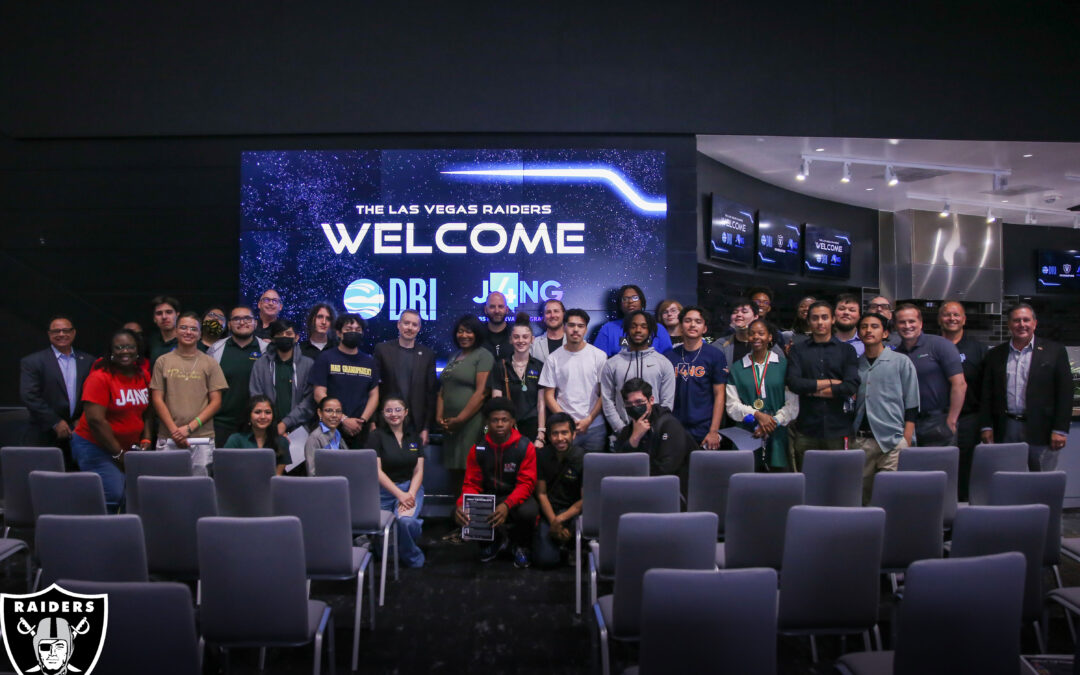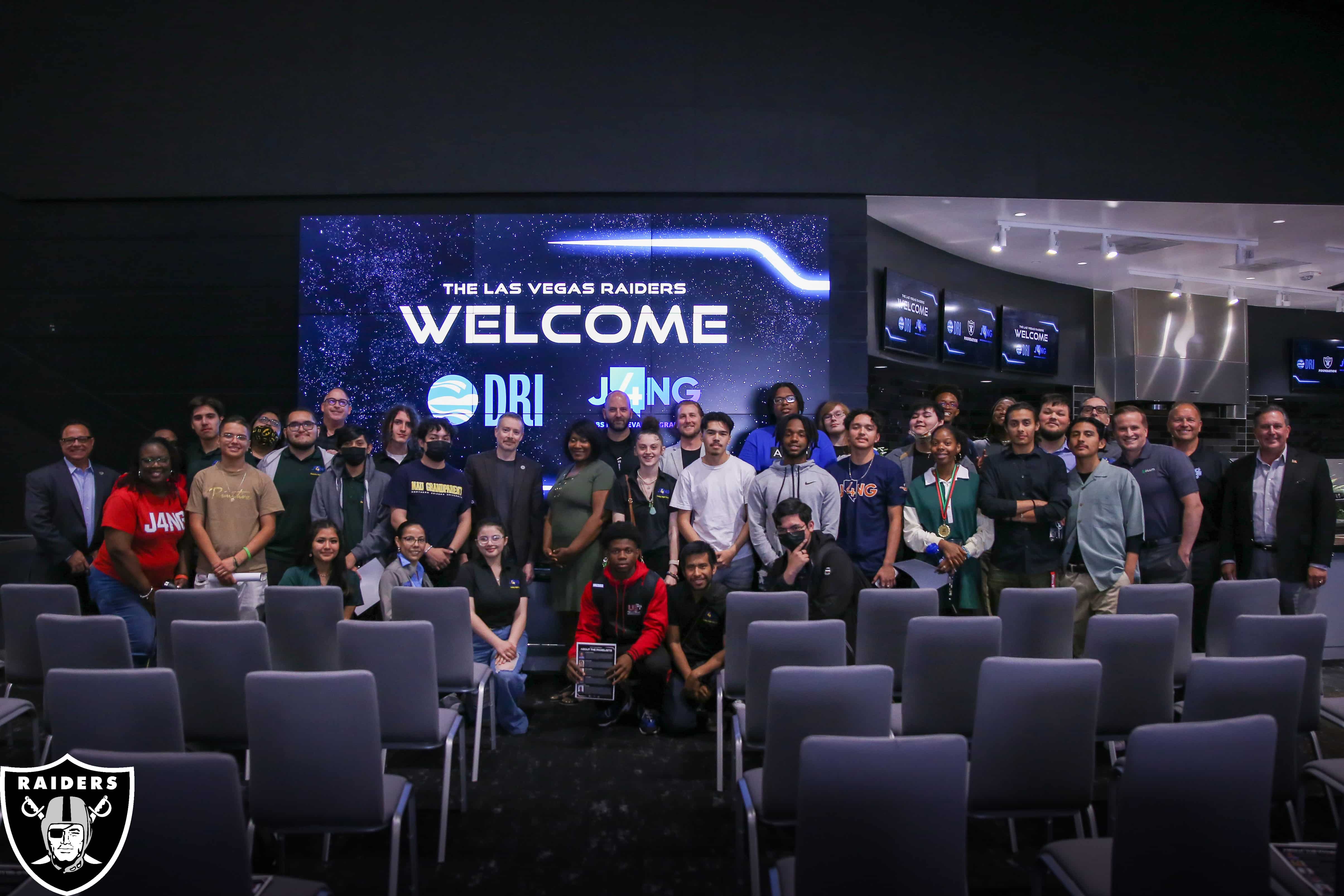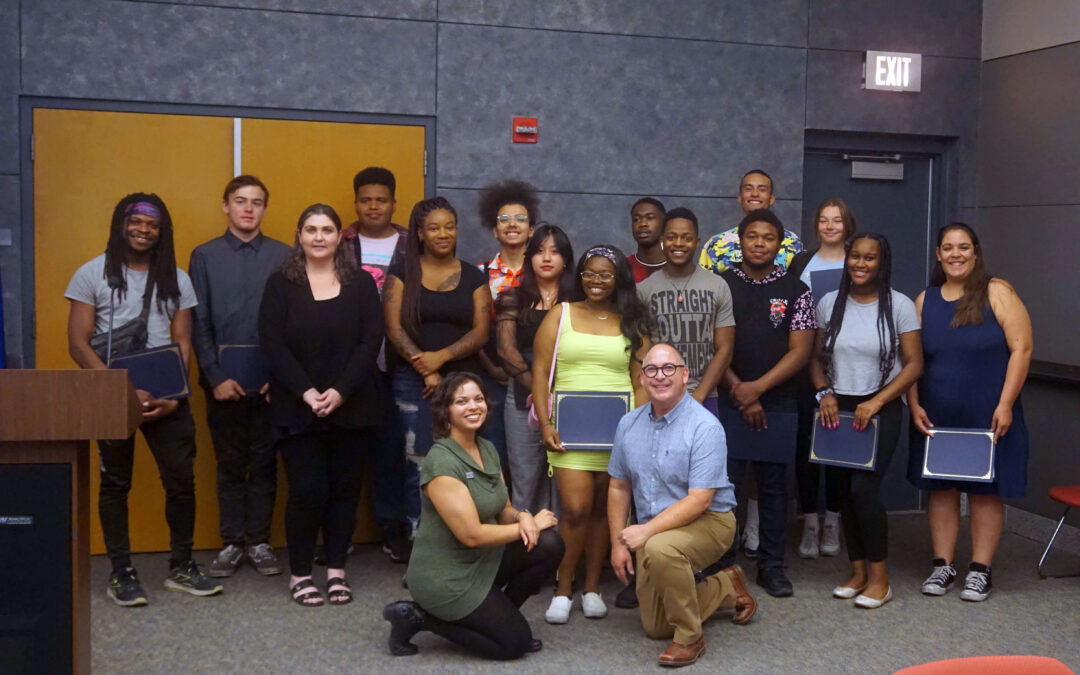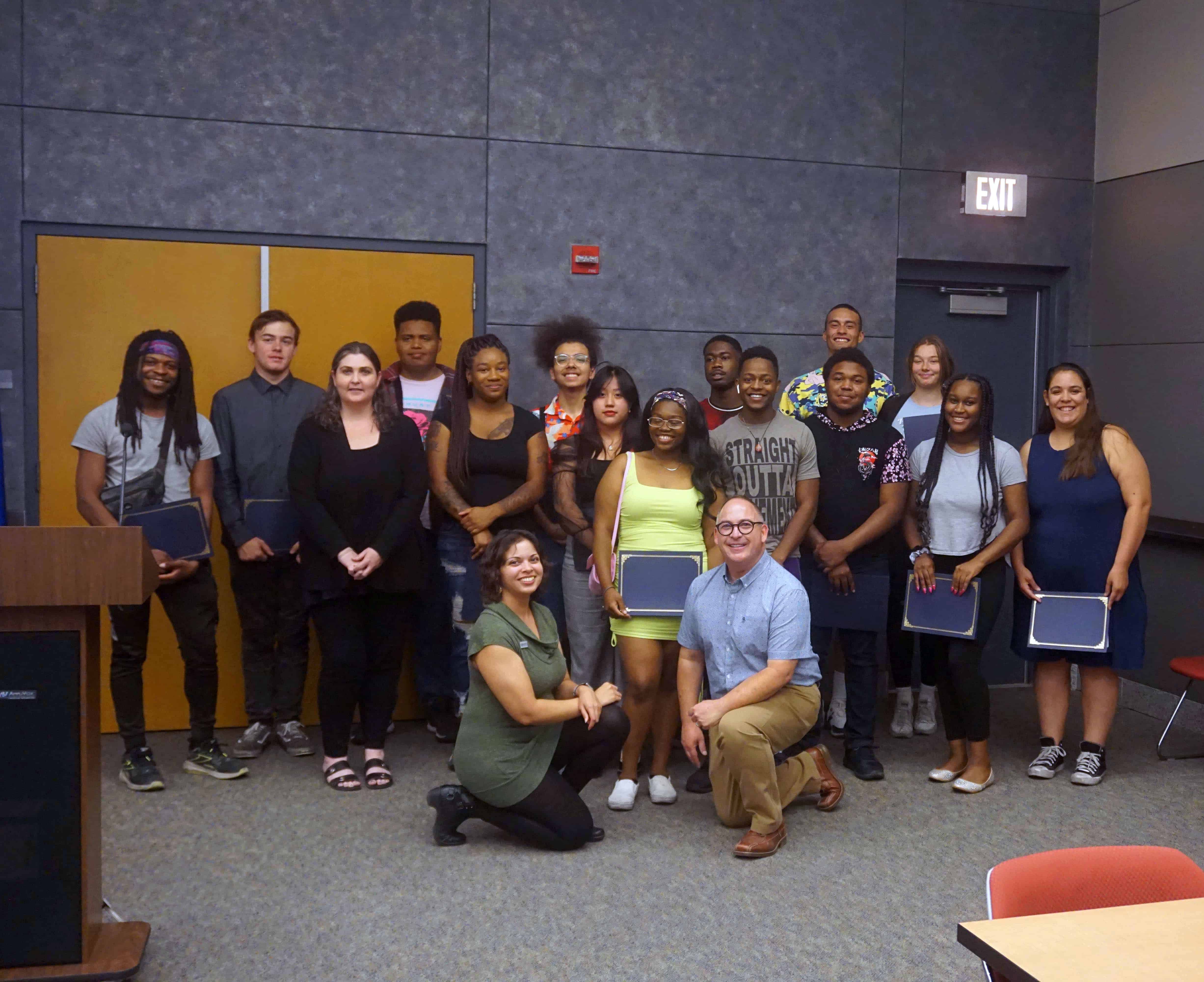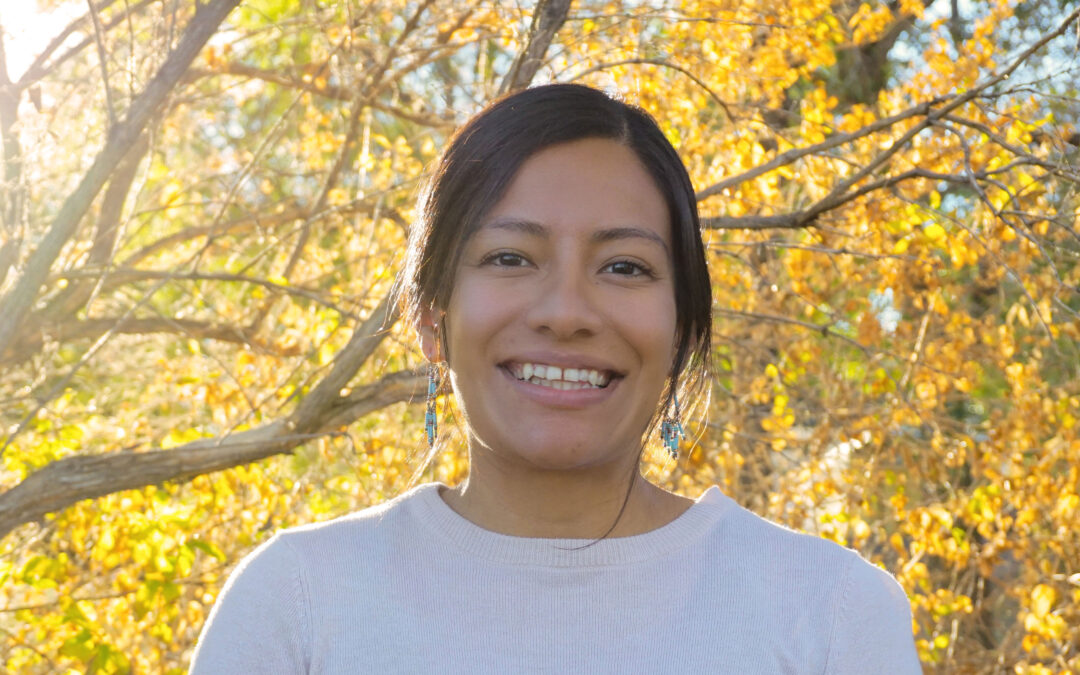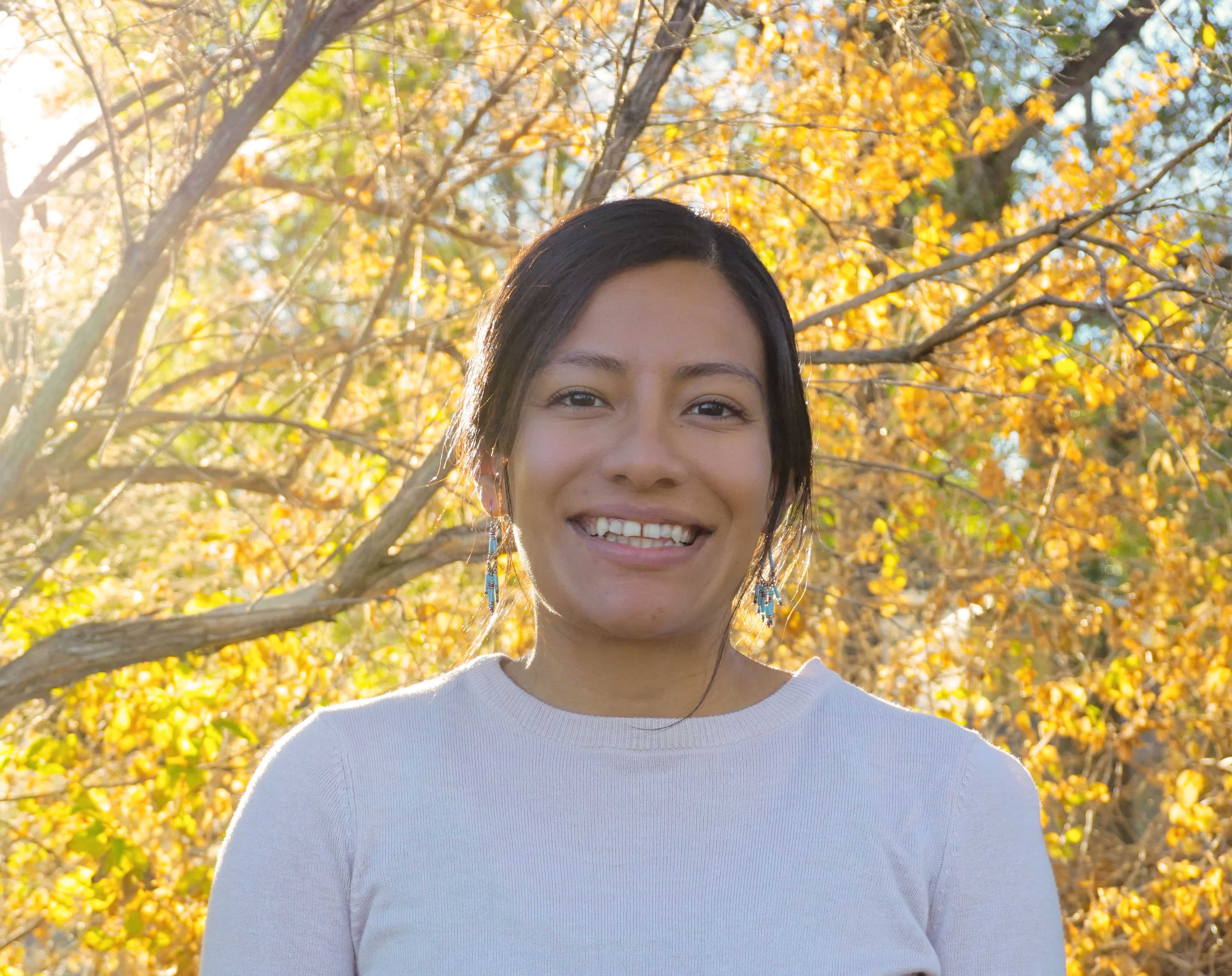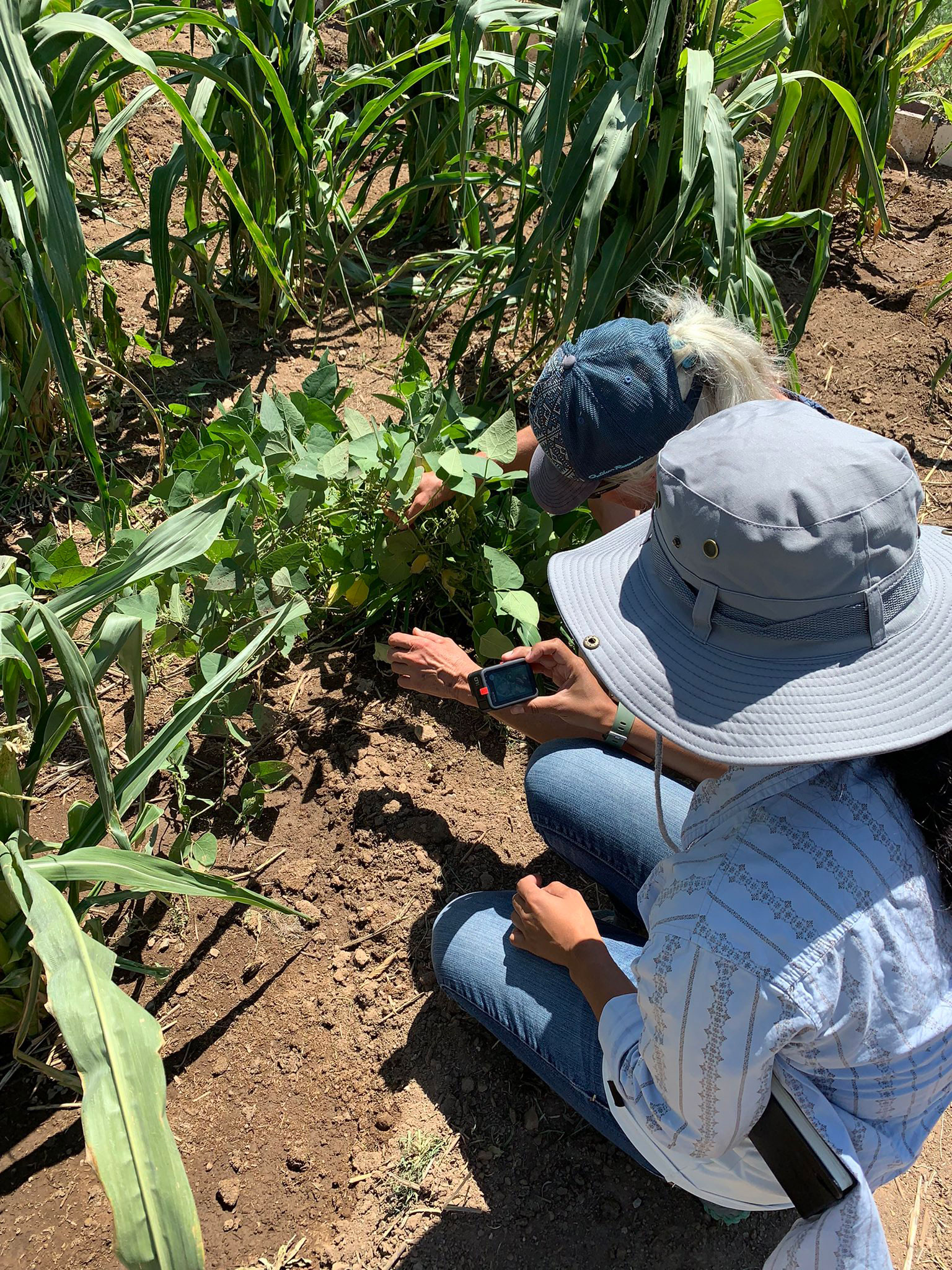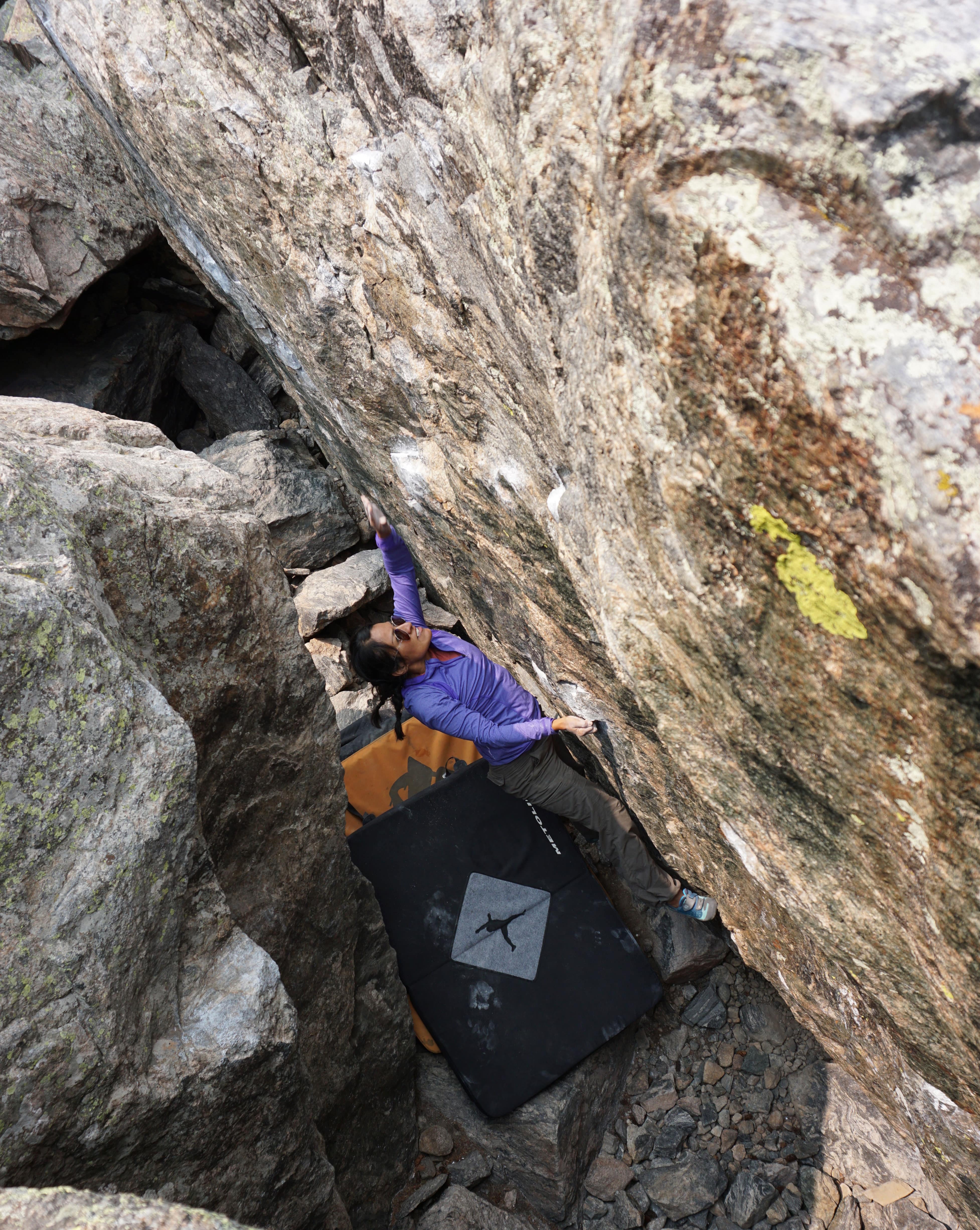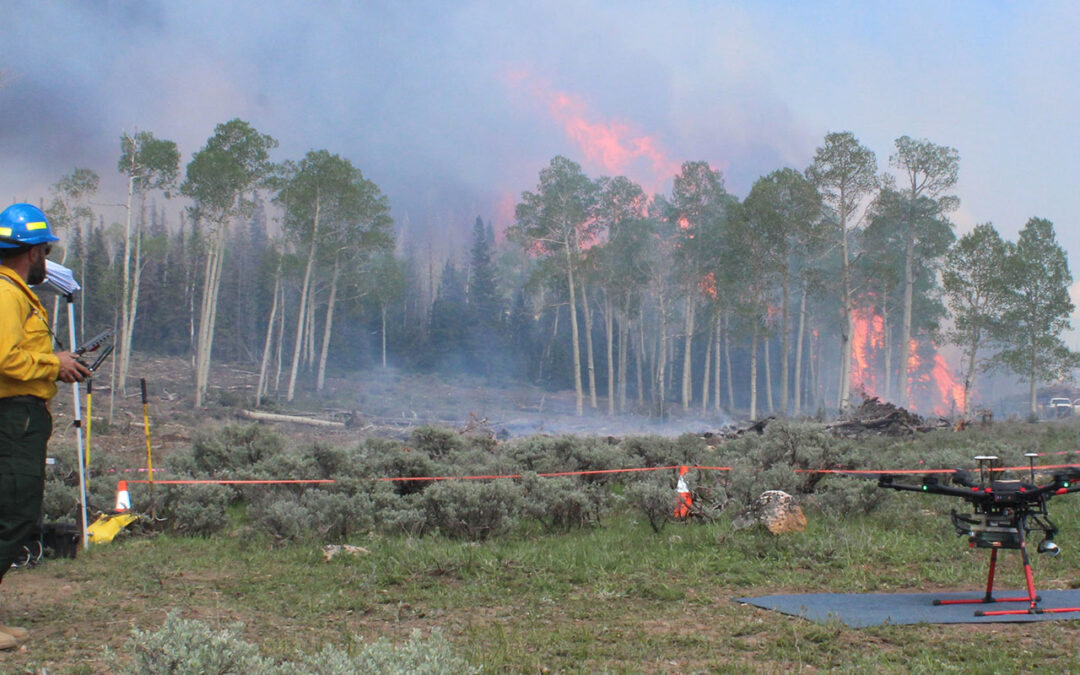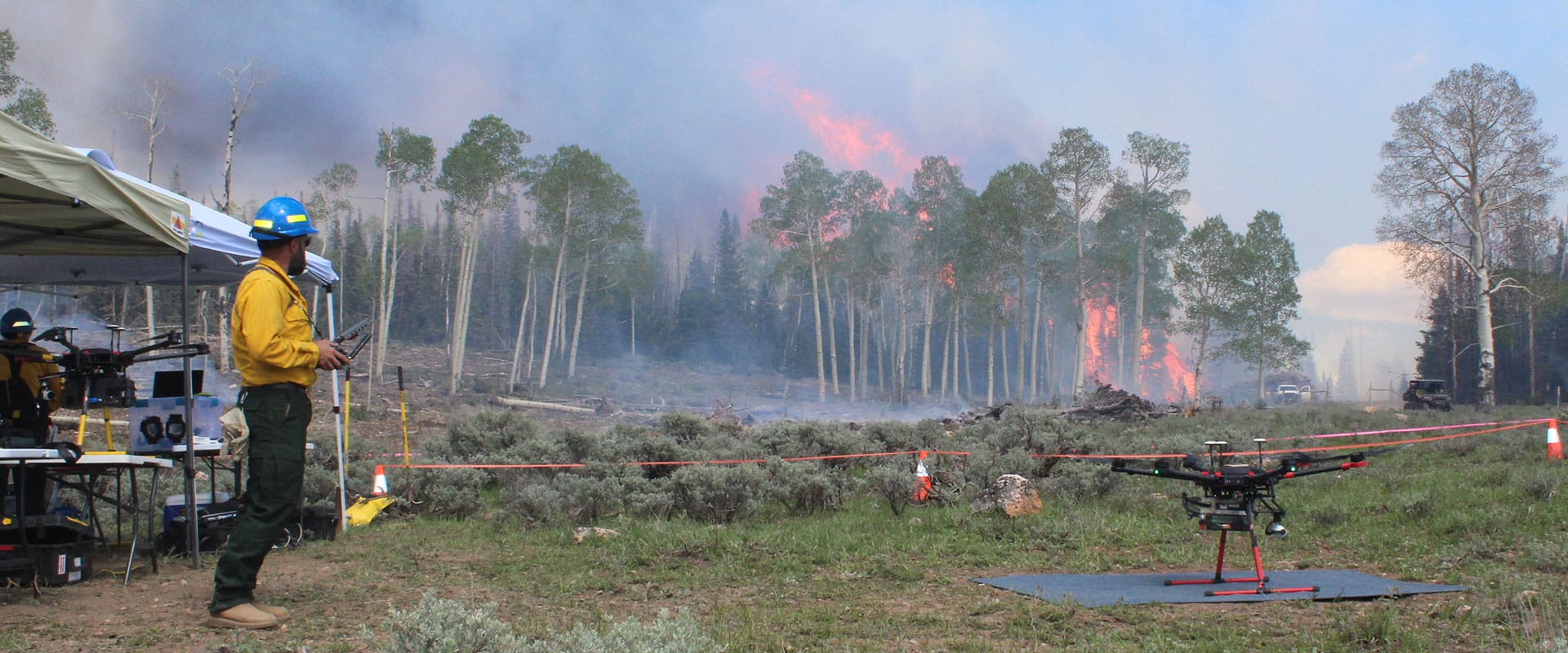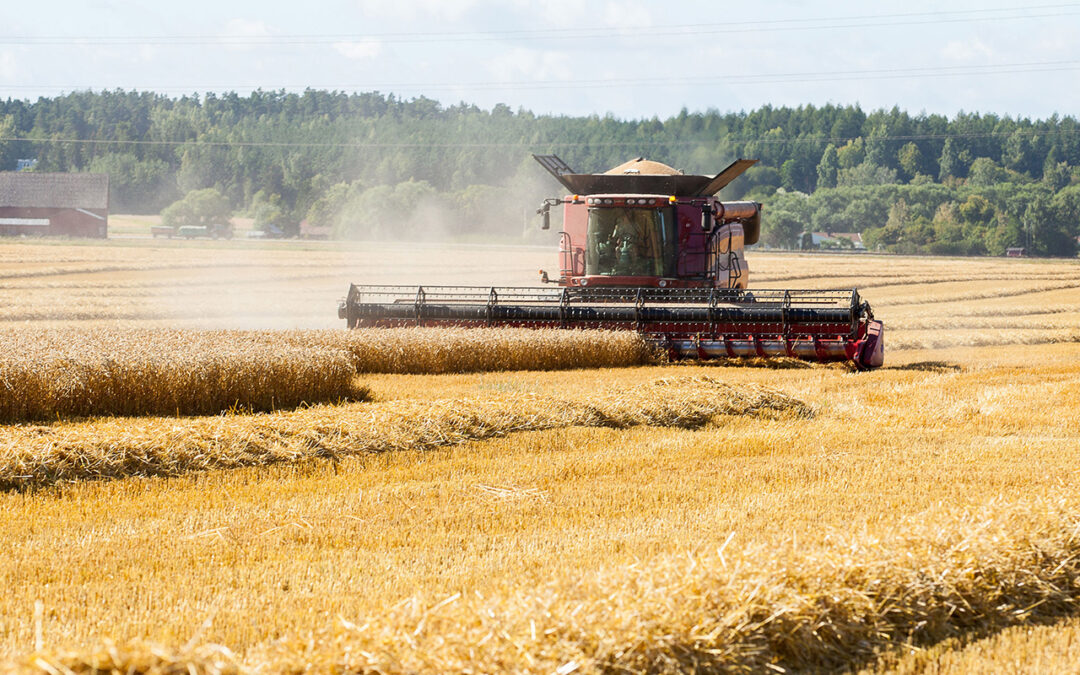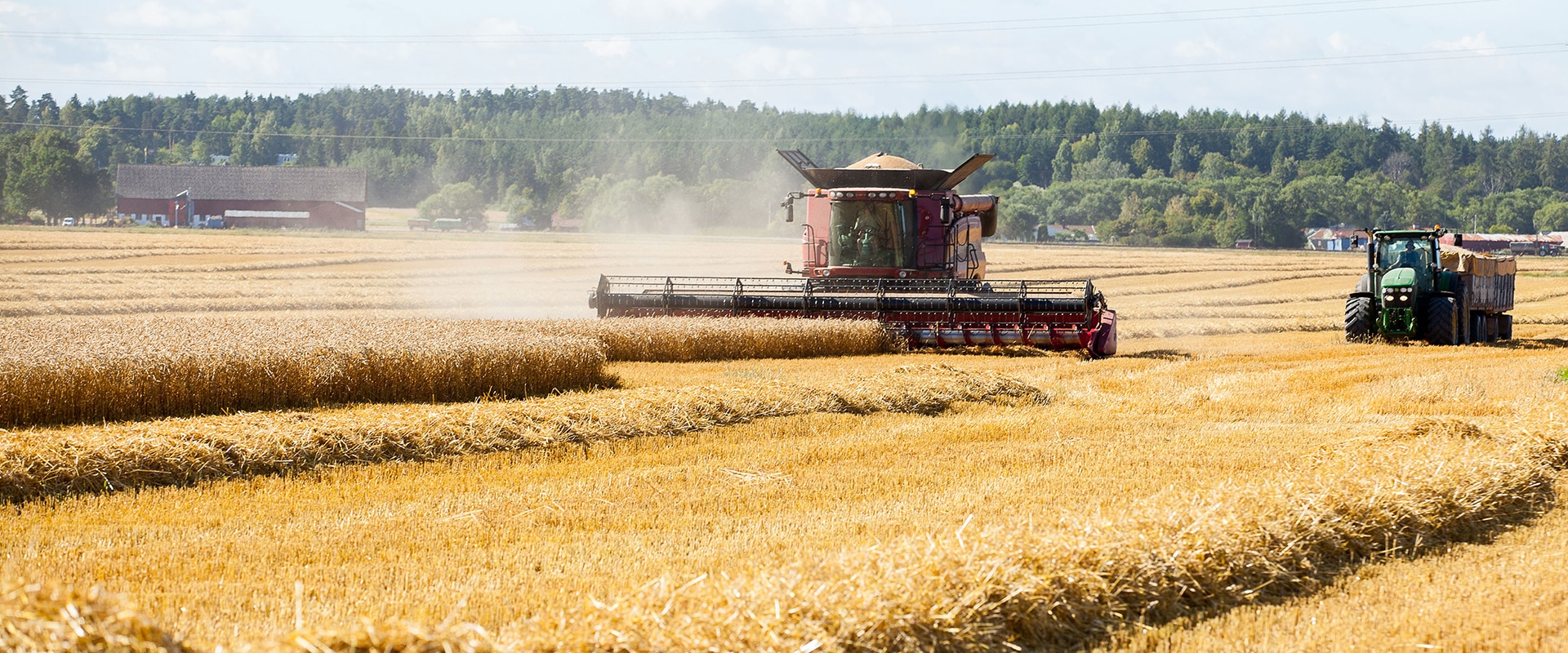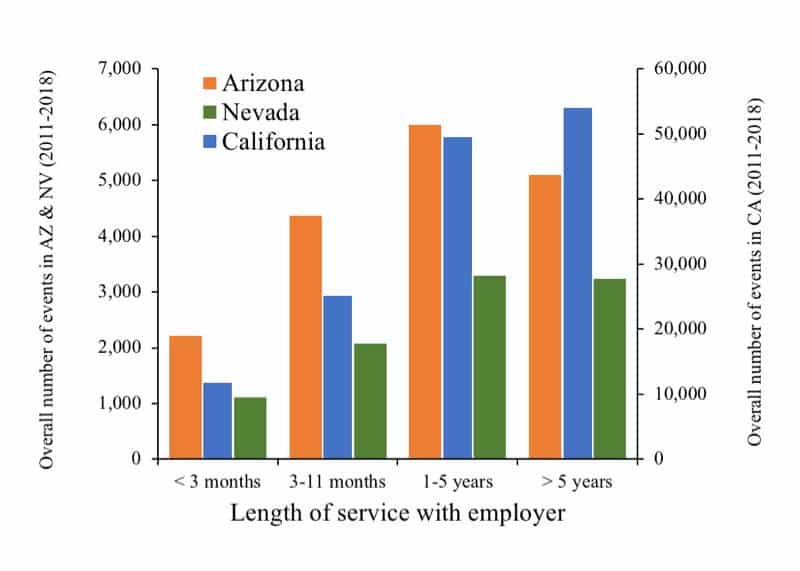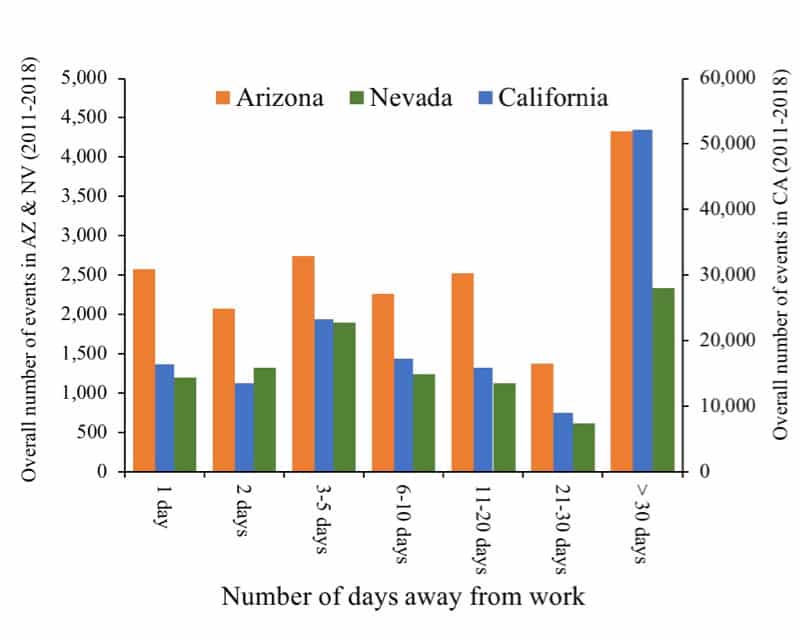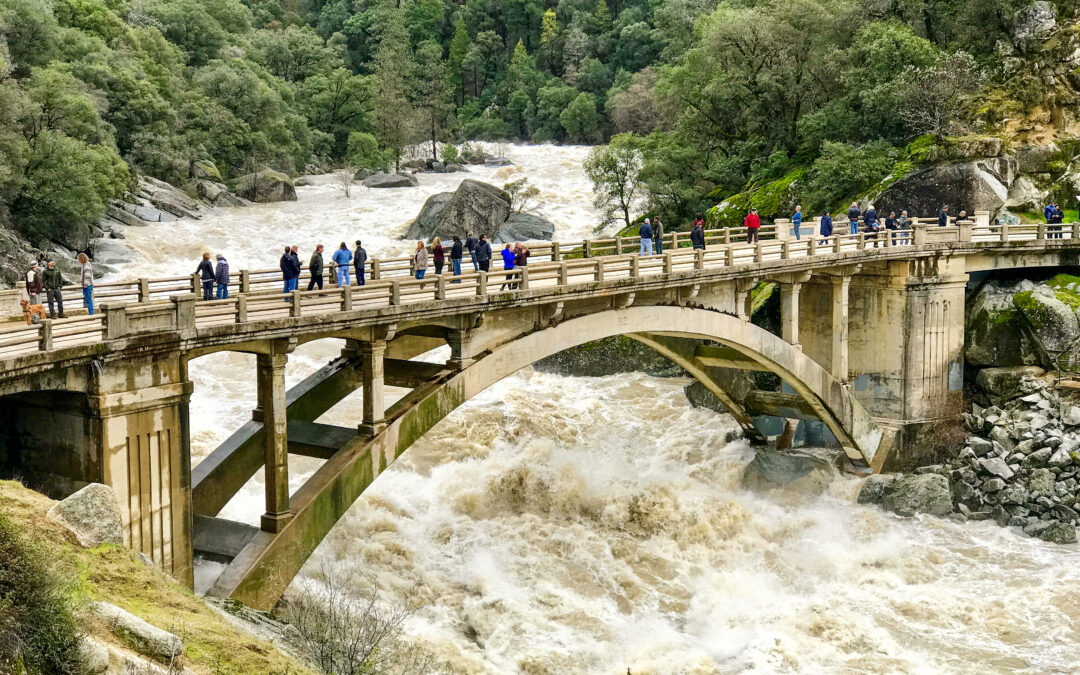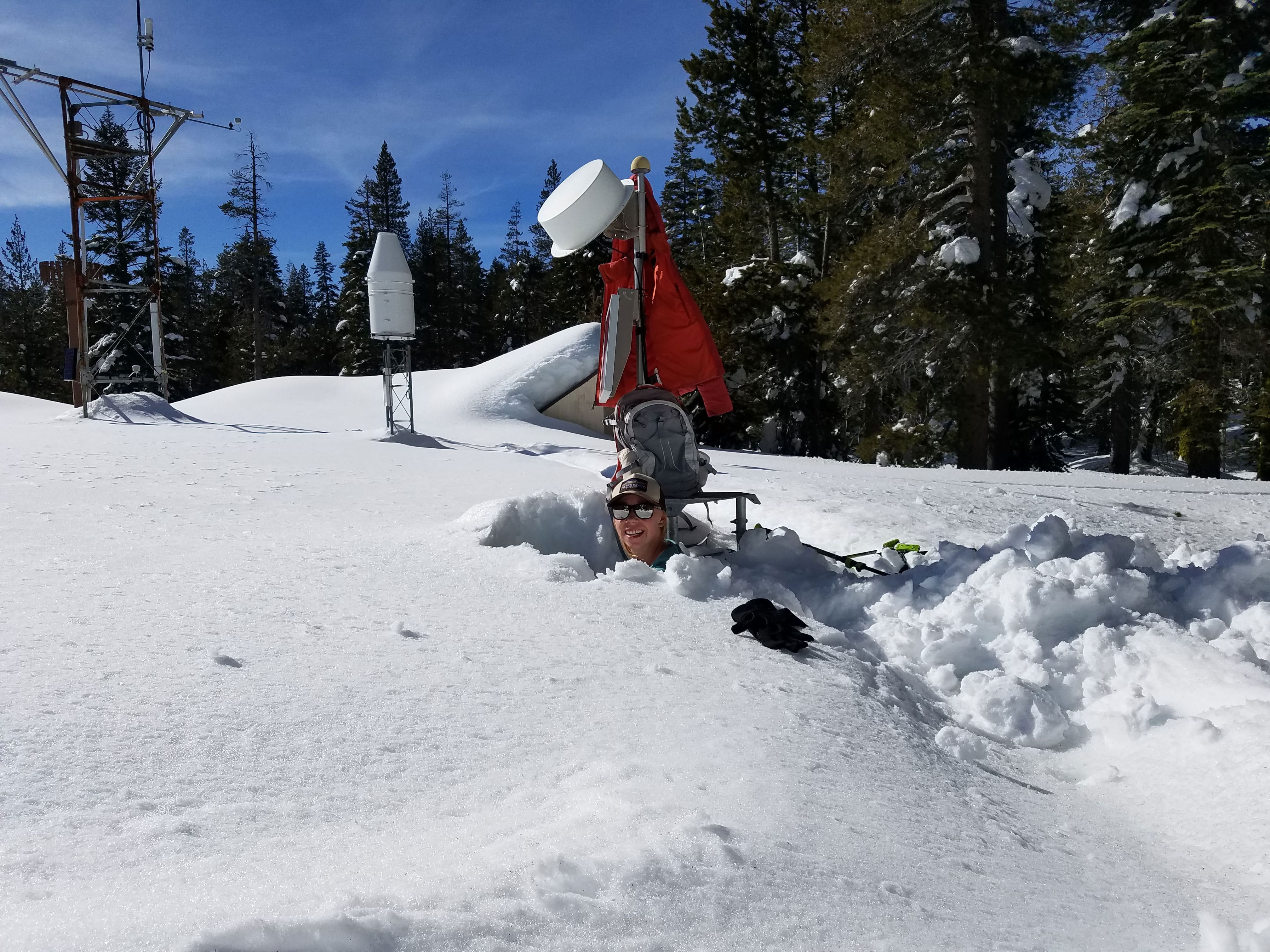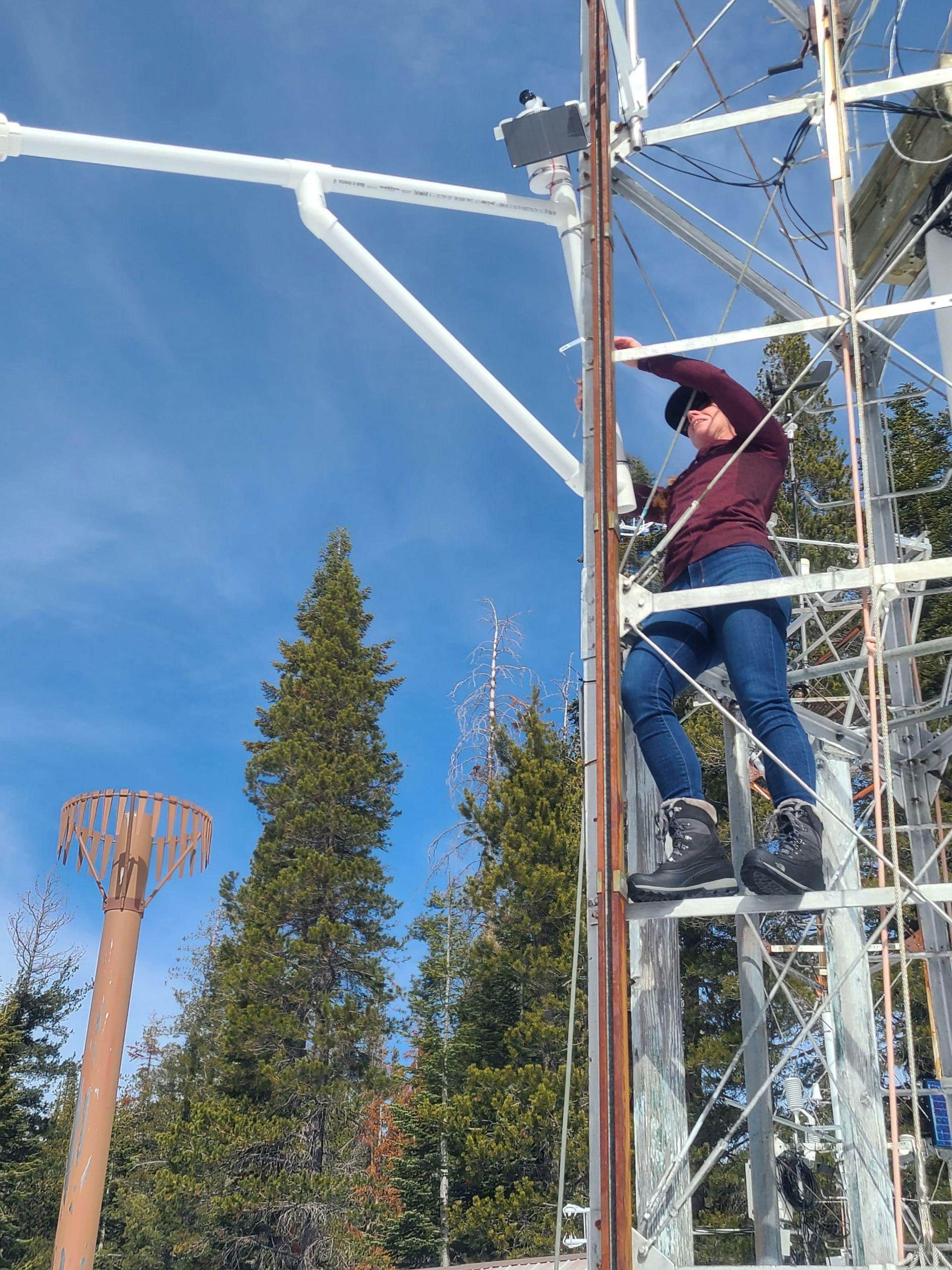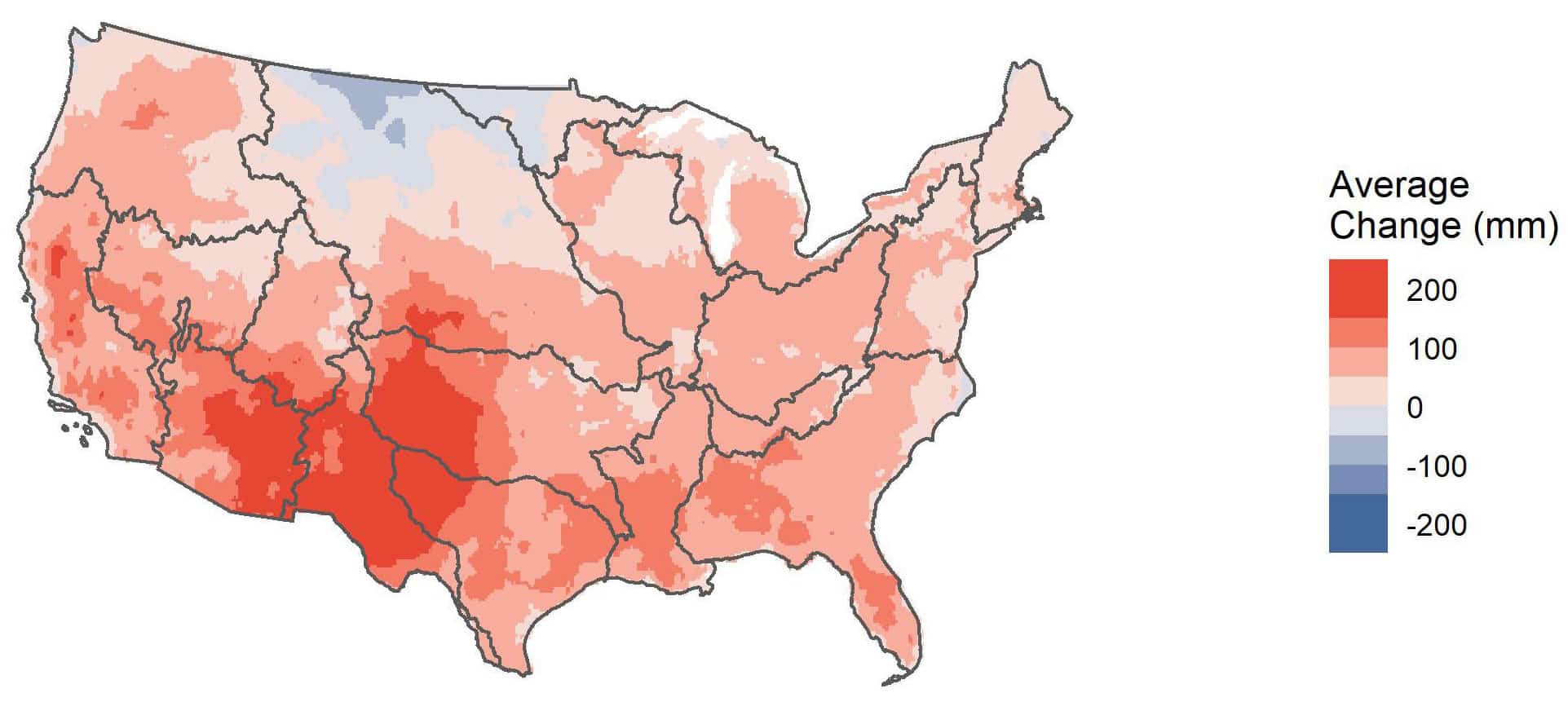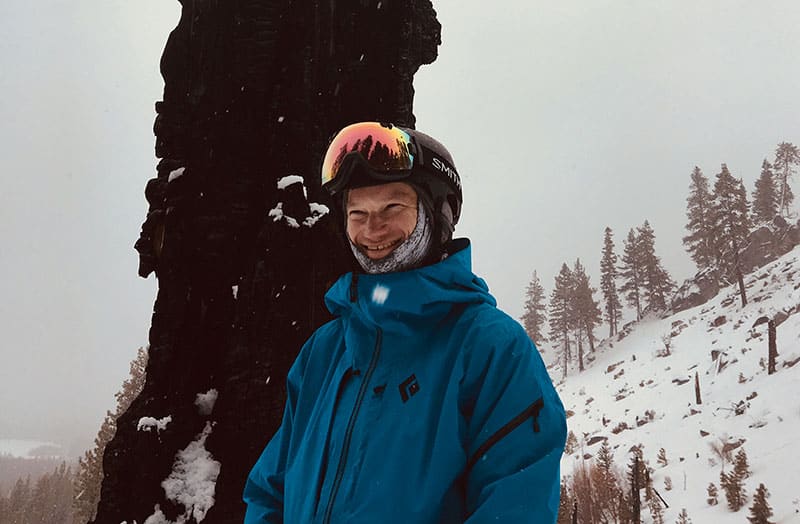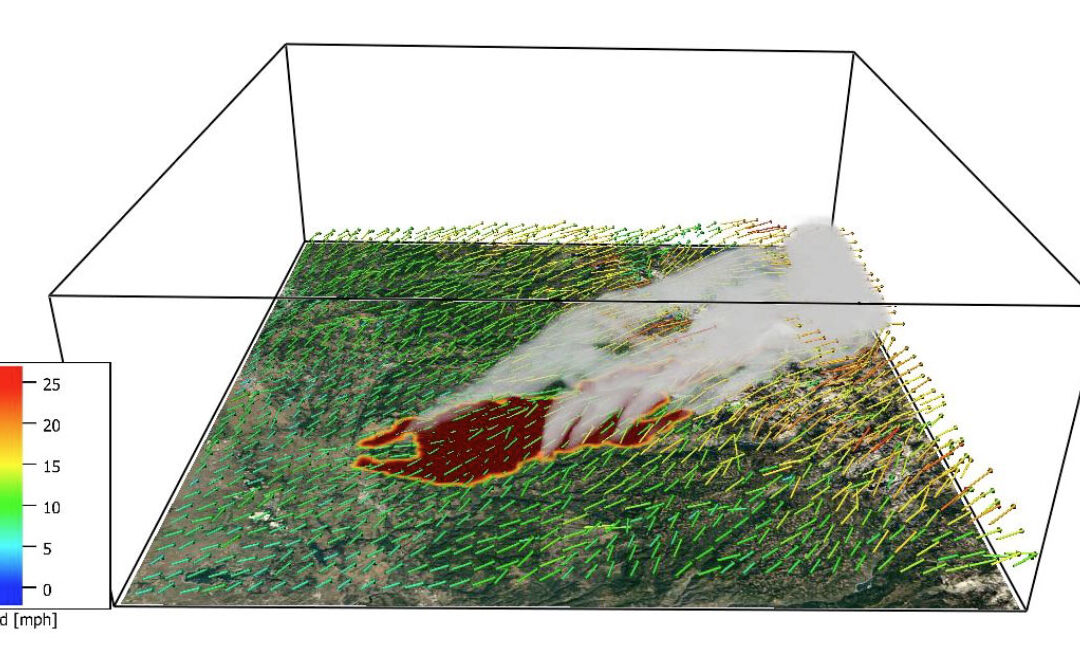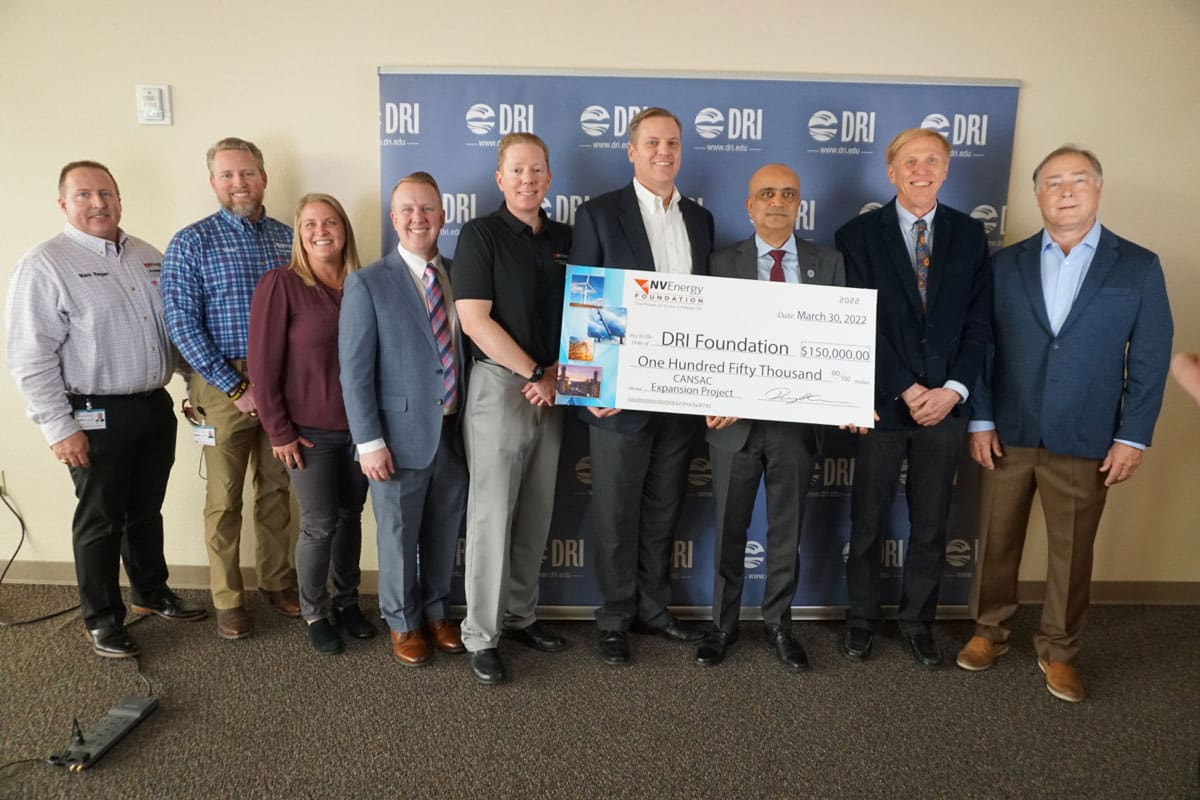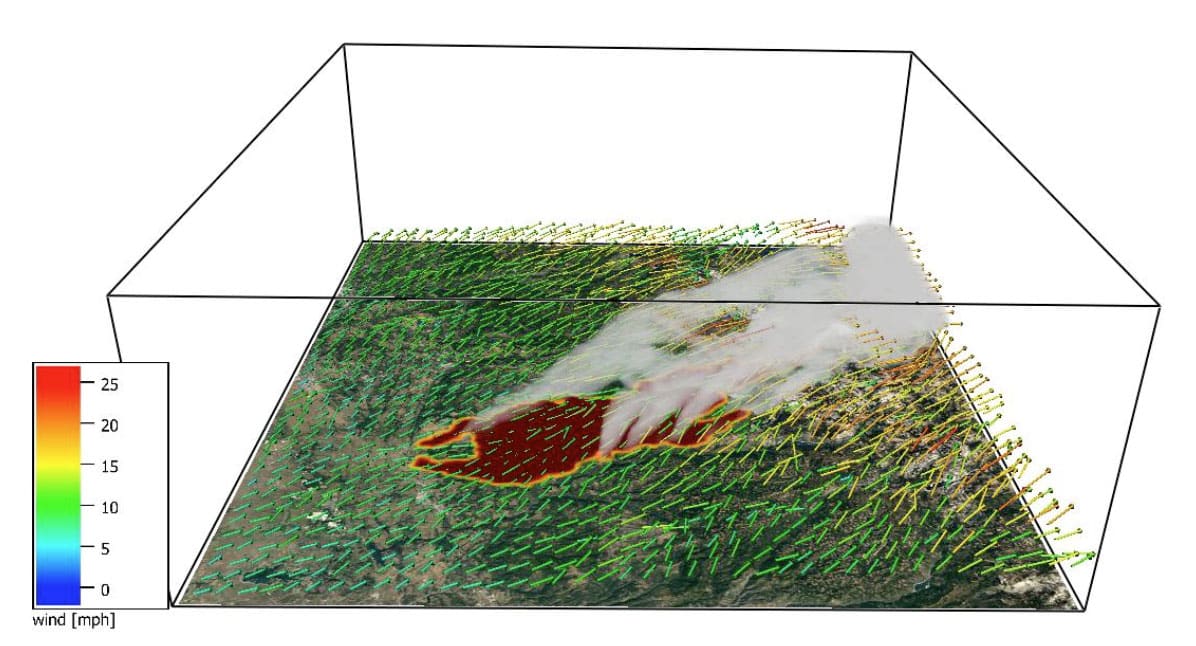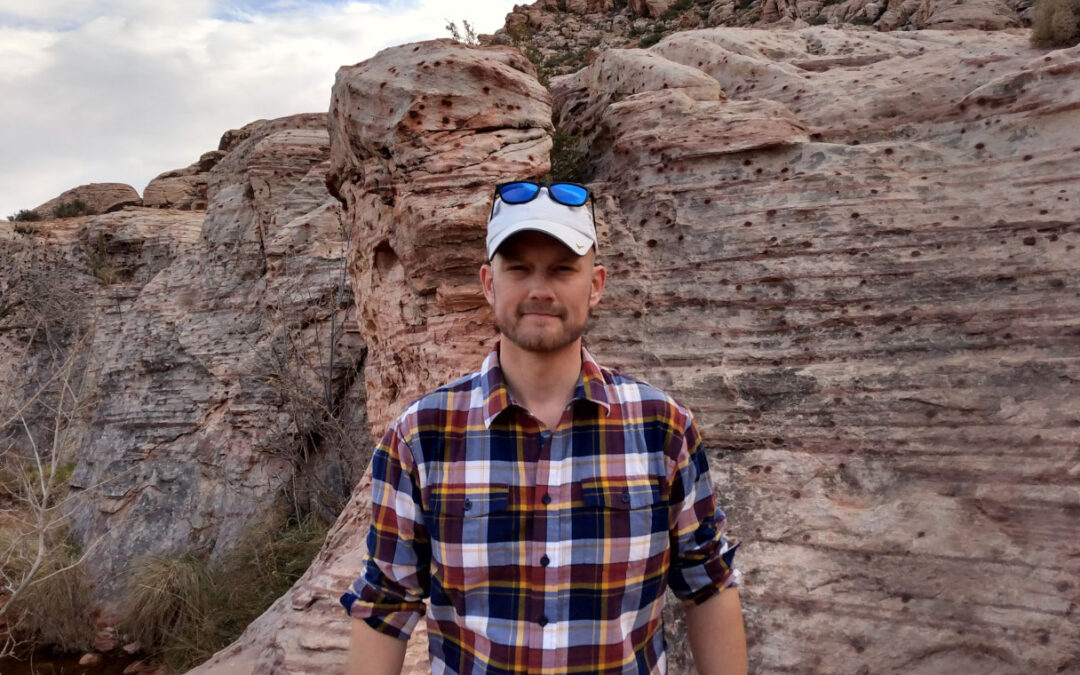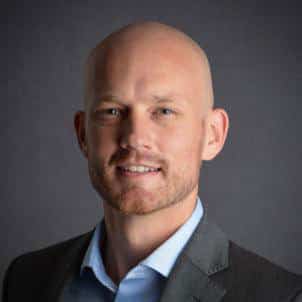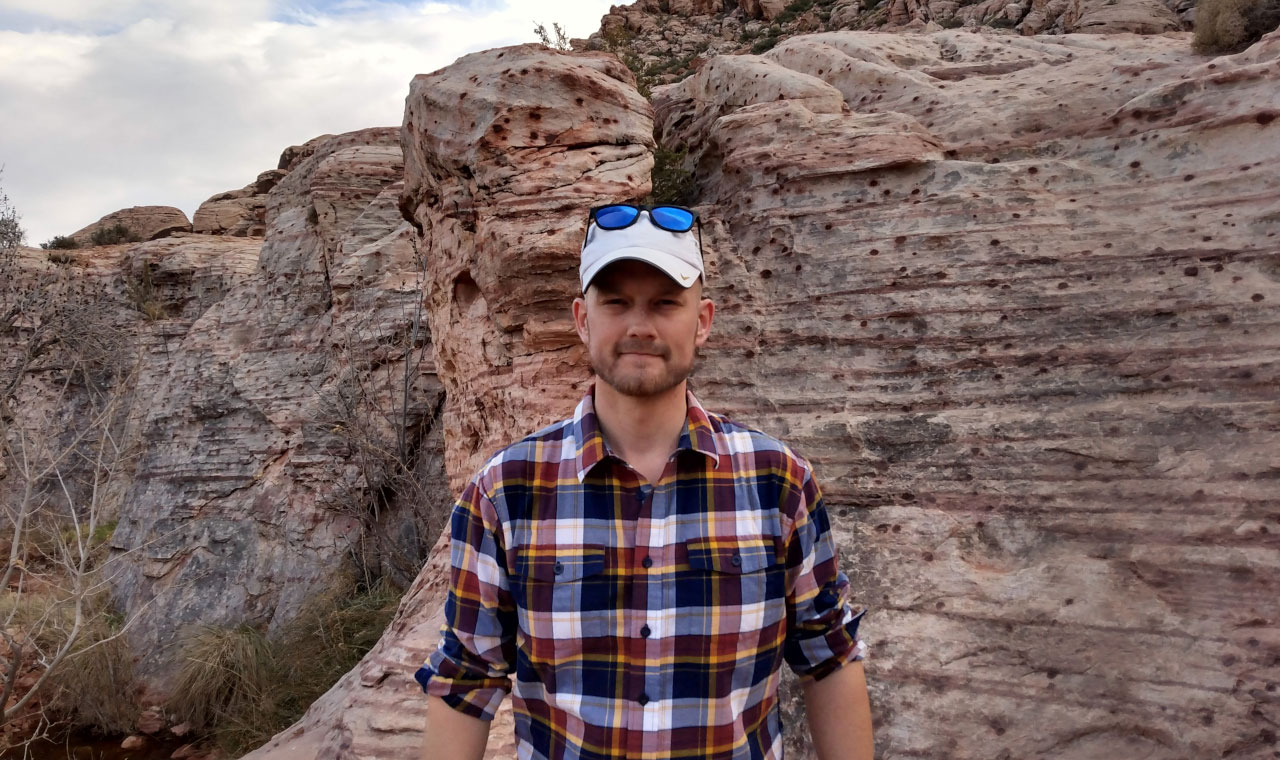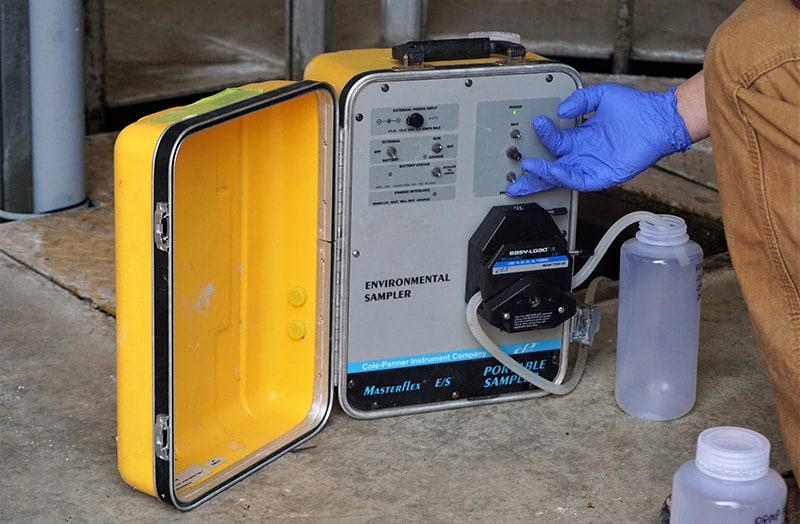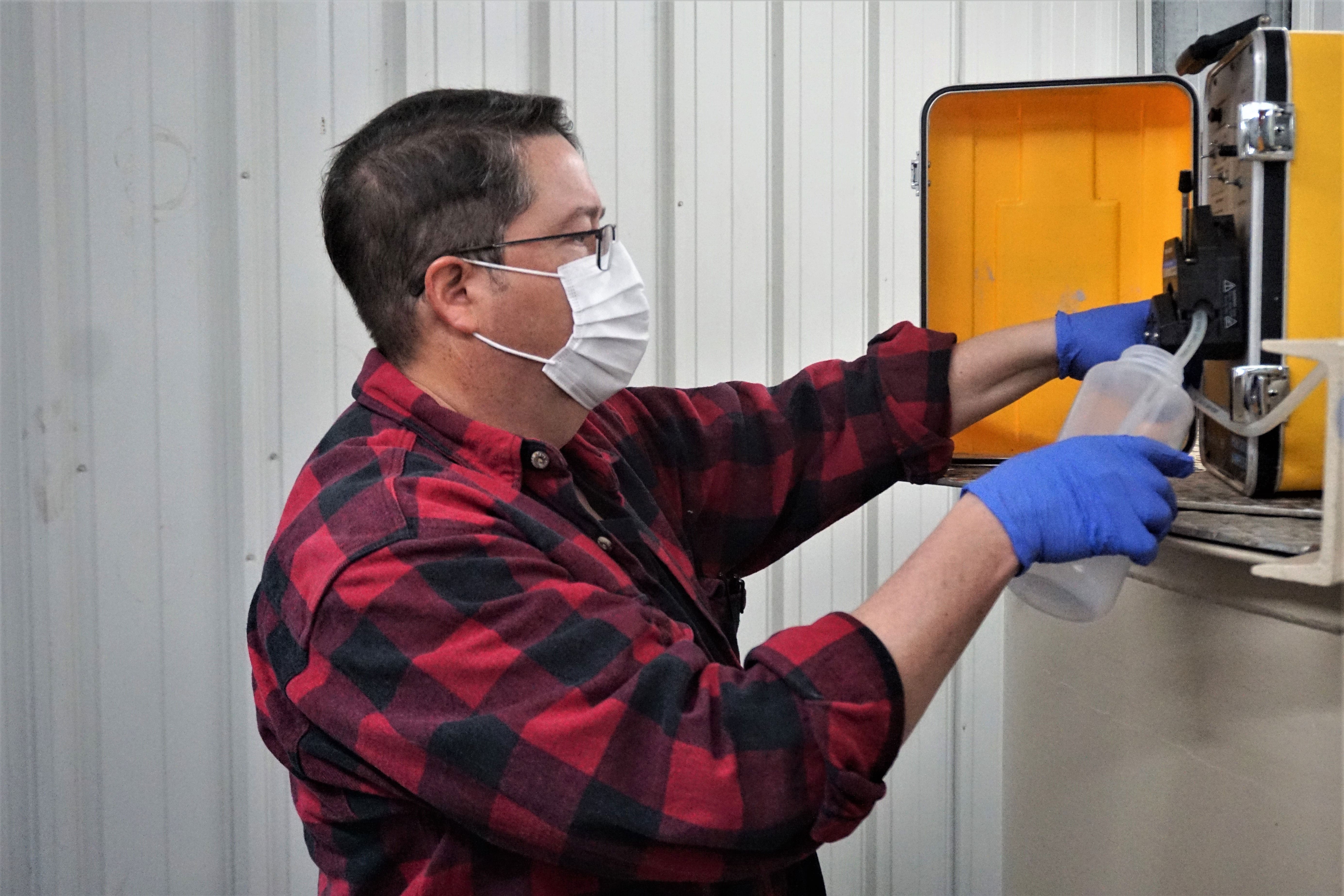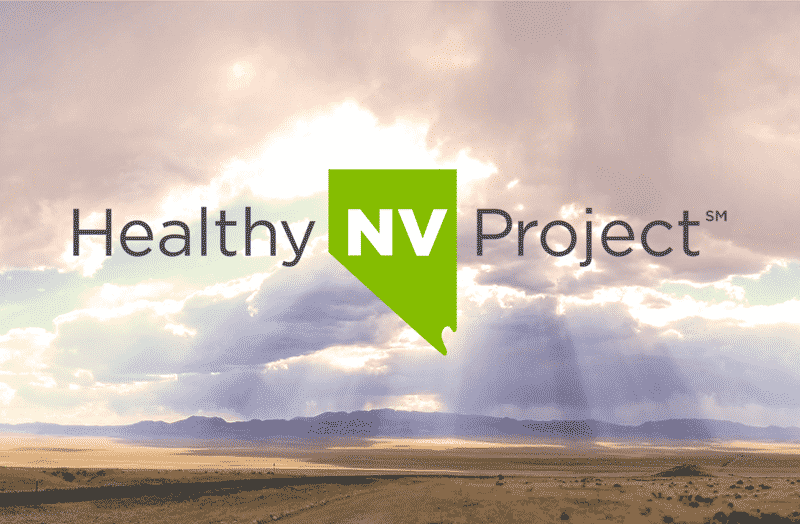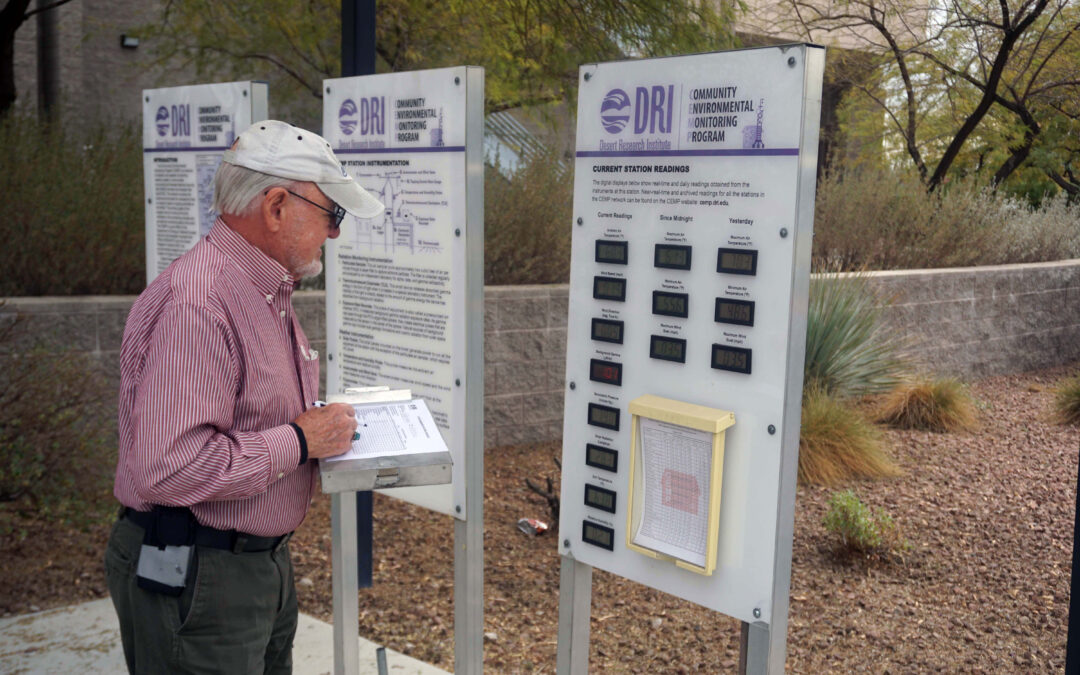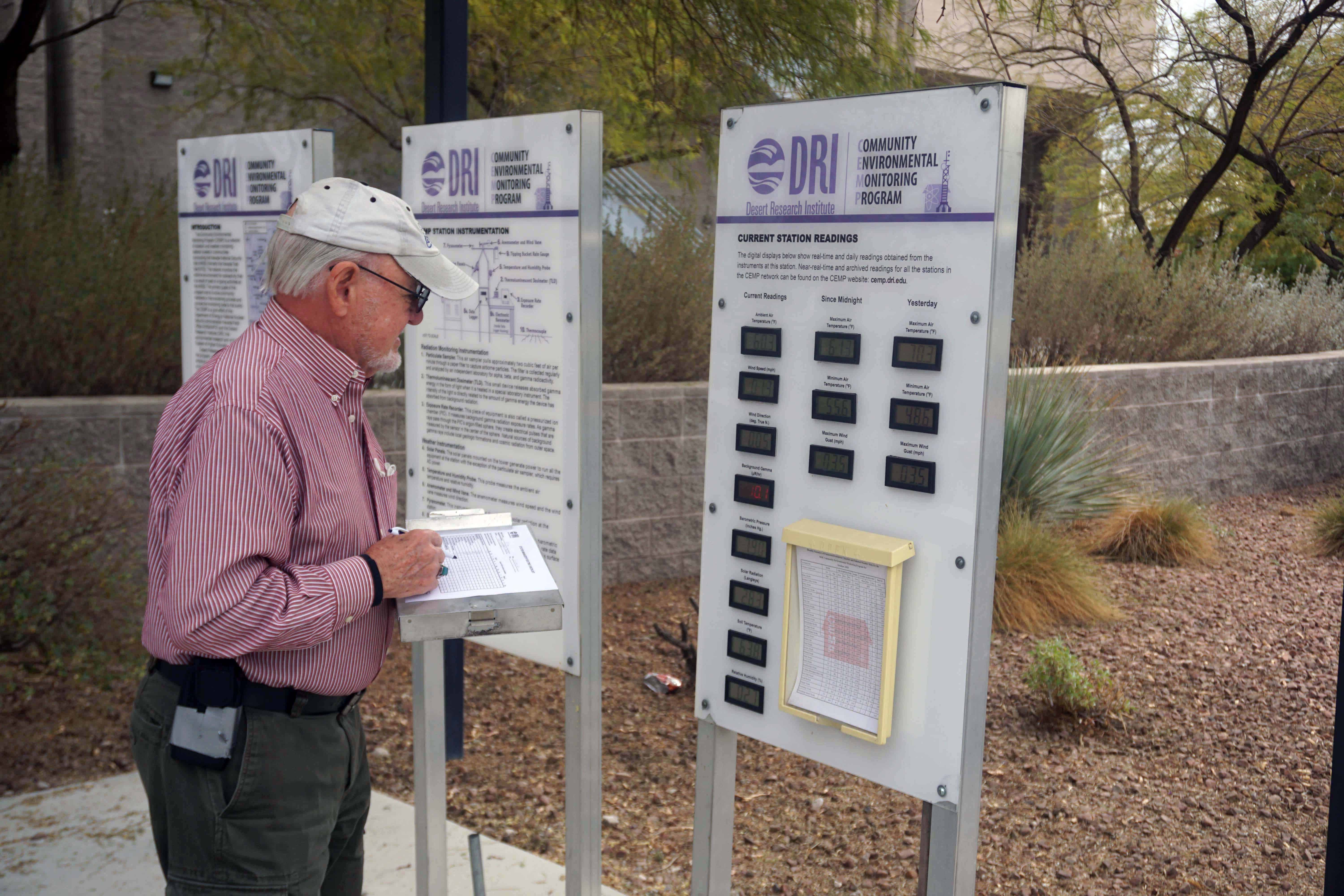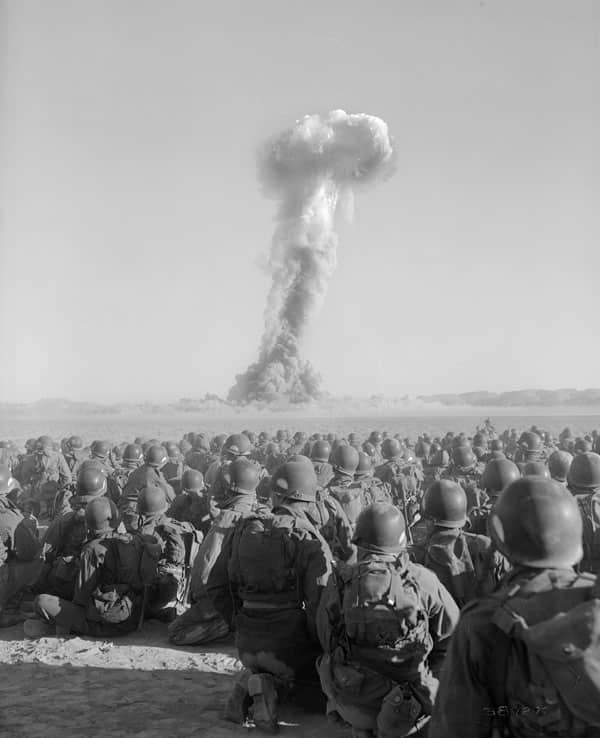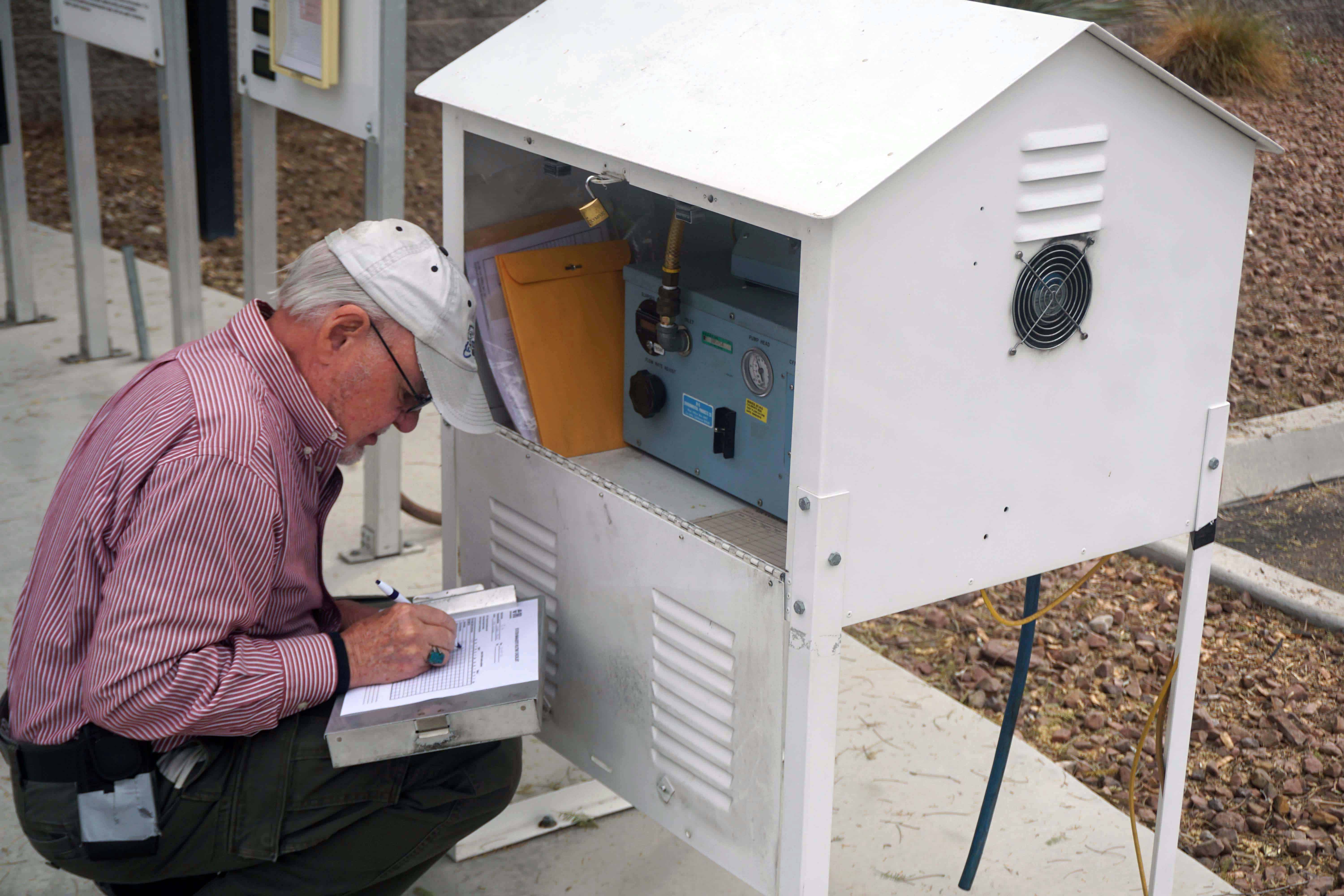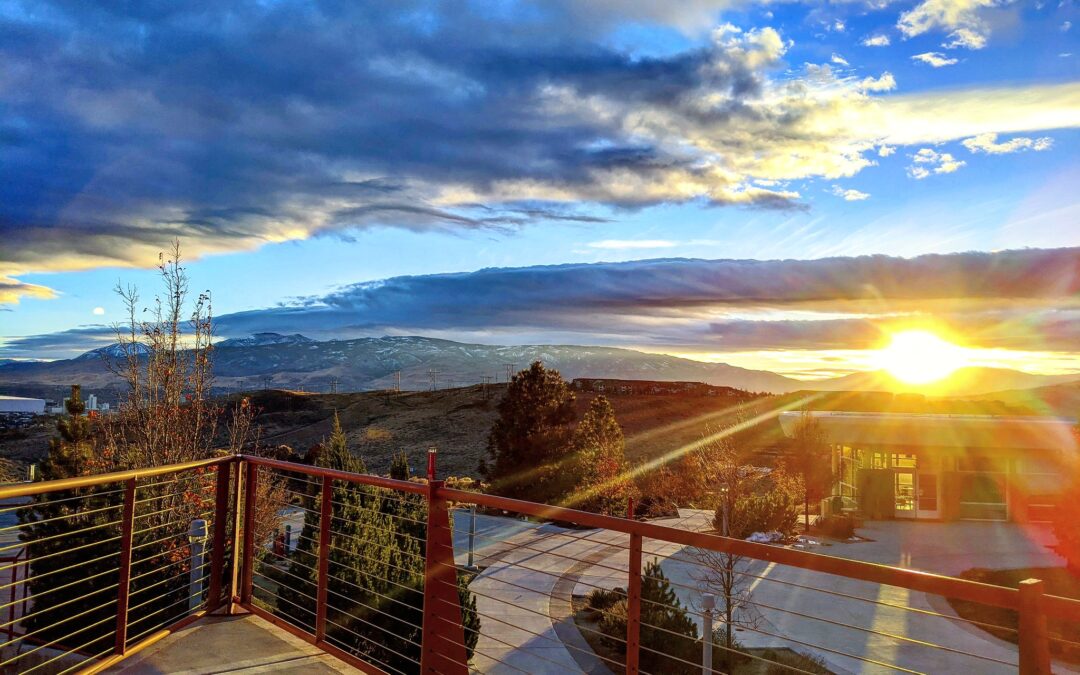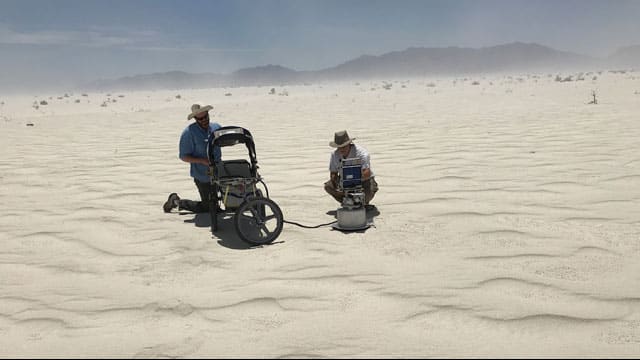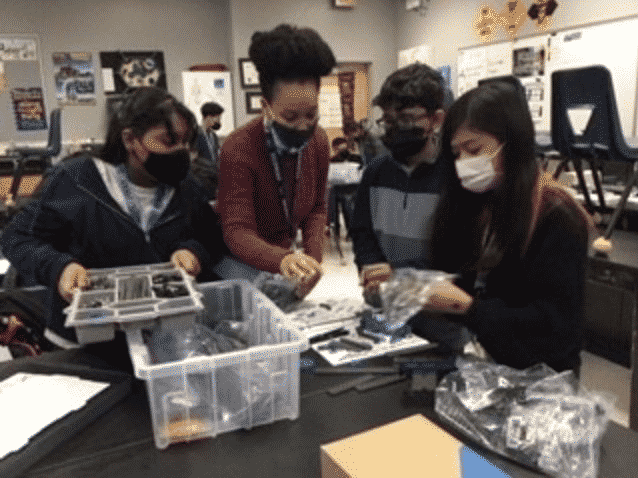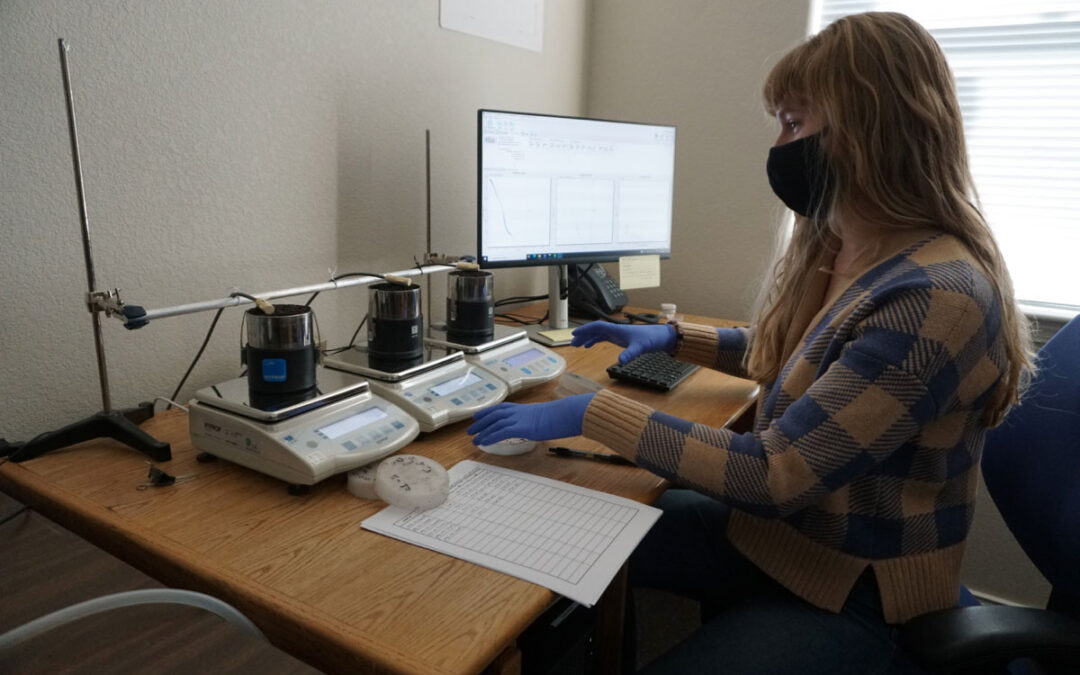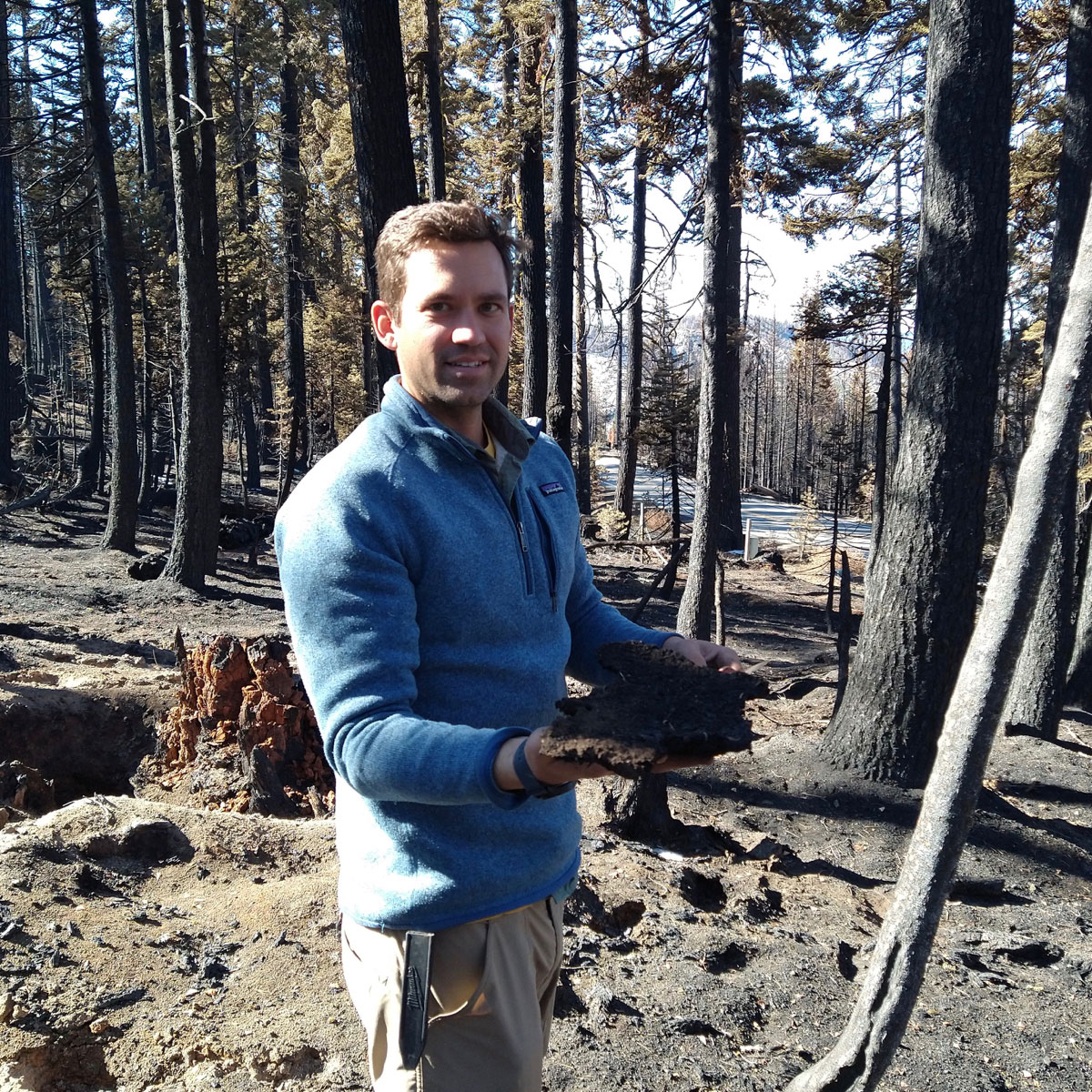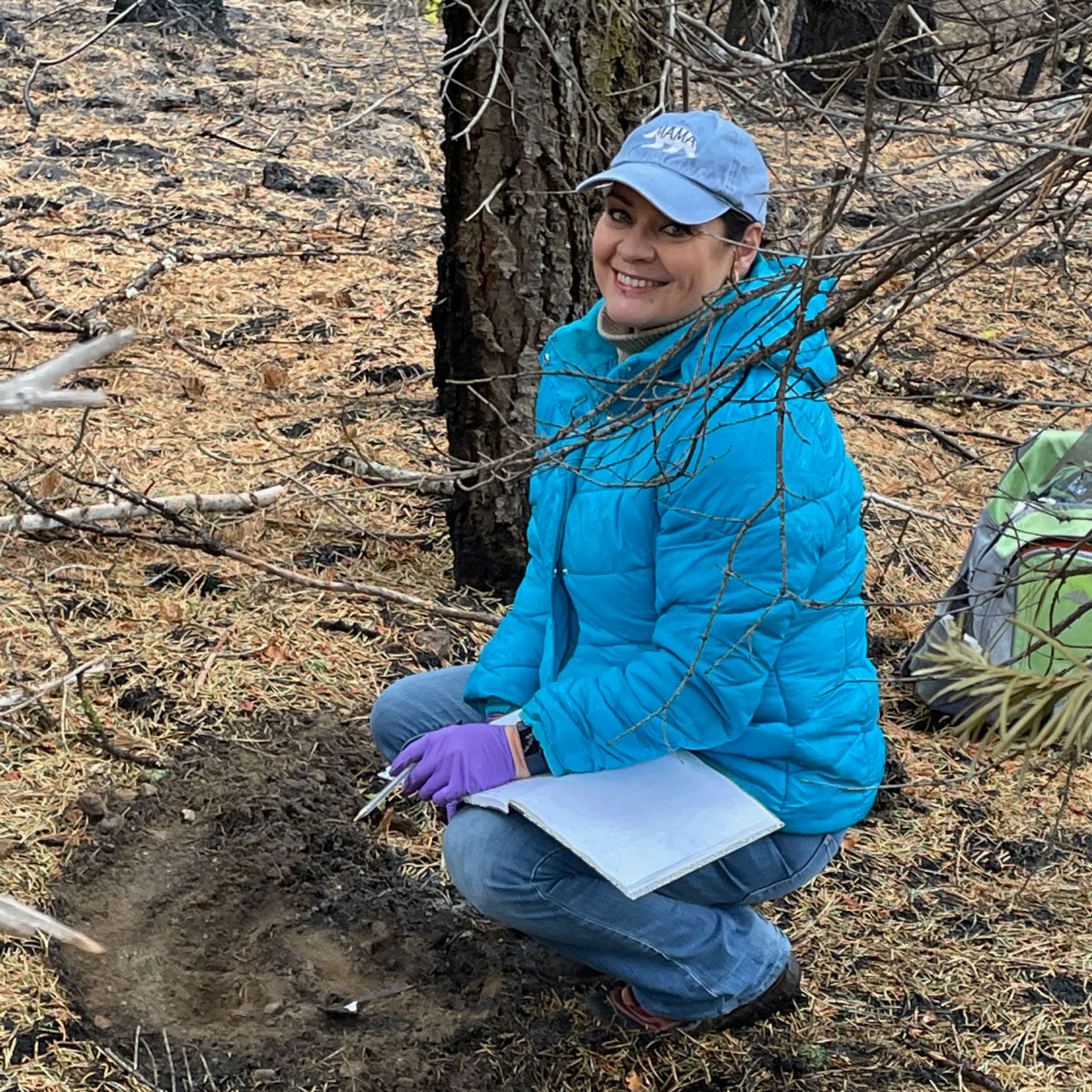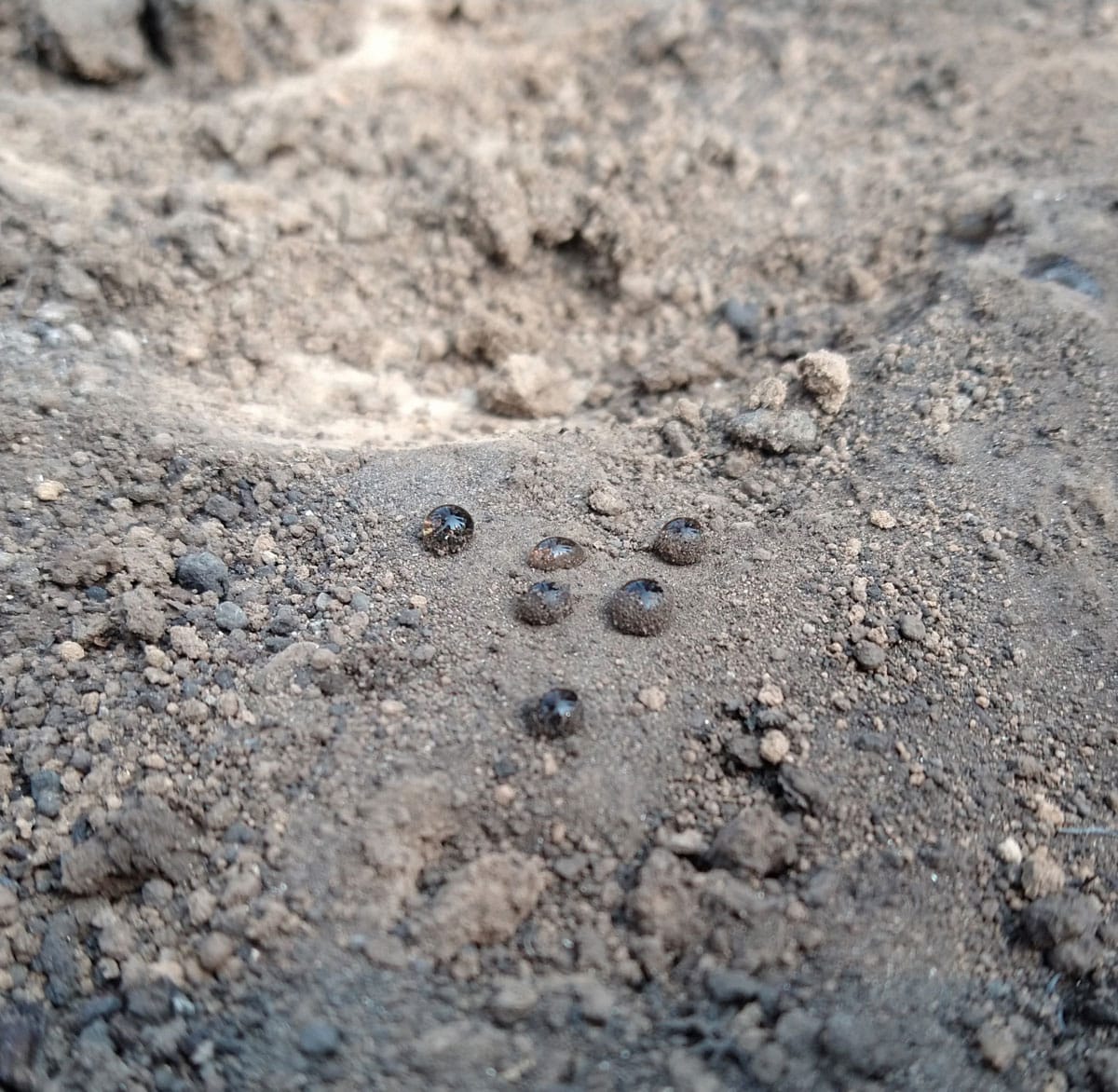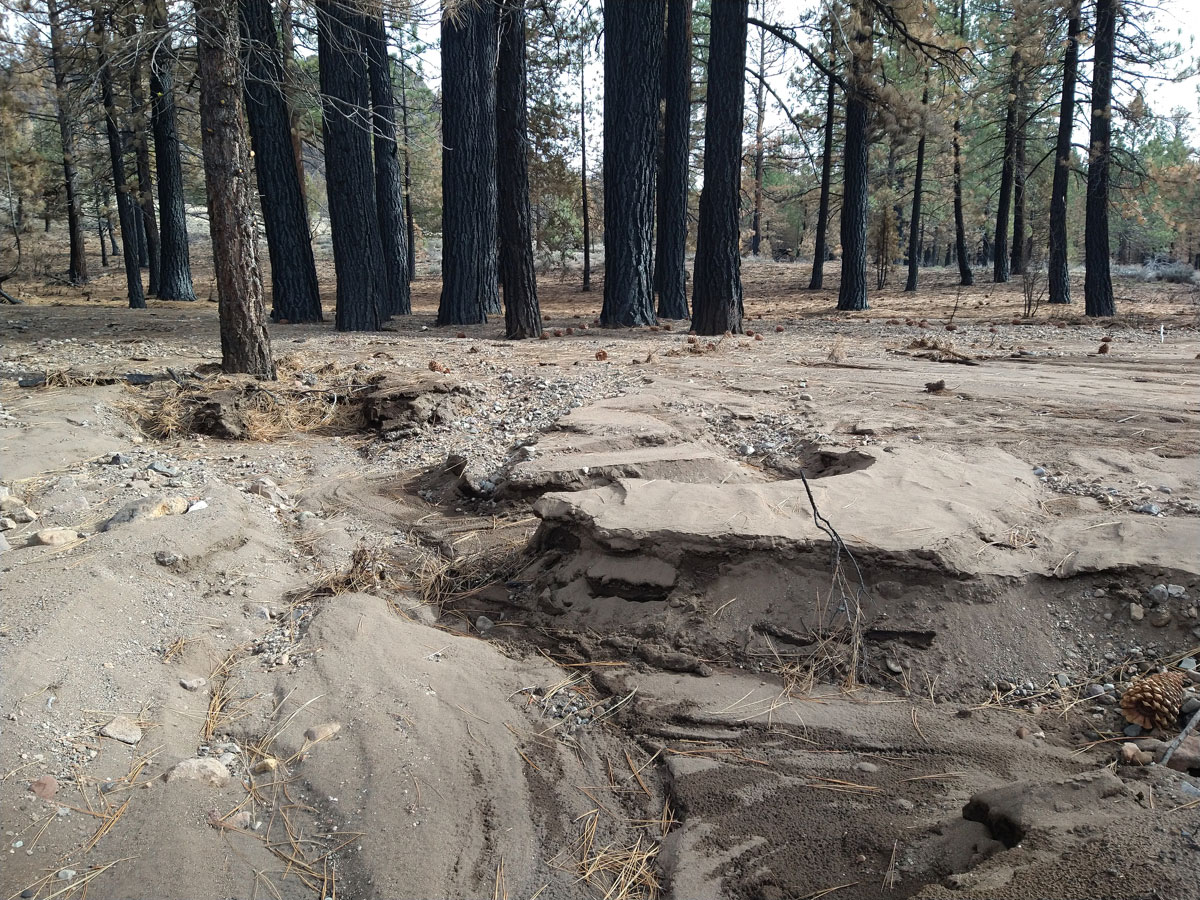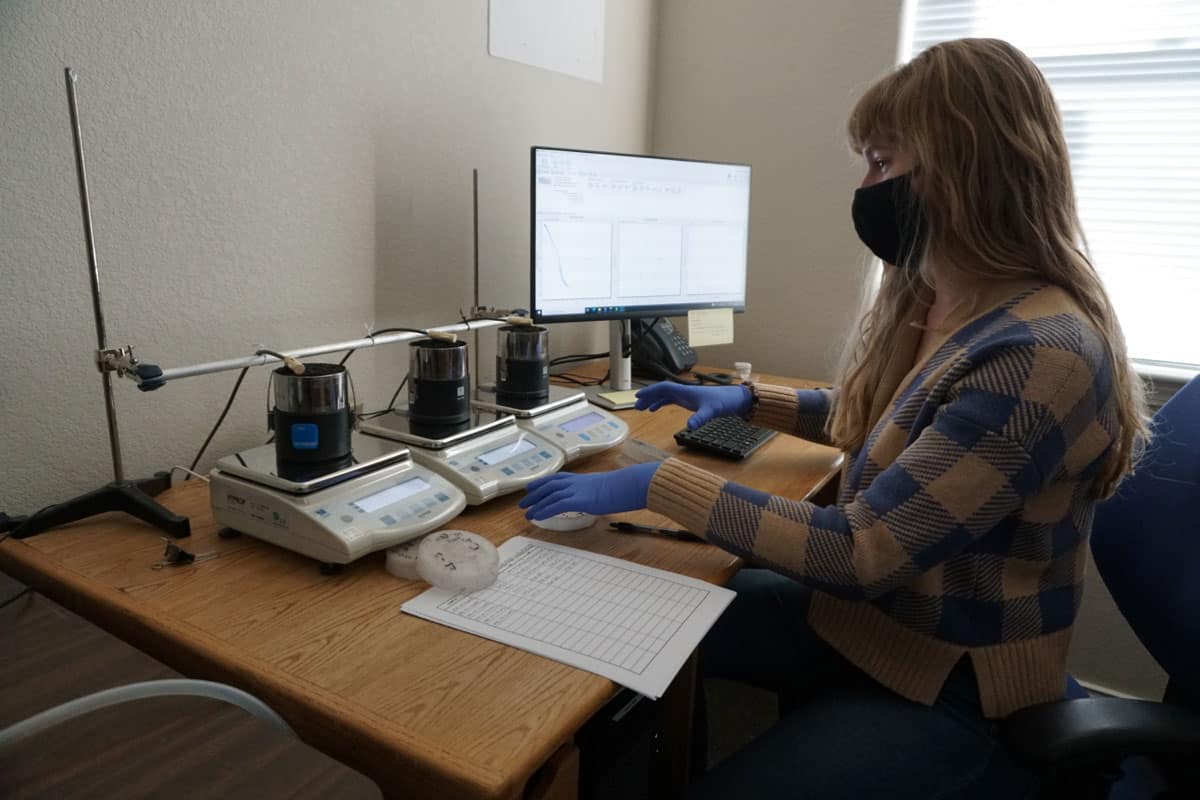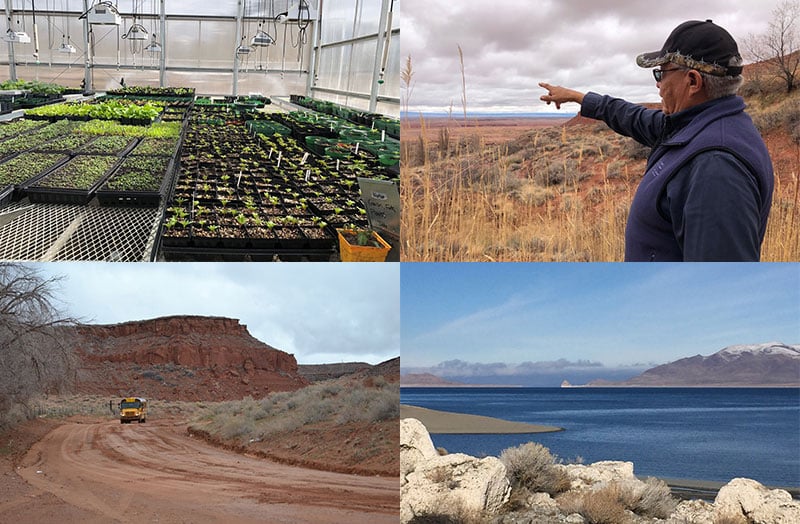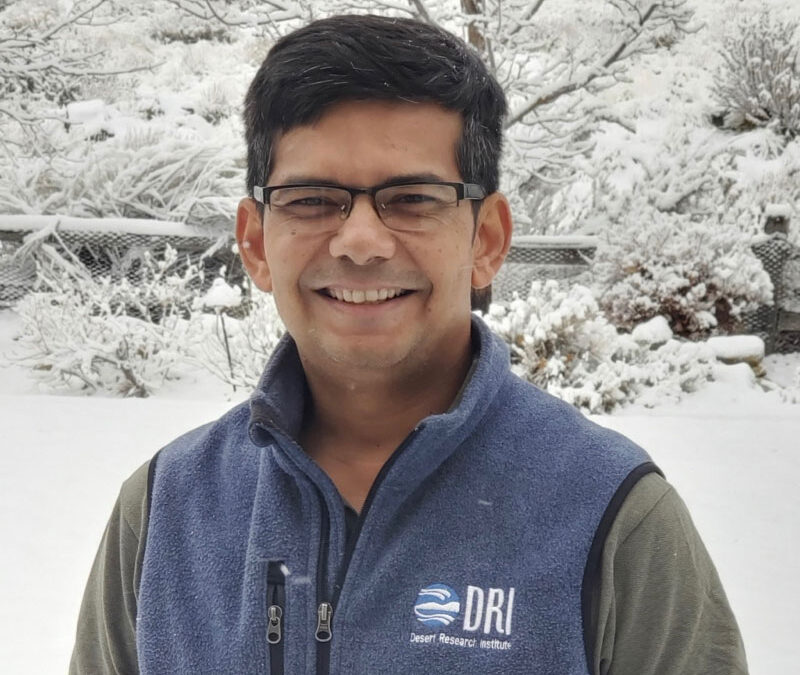Jun 1, 2022 | Clery Notice
Clery Notice: Confirmed Positive Case of Coronavirus on DRI’s Reno Campus
Late yesterday, Tuesday, May 31, 2022, we were notified of an individual on our Reno campus who received a positive test for the coronavirus (COVID-19) on May 30, 2022. This individual was last on DRI’s Reno campus on Friday, May 27, 2022 in the CRVB Building. Individuals who were in close contact with this individual have already been notified.
The health and well-being of our employees is something that is taken very seriously and is of the highest priority. We are issuing the following notice of communicable disease as an abundance of caution.
Your health and the health of the community is of primary concern to DRI. We are issuing this notice of communicable disease as an abundance of caution. The following are suggestions everyone should consider:
- Face coverings are encouraged while working around others at our DRI campus.
- Avoid close contact with people who are sick. When you are sick, keep your distance from others to protect them from getting sick too.
- Please stay home from work, school, and errands when you are sick. This will help prevent spreading your illness to others.
- Cover your mouth and nose with a tissue when coughing or sneezing. It may prevent those around you from getting sick. Serious respiratory illnesses are spread by cough, sneezing, or unclean hands.
- Washing your hands often will help protect you from germs. If soap and water are not available, use an alcohol-based hand rub.
- Avoid touching your eyes, nose or mouth. Germs are often spread when a person touches something that is contaminated with germs and then touches his or her eyes, nose, or mouth.
- Clean and disinfect frequently touched surfaces at home, work or school, especially when someone is ill. Get plenty of sleep, be physically active, manage your stress, drink plenty of fluids, and eat nutritious food.
Location of Incident: DRI Reno Campus – CRVB Building
Description of Incident: The individual accessed areas of DRI’s Reno campus – CRVB Building. DRI has notified anyone who may have had close contact with the individual on campus.
The Washoe County Health District encourages anyone with concerns to call the General Public Helpline at 775.328.2427. The number is live Monday – Friday from 8:00 a.m. to 5:00 p.m. and Saturday and Sunday from 9 a.m. to 5 p.m. for COVID-19 questions.
May 29, 2022 | Clery Notice
Clery Notice: Confirmed Positive Case of Coronavirus on DRI’s Las Vegas Campus
Today, Sunday, May 29, 2022, we were notified of an individual at our Las Vegas campus who received a positive test for the coronavirus (COVID-19) today. This individual was last on DRI’s Las Vegas campus in Phase I on Thursday, May 26, 2022. Individuals who were in close contact with this individual have already been notified.
The health and well-being of our employees is something that is taken very seriously and is of the highest priority. We are issuing the following notice of communicable disease as an abundance of caution.
Your health and the health of the community is of primary concern to DRI. We are issuing this notice of communicable disease as an abundance of caution. The following are suggestions everyone should consider:
- Face coverings are encouraged while working around others at our DRI campus.
- Avoid close contact with people who are sick. When you are sick, keep your distance from others to protect them from getting sick too.
- Please stay home from work, school, and errands when you are sick. This will help prevent spreading your illness to others.
- Cover your mouth and nose with a tissue when coughing or sneezing. It may prevent those around you from getting sick. Serious respiratory illnesses are spread by cough, sneezing, or unclean hands.
- Washing your hands often will help protect you from germs. If soap and water are not available, use an alcohol-based hand rub.
- Avoid touching your eyes, nose or mouth. Germs are often spread when a person touches something that is contaminated with germs and then touches his or her eyes, nose, or mouth.
- Clean and disinfect frequently touched surfaces at home, work or school, especially when someone is ill. Get plenty of sleep, be physically active, manage your stress, drink plenty of fluids, and eat nutritious food.
Location of Incident: DRI Las Vegas Campus – Phase I
Description of Incident: The individual accessed areas of DRI’s Las Vegas campus – Phase I. DRI has notified anyone who may have had close contact with the individual on campus.
The Southern Nevada Health District encourages anyone with concerns to call the General Public Helpline at (702) 759-INFO (4636). The number is live Monday-Friday, 9:00 a.m. to 5:00 p.m. for COVID-19 questions.
May 26, 2022 | Clery Notice
Clery Notice: Confirmed Positive Case of Coronavirus on DRI’s Reno Campus
Late yesterday, Wednesday, May 25, 2022 we were notified of an individual on our Reno campus who received a positive test for the coronavirus (COVID-19) yesterday. This individual was last on DRI’s Reno campus on Tuesday, May 24, 2022 in the CRVB and Maxey Buildings. Individuals who were in close contact with this individual have already been notified.
The health and well-being of our employees is something that is taken very seriously and is of the highest priority. We are issuing the following notice of communicable disease as an abundance of caution.
Your health and the health of the community is of primary concern to DRI. We are issuing this notice of communicable disease as an abundance of caution. The following are suggestions everyone should consider:
- Face coverings are encouraged while working around others at our DRI campus.
- Avoid close contact with people who are sick. When you are sick, keep your distance from others to protect them from getting sick too.
- Please stay home from work, school, and errands when you are sick. This will help prevent spreading your illness to others.
- Cover your mouth and nose with a tissue when coughing or sneezing. It may prevent those around you from getting sick. Serious respiratory illnesses are spread by cough, sneezing, or unclean hands.
- Washing your hands often will help protect you from germs. If soap and water are not available, use an alcohol-based hand rub.
- Avoid touching your eyes, nose or mouth. Germs are often spread when a person touches something that is contaminated with germs and then touches his or her eyes, nose, or mouth.
- Clean and disinfect frequently touched surfaces at home, work or school, especially when someone is ill. Get plenty of sleep, be physically active, manage your stress, drink plenty of fluids, and eat nutritious food.
Location of Incident: DRI Reno Campus – CRVB and Maxey Buildings
Description of Incident: The individual accessed areas of DRI’s Reno campus – CRVB and Maxey Buildings. DRI has notified anyone who may have had close contact with the individual on campus.
The Washoe County Health District encourages anyone with concerns to call the General Public Helpline at 775.328.2427. The number is live Monday – Friday from 8:00 a.m. to 5:00 p.m. and Saturday and Sunday from 9 a.m. to 5 p.m. for COVID-19 questions.

May 25, 2022 | Donor Stories
Thirty Junior & Senior High School Students Surprised With New Laptops

The Raiders Foundation has teamed up with DRI and Jobs 4 Nevada’s Graduates (J4NG) on “Tech Tomorrow” to help bridge the digital divide in Southern Nevada. Thirty junior and senior high school students selected by J4NG were treated to a special event at the Credit One Club in Allegiant Stadium, home of the Las Vegas Raiders. The students received an exclusive behind-the-scenes tour of Allegiant Stadium, showcasing how technology plays a role in nearly all aspects of a NFL game, and heard from an inspiring panel of technology leaders about careers in technology. At the end of the event, all 30 students were surprised with a brand-new laptop, wireless mouse, and backpack, all in an effort to bridge the digital divide.
“The Raiders Foundation is excited to play a role in helping to bridge the digital divide in our community,” said Raiders Foundation Executive Director Alan Diskin. “This endeavor matches our mission tenet of youth development and reinforces our commitment to making the Silver State a better place for today’s youth, who will become tomorrow’s leaders.”
“The ability to access computers and the internet plays a significant role in solving our world’s greatest challenges, and technology has become increasingly important for science exploration and research,” said DRI President Kumud Acharya. “We are very appreciative to the Raiders Foundation for selecting DRI as a partner to administer the NFL Foundation Digital Divide grant and produce ‘Tech Tomorrow.’”
“Exposure to technology and jobs in Nevada allows our students to explore career opportunities they might not have otherwise known about,” said J4NG Executive Director Dr. Rene Cantu. “We want to thank the Raiders Foundation for funding this opportunity and partnering with DRI to administer the program. The technology career panel inspired our students about a future in a tech-based job. We are grateful to the Raiders Foundation for the NFL Digital Divide Grant, which provided our students with new laptops to help them further their career and college goals after graduation.”
The “Tech Tomorrow” event provided a foundation for these students to continue to learn and build technology into their future.
Thirty junior and senior high school students pose with leaders from the Las Vegas Raiders Foundation, DRI, and J4NG. After the photo, the students were surprised with a brand-new laptop, wireless mouse, and backpack.
Credit: PHOTOS COURTESY OF THE LAS VEGAS RAIDERS.
###
About DRI
The Desert Research Institute (DRI) is a recognized world leader in basic and applied environmental research. Committed to scientific excellence and integrity, DRI faculty, students who work alongside them, and staff have developed scientific knowledge and innovative technologies in research projects around the globe. Since 1959, DRI’s research has advanced scientific knowledge on topics ranging from humans’ impact on the environment to the environment’s impact on humans. DRI’s impactful science and inspiring solutions support Nevada’s diverse economy, provide science-based educational opportunities, and inform policymakers, business leaders, and community members. With campuses in Las Vegas and Reno, DRI serves as the non-profit research arm of the Nevada System of Higher Education. For more information, please visit www.dri.edu.
About Jobs for Nevada’s Graduates
Jobs for Nevada’s Graduates (J4NG), is a statewide nonprofit, part of the national organization, Jobs for America’s Graduates (JAG). J4NG empowers positive futures for Nevada’s youth by working with students to achieve graduation and find career pathways. J4NG helps Nevada students reach their potential using in-depth mentoring, instruction, data-driven strategies and long-term support. 60 schools across Nevada offer J4G programs through J4NG, serving more than 3,300 students. J4NG students receive over 120+ hours of career readiness instruction, guidance and support through graduation and the first 12 months after graduation.
May 25, 2022 | Clery Notice
Clery Notice: Confirmed Positive Case of Coronavirus on DRI’s Reno Campus
Today, Wednesday, May 25, 2022 we were notified of an individual on our Reno campus who received a positive test for the coronavirus (COVID-19) yesterday. This individual was last on DRI’s Reno campus on Friday, May 20, 2022 in the GBERL Building. Individuals who were in close contact with this individual have already been notified.
The health and well-being of our employees is something that is taken very seriously and is of the highest priority. We are issuing the following notice of communicable disease as an abundance of caution.
Your health and the health of the community is of primary concern to DRI. We are issuing this notice of communicable disease as an abundance of caution. The following are suggestions everyone should consider:
- Face coverings are encouraged while working around others at our DRI campus.
- Avoid close contact with people who are sick. When you are sick, keep your distance from others to protect them from getting sick too.
- Please stay home from work, school, and errands when you are sick. This will help prevent spreading your illness to others.
- Cover your mouth and nose with a tissue when coughing or sneezing. It may prevent those around you from getting sick. Serious respiratory illnesses are spread by cough, sneezing, or unclean hands.
- Washing your hands often will help protect you from germs. If soap and water are not available, use an alcohol-based hand rub.
- Avoid touching your eyes, nose or mouth. Germs are often spread when a person touches something that is contaminated with germs and then touches his or her eyes, nose, or mouth.
- Clean and disinfect frequently touched surfaces at home, work or school, especially when someone is ill. Get plenty of sleep, be physically active, manage your stress, drink plenty of fluids, and eat nutritious food.
Location of Incident: DRI Reno Campus – GBERL Building
Description of Incident: The individual accessed areas of DRI’s Reno campus – GBERL Building. DRI has notified anyone who may have had close contact with the individual on campus.
The Washoe County Health District encourages anyone with concerns to call the General Public Helpline at 775.328.2427. The number is live Monday – Friday from 8:00 a.m. to 5:00 p.m. and Saturday and Sunday from 9 a.m. to 5 p.m. for COVID-19 questions.

May 25, 2022 | Announcements, News releases
HELP of Southern Nevada and DRI Recognize the 2022 STEM Force Graduates
STEM Careers
Career Development
Workforce Innvoation
Above: DRI President Kumud Acharya speaks to the graduates of the 2022 STEM Force program.
Credit: Tommy Gugino/DRI.
HELP of Southern Nevada and DRI honored the graduates of its 2022 Workforce Innovation and Opportunity Act (WIOA) STEM Force Program. Families and pupils gathered inside DRI’s Roger’s Auditorium to commemorate the student’s achievements in environmental research as they go on to pursue a potential STEM career. The ceremony kicked off with opening remarks from DRI President Kumud Acharya followed by a video montage of events throughout the program, and a reception filled with beverages and cake for all. Those in attendance included STEM Education Coordinator at DRI, Shawna Witt, STEM Force Program Director, Craig Rosen, HELP of Southern Nevada Chief Workforce Officer, Denise Gee, and Workforce Services Program Manager, Christina Sewell.
“With a growing need for a workforce skilled in science, technology, engineering, and math (STEM), DRI is committed to helping students achieve long term outcomes both inside and outside of the classroom. Through the STEM Force Program, students are taught fundamentals and are exposed to scientific solutions so that they can pursue future STEM careers,” said Rosen. “We are delighted to once again partner with HELP of Southern Nevada to support their mission and ensure students are equipped with the background knowledge and tools to succeed in their future career.”
The 10-week STEM Force Program provided WIOA program members with the opportunity to learn about STEM topics and careers through a series of presentations, field trips and hands-on projects. Students of the program were able to interact with highly skilled scientists, engage in experiments and work collaboratively with one another to develop work-readiness skills such as creativity, problem-solving, teamwork and determination.
“We want to thank DRI for their incredible partnership and urgency to continue helping our clients help themselves,” said Sewell. “As we set our clients up for success, we believe it is important to build a foundation for their future through various workshops, support groups and networking.”
The 2022 STEM Force Graduates with DRI STEM Education Coordinator Shawna Witt and DRI Community Engagement and Professional Development Administrator Craig Rosen.
Credit: Tommy Gugino/DRI.
More Information:
For more information on HELP of Southern Nevada’s programs, please visit https://www.helpsonv.org.
###
About DRI
The Desert Research Institute (DRI) is a recognized world leader in basic and applied environmental research. Committed to scientific excellence and integrity, DRI faculty, students who work alongside them, and staff have developed scientific knowledge and innovative technologies in research projects around the globe. Since 1959, DRI’s research has advanced scientific knowledge on topics ranging from humans’ impact on the environment to the environment’s impact on humans. DRI’s impactful science and inspiring solutions support Nevada’s diverse economy, provide science-based educational opportunities, and inform policymakers, business leaders, and community members. With campuses in Las Vegas and Reno, DRI serves as the non-profit research arm of the Nevada System of Higher Education. For more information, please visit www.dri.edu.
About HELP of Southern Nevada
HELP of Southern Nevada provides assistance to low-income families, homeless youth and other individuals, to help them reach self-sufficiency through direct services, trainings and referrals. HELP operates 10 departments, consists of 200 employees and serves tens of thousands of unduplicated clients each year. Programs available include Behavioral Health Services, Coordinated Entry Community Matchers, Homeless Response Teams, Family Housing Services, Framing Hope Warehouse, Holiday Assistance, Adult Housing Programs, Community Relations, Shannon West Homeless Youth Center, Weatherization and Workforce Services. For more information, call HELP of Southern Nevada at 702.369.4357 or visit www.helpsonv.org. Follow HELP of Southern Nevada on Facebook, Twitter and Instagram.

May 23, 2022 | Blog, Featured researchers
Meet Brianda Hernandez Rosales, Graduate Researcher
MAY 23, 2022
LAS VEGAS, NEV.
Hydrology
Hydrogeology
Rainwater
Above: Brianda fly fishing in Northern California where the Klamath River and the Pacific Ocean meet.
Brianda Hernandez Rosales is a graduate research assistant with the Division of Hydrologic Sciences at DRI in Reno. She recently earned her Master’s degree in hydrogeology from the Graduate Program of Hydrologic Sciences at the University of Nevada, Reno (UNR). Learn more about Brianda and her graduate research in this interview with DRI’s Behind the Science blog!
DRI: What brought you to DRI?
Hernandez: I first learned of DRI during my time at Mt. San Antonio College, during a research trip to Capitol Reef National Park. The chief scientist of the park was a hydrogeologist with a degree from the Graduate Program of Hydrologic Sciences at UNR and mentioned his affiliation with DRI. I decided to check out DRI when I had access to the web. I started following the research that was being conducted at DRI and knew that I wanted to somehow make my way to Northern Nevada once I was ready to tackle a graduate degree. Luckily, my research interests aligned with the work of Alexandra Lutz, Ph.D., allowing me to attend UNR and join DRI. It was the best decision I made way back in June 2017 during that hot afternoon overlooking the Capital Reef basin.
DRI: What are you studying?
Hernandez: My focus of study is hydrology/hydrogeology. I am interested in water security issues in the West, particularly in underrepresented communities. Using science to help build climate resiliency among these communities is another interest and passion of mine, as well as science communication.
Brianda Hernandez Rosales is a graduate research assistant with the Division of Hydrologic Sciences at DRI in Reno.
DRI: What research projects are you working on? And who at DRI are you working with?
Hernandez: My graduate research focuses on assessing the feasibility of rainwater harvesting for food production in Peach Springs, AZ on the Hualapai Indian Reservation. Rainwater harvesting is the concentration, collection, and storage of rainwater to be used at a later time. It has been practiced for centuries in arid and semi-arid environments around the world, however, this practice has been overlooked in the United States as a means to ensure water security in rural areas. Rainwater harvesting can be used to diversify water portfolios and attain food security in vulnerable communities.
COVID-19 and supply-chain issues have exposed the need to assess food security in areas that are considered “food deserts” and rainwater harvesting can be a way to combat those issues, particularly in the Southwest, since monsoonal rains are available for capture during the growing season. This project has been inspirational for me because it can be scaled to any degree and applied to any rural community interested in harvesting rainwater to grow food. I’ve learned that this practice can be applied not only in rural communities but across the United States to reduce the strain on other water supplies. On this project, I work alongside Alexandra Lutz, Ph.D., Christine Albano, Ph.D., and Susie Rybarski at DRI.
In addition to my graduate research, I also worked alongside Maureen McCarthy, Ph.D., and Alexandra Lutz, Ph.D., during summer 2021 on providing content for the COVID-19 Toolkit website through Native Waters on Arid Lands (NWAL) project. I researched the impacts on water quality during drought in the West to help inform Tribal Extension agents, tribal ranchers, and farmers as well as tribal members about these looming issues.
Brianda documenting the crops currently grown in the Hualapai Community Garden in Peach Springs, AZ with support from the Federally Recognized Tribal Extension Program (FRTEP) agent for the tribe, Elisabeth Alden.
DRI: What are your short-term and long-term goals while at DRI?
Hernandez: My overall goal at DRI is to conduct good, reputable science that is accessible to everyone. I think having access to great science is important, now more than ever. My short-term goal is to finish my degree in May 2022. My long-term goal is to continue working with folks at DRI and the NWAL team to assist in the important work that is being done to ensure climate resiliency among the communities that need it most.
DRI: Tell us about yourself. What do you do for fun?
Hernandez: Like many people at DRI, I am a lover of the outdoors! You can find me climbing boulders in the Tahoe Basin, Bishop, California, or throughout the West. I also enjoy mountain biking on any dirt, fly fishing at any body of water, and simply just camping with friends in the mountains or the open desert. We live in such a beautiful area here in the West, it’s nice just to explore.
When I am not outside, I enjoy reading books about people who do things outside (e.g., adventure memoirs, anthropology books) or science books. I also enjoy listening to music, eating delicious food, and drinking wine while having great conversations with family and friends.
“Pebble wrestling” in Rocky Mountains National Park.
May 18, 2022 | Clery Notice
Clery Notice: Confirmed Positive Case of Coronavirus on DRI’s Las Vegas Campus
Today, Wednesday, May 18, 2022, we were notified of an individual at our Las Vegas campus who received a positive test for the coronavirus (COVID-19) today. This individual was last on DRI’s Las Vegas campus in Phase I on Thursday, May 12, 2022. Individuals who were in close contact with this individual have already been notified.
The health and well-being of our employees is something that is taken very seriously and is of the highest priority. We are issuing the following notice of communicable disease as an abundance of caution.
Your health and the health of the community is of primary concern to DRI. We are issuing this notice of communicable disease as an abundance of caution. The following are suggestions everyone should consider:
- Face coverings are encouraged while working around others at our DRI campus.
- Avoid close contact with people who are sick. When you are sick, keep your distance from others to protect them from getting sick too.
- Please stay home from work, school, and errands when you are sick. This will help prevent spreading your illness to others.
- Cover your mouth and nose with a tissue when coughing or sneezing. It may prevent those around you from getting sick. Serious respiratory illnesses are spread by cough, sneezing, or unclean hands.
- Washing your hands often will help protect you from germs. If soap and water are not available, use an alcohol-based hand rub.
- Avoid touching your eyes, nose or mouth. Germs are often spread when a person touches something that is contaminated with germs and then touches his or her eyes, nose, or mouth.
- Clean and disinfect frequently touched surfaces at home, work or school, especially when someone is ill. Get plenty of sleep, be physically active, manage your stress, drink plenty of fluids, and eat nutritious food.
Location of Incident: DRI Las Vegas Campus – Phase I
Description of Incident: The individual accessed areas of DRI’s Las Vegas campus – Phase I. DRI has notified anyone who may have had close contact with the individual on campus.
The Southern Nevada Health District encourages anyone with concerns to call the General Public Helpline at (702) 759-INFO (4636). The number is live Monday-Friday, 9:00 a.m. to 5:00 p.m. for COVID-19 questions.

May 17, 2022 | Announcements, News releases
Fire Science
Wildland Fire Research
Workforce Development
Nevada Receives National Science Foundation Research Award for $20 Million
To increase capacity for wildland fire research, education, and workforce development
The Nevada System of Higher Education (NSHE) has been awarded $20 million over a period of five years for the Harnessing the Data Revolution for Fire Science (HDRFS) project. This project is funded through the National Science Foundation Established Program to Stimulate Competitive Research (NSF EPSCoR); whose mission is to enhance research competitiveness of targeted jurisdictions (states, territories, commonwealth) by strengthening STEM capacity and capability.
The overarching goal of the RII Track-1: Harnessing the Data Revolution for Fire Science (HDRFS) project is to increase the capacity of Nevada for wildland fire research, education, and workforce development and to demonstrate this increased capacity through technology-enhanced fire science in the regionally important sagebrush ecosystem.
This system-wide partnership involves the three research institutions, the Desert Research Institute (DRI), the University of Nevada, Las Vegas (UNLV), and the University of Nevada, Reno (UNR). Further involvement includes faculty and students from NSHE undergraduate institutions.
“NSF continues to serve as an essential partner in supporting the critical work of the NSHE EPSCoR,” said NSHE Board of Regents Chair Cathy McAdoo. “As our region currently faces extreme fire and water challenges, we appreciate this investment in Fire Science research and workforce development; giving NSHE institutions (DRI, UNLV, UNR) more capacity to solve our most pressing environmental issues.”
This project will inform and improve land and fire management by providing scaling of fire effects and impacts from smaller to larger fires in four fire science areas: Ecology; Hydrology between fire events; Fire Processes; and Fire Emissions and their Atmospheric Aging during fire events. This will be achieved through strategic investments in expertise, facilities, Cyberinfrastructure Innovations, and Education and Workforce Development creating end-to-end pipelines for research and STEM advancements.
“This project will generate and harness large amounts of data from diverse sensor platforms to accurately model landscapes and wildland fires from plot to watershed scales,” said Frederick Harris, Nevada NSF EPSCoR Project Director. “We will study how fires impact the societal needs outlined in the Nevada Science and Technology Plan.”
In addition, NSHE researchers will study potential new areas of economic development for Nevada, emphasizing new opportunities for workforce development, diversity, hiring new faculty, and providing more scholarship opportunities for undergraduate and graduate students in STEM fields.
“This NSF award funds critical fire science research, which continues to be a priority for Nevada,” said DRI President Kumud Acharya. “DRI has expertise in wildland fire research, and we look forward to working with our fellow NSHE institutions on this important project.”
The award will enhance Nevada’s capabilities in wildland fire science, UAS, data acquisition, processing, and modeling, and rapid deployment, while strengthening Nevada’s network of external collaborators and stakeholders, who already include the major fire and land management agencies in the Great Basin and Western United States.
“This marks an important investment for Nevada and the West,” said UNR President Brian Sandoval. “This National Science Foundation EPSCoR-supported project takes a comprehensive, collaborative approach. It will enhance the capacity of Nevada’s public research institutions to further tackle an issue of utmost importance and will do so by further deploying technology and cyberinfrastructure, and further building on the expertise and capabilities of our researchers and faculty.”
“By joining forces, UNR, DRI, and UNLV are poised to reveal the power of cooperation in Nevada when it comes to addressing challenges important to the state and beyond its borders,” said UNLV President Keith Whitfield. “This research will advance our fundamental understanding of wildfires as it strengthens the capacity of our campuses to engage with each other and with Nevada’s students and citizens in addressing today’s complex challenges. This is but one example of how research works for Nevada.”
###
About NSHE
The Nevada System of Higher Education, comprised of two doctoral-granting research universities, a state college, four comprehensive community colleges, and one environmental research institute, serves the educational and job training needs of Nevada. NSHE provides educational opportunities to more than 100,000 students and is governed by the Nevada Board of Regents. The System includes the University of Nevada, Las Vegas, the University of Nevada, Reno, Nevada State College, Desert Research Institute, the College of Southern Nevada, Great Basin College, Truckee Meadows Community College, and Western Nevada College. For more information regarding NSHE please visit: https://nshe.nevada.edu/
About the Nevada System Sponsored Programs and EPSCoR
The mission of the Nevada System Sponsored Programs and EPSCoR is to promote collaboration and multidisciplinary learning among NSHE institutions, and to enable alignment of efforts with the needs of the state to increase research and STEM competitiveness. The goal is to create new opportunities in the State of Nevada for workforce development and promote the development of Science, Technology, Engineering and Mathematics (STEM) disciplines for the state. For more information regarding Nevada EPSCoR please visit: https://epscorspo.nevada.edu/
About DRI
The Desert Research Institute (DRI) is a recognized world leader in basic and applied environmental research. Committed to scientific excellence and integrity, DRI faculty, students who work alongside them, and staff have developed scientific knowledge and innovative technologies in research projects around the globe. Since 1959, DRI’s research has advanced scientific knowledge on topics ranging from humans’ impact on the environment to the environment’s impact on humans. DRI’s impactful science and inspiring solutions support Nevada’s diverse economy, provide science-based educational opportunities, and inform policymakers, business leaders, and community members. With campuses in Las Vegas and Reno, DRI serves as the non-profit research arm of the Nevada System of Higher Education. For more information, please visit www.dri.edu.

May 17, 2022 | Announcements, News releases
Farm vehicles are heavy as dinosaurs, jeopardize future food security
Reposted from https://www.slu.se/en/ew-news/2022/5/farm-vehicles-heavy-as-dinosaurs-jeopardize-food-security/.
Farm vehicles are becoming so heavy that they jeopardize future food security in Europe, America and Australia. Larger and more flexible tires have limited the damage on the surface, but below the topsoil, the soil is becoming so compact that its long-term production capacity is threatened. These conclusions are made in a new global study, which also draws parallels to the sauropods, the heaviest animals that ever walked Earth.
The study, which was published in the Proceedings of the National Academy of Sciences (PNAS) yesterday, was conducted by Professor Thomas Keller from the Swedish University of Agricultural Sciences (SLU) and Agroscope in Switzerland, and Professor Dani Or from ETH Zurich in Switzerland and the Desert Research Institute in the USA.
Mechanization has greatly contributed to the success of modern agriculture, with vastly expanded food production capabilities achieved by the higher capacity of farm machinery. However, the increase in capacity has been accompanied by heavier vehicles that increase the risk of subsoil compaction.
While the total weight of laden combine harvesters could be around 4 tonnes in the late 1950s, we can today see modern vehicles weighing 36 tonnes in the fields, and the researchers behind the present study decided to investigate what this development has meant for arable land. The contact stress on the soil surface turned out to have remained constant at a low level during this period, which is due to the fact that the machines have been fitted with ever larger tires that distribute the weight over a larger surface. In the deeper soil layer, the subsoil, on the other hand, soil compaction has increased to levels that jeopardize the soil’s ability to produce food. This also has consequences for the soil’s ability to transport water and provide other important ecosystem services.
“Subsoil compaction by farm vehicles is a very serious problem, since once soils are compacted, they remain damaged for decades. This may be one of the reasons why harvests are no longer increasing and why we are now seeing more floods than before”, says lead author Professor Thomas Keller, from SLU in Sweden and Agriscope in Switzerland.
High risk of compaction in one fifth of the arable land globally
The researchers have also produced a map that shows how the risk of chronic subsoil compaction varies around the world and the risk turned out to be greatest in Europe, North and South America and Australia. Globally, about a fifth of all arable land is estimated to be at risk of far-reaching damage that is very difficult to repair. In other words, the chance that these soils will recover is small.
The risk is presently smaller in Asia and Africa, where the mechanization of agriculture has not reached the same high level yet.
“If the mechanization were to gain momentum in Asia and Africa, however, there is a risk of subsoil compaction also on these continents”, says Thomas Keller.
Vehicle manufacturers must pay more attention to subsoil compaction
To contribute to more sustainable agriculture, vehicle manufacturers need to be more concerned about the risk of subsoil compaction and its negative impact on the soil.
“Above all, the wheel loads of modern farm vehicles need to be reduced in order not to affect the subsoil to the same extent as today. The heavier the machines, the worse for the subsoils”, says Thomas Keller.
Did dinosaurs induce soil compaction?
The researchers also show that the heaviest farm vehicles used in modern agriculture approach the weight of the heaviest dinosaurs, the sauropods. This indicates that the sauropods probably induced soil compaction and affected the soil’s production capacity in the same way as modern farm vehicles.
“No one seemed to have wondered whether dinosaurs induced subsoil compaction, but since the sauropods were as heavy as modern farm vehicles, we thought this was a question that ought to be explored”, says Thomas Keller.
Like humans, sauropods depended on the soils ability to provide food, suggesting that they moved across the landscape in a way that reduced the risk of soil compaction. One possibility is that they restricted their movements to fixed “foraging trails” and grazed plants next to them with the help of their long necks. In this way, they could ensure that the surrounding land continued to produce the plant food they needed.
More information:
The full study, “Farm vehicles approaching weights of sauropods exceed safe mechanical limits for soil functioning,” is available from the Proceedings of the National Academy of Sciences: https://doi.org/10.1073/pnas.2117699119.
###
About DRI
The Desert Research Institute (DRI) is a recognized world leader in basic and applied environmental research. Committed to scientific excellence and integrity, DRI faculty, students who work alongside them, and staff have developed scientific knowledge and innovative technologies in research projects around the globe. Since 1959, DRI’s research has advanced scientific knowledge on topics ranging from humans’ impact on the environment to the environment’s impact on humans. DRI’s impactful science and inspiring solutions support Nevada’s diverse economy, provide science-based educational opportunities, and inform policymakers, business leaders, and community members. With campuses in Las Vegas and Reno, DRI serves as the non-profit research arm of the Nevada System of Higher Education. For more information, please visit www.dri.edu.
May 16, 2022 | Clery Notice
Clery Notice: Confirmed Positive Case of Coronavirus on DRI’s Reno Campus
Today, Monday, May 16, 2022 we were notified of an individual on our Reno campus who received a positive test for the coronavirus (COVID-19) today. This individual was last on DRI’s Reno campus today, May 16, 2022 in the Maxey Building. Individuals who were in close contact with this individual have already been notified.
The health and well-being of our employees is something that is taken very seriously and is of the highest priority. We are issuing the following notice of communicable disease as an abundance of caution.
Your health and the health of the community is of primary concern to DRI. We are issuing this notice of communicable disease as an abundance of caution. The following are suggestions everyone should consider:
- Face coverings are encouraged while working around others at our DRI campus.
- Avoid close contact with people who are sick. When you are sick, keep your distance from others to protect them from getting sick too.
- Please stay home from work, school, and errands when you are sick. This will help prevent spreading your illness to others.
- Cover your mouth and nose with a tissue when coughing or sneezing. It may prevent those around you from getting sick. Serious respiratory illnesses are spread by cough, sneezing, or unclean hands.
- Washing your hands often will help protect you from germs. If soap and water are not available, use an alcohol-based hand rub.
- Avoid touching your eyes, nose or mouth. Germs are often spread when a person touches something that is contaminated with germs and then touches his or her eyes, nose, or mouth.
- Clean and disinfect frequently touched surfaces at home, work or school, especially when someone is ill. Get plenty of sleep, be physically active, manage your stress, drink plenty of fluids, and eat nutritious food.
Location of Incident: DRI Reno Campus – Maxey Building
Description of Incident: The individual accessed areas of DRI’s Reno campus – Maxey Building. DRI has notified anyone who may have had close contact with the individual on campus.
The Washoe County Health District encourages anyone with concerns to call the General Public Helpline at 775.328.2427. The number is live Monday – Friday from 8:00 a.m. to 5:00 p.m. and Saturday and Sunday from 9 a.m. to 5 p.m. for COVID-19 questions.
May 16, 2022 | Clery Notice
Clery Notice: Confirmed Positive Cases of Coronavirus on DRI’s Las Vegas Campus
Today, Monday, May 16, 2022, we were notified that two individuals at our Las Vegas campus received positive tests for the coronavirus (COVID-19) today. Both individuals were last on DRI’s Las Vegas campus in Phase I on Thursday, May 12, 2022. Individuals who were in close contact with these individuals have already been notified.
Your health and the health of the community is of primary concern to DRI. We are issuing this notice of communicable disease as an abundance of caution. The following are suggestions everyone should consider:
- Face coverings are encouraged while working around others at our DRI campus.
- Avoid close contact with people who are sick. When you are sick, keep your distance from others to protect them from getting sick too.
- Please stay home from work, school, and errands when you are sick. This will help prevent spreading your illness to others.
- Cover your mouth and nose with a tissue when coughing or sneezing. It may prevent those around you from getting sick. Serious respiratory illnesses are spread by cough, sneezing, or unclean hands.
- Washing your hands often will help protect you from germs. If soap and water are not available, use an alcohol-based hand rub.
- Avoid touching your eyes, nose or mouth. Germs are often spread when a person touches something that is contaminated with germs and then touches his or her eyes, nose, or mouth.
- Clean and disinfect frequently touched surfaces at home, work or school, especially when someone is ill. Get plenty of sleep, be physically active, manage your stress, drink plenty of fluids, and eat nutritious food.
Location of Incident: DRI Las Vegas Campus – Phase I
Description of Incident: The individuals accessed areas of DRI’s Las Vegas campus – Phase I. DRI has notified anyone who may have had close contact with the individuals on campus.
The Southern Nevada Health District encourages anyone with concerns to call the General Public Helpline at (702) 759-INFO (4636). The number is live Monday-Friday, 9:00 a.m. to 5:00 p.m. for COVID-19 questions.
May 15, 2022 | Clery Notice
Clery Notice: Confirmed Positive Case of Coronavirus on DRI’s Las Vegas Campus
Today, Sunday, May 15 2022, we were notified that an individual at our Las Vegas campus received a positive test for the coronavirus (COVID-19) today. The individual was last on DRI’s Las Vegas campus in Phase I on Friday, May 13, 2022. Individuals who were in close contact with this individual have already been notified.
The health and well-being of our employees is something that is taken very seriously and is of the highest priority. We are issuing the following notice of communicable disease as an abundance of caution.
Your health and the health of the community is of primary concern to DRI. We are issuing this notice of communicable disease as an abundance of caution. The following are suggestions everyone should consider:
- Face coverings are encouraged while working around others at our DRI campus.
- Avoid close contact with people who are sick. When you are sick, keep your distance from others to protect them from getting sick too.
- Please stay home from work, school, and errands when you are sick. This will help prevent spreading your illness to others.
- Cover your mouth and nose with a tissue when coughing or sneezing. It may prevent those around you from getting sick. Serious respiratory illnesses are spread by cough, sneezing, or unclean hands.
- Washing your hands often will help protect you from germs. If soap and water are not available, use an alcohol-based hand rub.
- Avoid touching your eyes, nose or mouth. Germs are often spread when a person touches something that is contaminated with germs and then touches his or her eyes, nose, or mouth.
- Clean and disinfect frequently touched surfaces at home, work or school, especially when someone is ill. Get plenty of sleep, be physically active, manage your stress, drink plenty of fluids, and eat nutritious food.
Location of Incident: DRI Las Vegas Campus – Phase I
Description of Incident: The individual accessed areas of DRI’s Las Vegas campus – Phase I. DRI has notified anyone who may have had close contact with the individual on campus.
The Southern Nevada Health District encourages anyone with concerns to call the General Public Helpline at (702) 759-INFO (4636). The number is live Monday-Friday, 9:00 a.m. to 5:00 p.m. for COVID-19 questions.
May 11, 2022 | Clery Notice
Clery Notice: Confirmed Positive Case of Coronavirus on DRI’s Las Vegas Campus
Today, Wednesday, May 11, 2022, we were notified that an individual at our Las Vegas campus received a positive test for the coronavirus (COVID-19) today. The individual was last on DRI’s Las Vegas campus in the Rogers Building on Tuesday, May 10, 2022. Individuals who were in close contact with this individual have already been notified.
The health and well-being of our employees is something that is taken very seriously and is of the highest priority. We are issuing the following notice of communicable disease as an abundance of caution.
Your health and the health of the community is of primary concern to DRI. We are issuing this notice of communicable disease as an abundance of caution. The following are suggestions everyone should consider:
- Face coverings are encouraged while working around others at our DRI campus.
- Avoid close contact with people who are sick. When you are sick, keep your distance from others to protect them from getting sick too.
- Please stay home from work, school, and errands when you are sick. This will help prevent spreading your illness to others.
- Cover your mouth and nose with a tissue when coughing or sneezing. It may prevent those around you from getting sick. Serious respiratory illnesses are spread by cough, sneezing, or unclean hands.
- Washing your hands often will help protect you from germs. If soap and water are not available, use an alcohol-based hand rub.
- Avoid touching your eyes, nose or mouth. Germs are often spread when a person touches something that is contaminated with germs and then touches his or her eyes, nose, or mouth.
- Clean and disinfect frequently touched surfaces at home, work or school, especially when someone is ill. Get plenty of sleep, be physically active, manage your stress, drink plenty of fluids, and eat nutritious food.
Location of Incident: DRI Las Vegas Campus – Rogers Building
Description of Incident: The individual accessed areas of DRI’s Las Vegas campus – Rogers Building. DRI has notified anyone who may have had close contact with the individual on campus.
The Southern Nevada Health District encourages anyone with concerns to call the General Public Helpline at (702) 759-INFO (4636). The number is live Monday-Friday, 9:00 a.m. to 5:00 p.m. for COVID-19 questions.
May 11, 2022 | Clery Notice
Clery Notice: Confirmed Positive Case of Coronavirus on DRI’s Reno Campus
Today, Wednesday, May 11, 2022 we were notified of an individual on our Reno campus who received a positive test for the coronavirus (COVID-19) today. This individual was last on DRI’s Reno campus on Tuesday, May 10, 2022 in the CRVB Building. Individuals who were in close contact with this individual have already been notified.
The health and well-being of our employees is something that is taken very seriously and is of the highest priority. We are issuing the following notice of communicable disease as an abundance of caution.
Your health and the health of the community is of primary concern to DRI. We are issuing this notice of communicable disease as an abundance of caution. The following are suggestions everyone should consider:
- Face coverings are encouraged while working around others at our DRI campus.
- Avoid close contact with people who are sick. When you are sick, keep your distance from others to protect them from getting sick too.
- Please stay home from work, school, and errands when you are sick. This will help prevent spreading your illness to others.
- Cover your mouth and nose with a tissue when coughing or sneezing. It may prevent those around you from getting sick. Serious respiratory illnesses are spread by cough, sneezing, or unclean hands.
- Washing your hands often will help protect you from germs. If soap and water are not available, use an alcohol-based hand rub.
- Avoid touching your eyes, nose or mouth. Germs are often spread when a person touches something that is contaminated with germs and then touches his or her eyes, nose, or mouth.
- Clean and disinfect frequently touched surfaces at home, work or school, especially when someone is ill. Get plenty of sleep, be physically active, manage your stress, drink plenty of fluids, and eat nutritious food.
Location of Incident: DRI Reno Campus – CRVB Building
Description of Incident: The individual accessed areas of DRI’s Reno campus – CRVB Building. DRI has notified anyone who may have had close contact with the individual on campus.
The Washoe County Health District encourages anyone with concerns to call the General Public Helpline at 775.328.2427. The number is live Monday – Friday from 8:00 a.m. to 5:00 p.m. and Saturday and Sunday from 9 a.m. to 5 p.m. for COVID-19 questions.

May 9, 2022 | Announcements, News releases
Study explores effects of summertime heat waves on workforce health in Las Vegas, Phoenix, and Los Angeles
Working outdoors during periods of extreme heat can cause discomfort, heat stress, or heat illnesses – all growing concerns for people who live and work in Southwestern cities like Las Vegas, where summer temperatures creep higher each year. But, did you know that female outdoor workers are experiencing disproportionate impacts? Or, that more experienced outdoor workers are at higher risk than those with fewer years on the job?
In a new study in the International Journal of Environmental Science and Technology, scientists from DRI, Nevada State College, and the Guinn Center for Policy Priorities explore the growing threat that extreme heat poses to workforce health in three of the hottest cities in North America – Las Vegas, Los Angeles, and Phoenix. Their study results hold important findings for outdoor workers, their employers, and policymakers across the Southwestern U.S.
To assess the relationship between extreme heat and nonfatal workplace heat-related illness, the study compared data on occupational injuries and illnesses for the years 2011-2018 with heat index data from Las Vegas, Los Angeles, and Phoenix. Heat index data combines temperature and humidity as a measure of how people feel the heat.
“We expected to see a correlation between high temperatures and people getting sick – and we found that there was a very clear trend in most cases,” said lead author Erick Bandala, Ph.D., assistant research professor of environmental science at DRI. “Surprisingly, this type of analysis hadn’t been done in the past, and there are some really interesting social implications to what we learned.”
First, the research team analyzed changes in heat index data for the three cities. They found a significant increase in heat index at two of the three locations (Phoenix and Las Vegas) during the study period, with average heat index values for June-Aug climbing from “extreme caution” in 2012 into the “danger” range by 2018. Over the same period, data from the Bureau of Labor and Statistics showed that the number of nonfatal heat-related workplace injuries and illnesses in each of the three states increased steadily, climbing from below the national average in 2011 to above the national average in 2018.
According to new research, the number of heat-related nonfatal workplace injuries in Arizona, California, and Nevada increased between 2011 and 2018. The three states now exceed the U.S. average.
Credit: Erick Bandala/DRI.
“Our data indicate that the increases in heat are happening alongside increases in the number of nonfatal occupational injuries across these three states,” Bandala said. “Every year we are seeing increased heat waves and higher temperatures, and all of the people who work outside in the streets or in gardens or agriculture are exposed to this.”
Next, the study team looked deeper into the data to learn about the number of male and female workers being affected by heat-related workplace injuries. At the beginning of the study in 2011, 26 to 50 percent of the people affected across the three states were female. By 2018, 42 to 86 percent of the people affected were female.
Study authors believe that the reason for this increase may be due to more women entering the outdoor workforce, or it could be related to the vulnerability of women to certain heat-related effects, like hyponatremia — a condition that develops when too much plain water is consumed under high heat conditions and sodium levels in blood get too low.
“As the number of female workers exposed to extreme temperatures increases, there is an increasing need to consider the effect of gender and use different approaches to recommend prevention measures as hormonal factors and cycles that can be exacerbated during exposure to extreme heat,” said study coauthor Kebret Kebede, M.D., associate professor of biology at Nevada State College.
The authors examined other variables, such as the length of an employee’s service with an employer. They found that the number of heat-related injury/illnesses tended to increase as the length of service with the employer increased, and that those with more than five years of service were at greater risk than those with less than one year of service. This may be due to employees with more years of service having a reduced perception of risk, or could be a cumulative effect of years of chronic heat exposure on the well-being of outdoor workers.
New research shows that in Arizona, Nevada and California, the number of heat-related injuries/illnesses tended to increase as length of service with the employer increased.
Credit: Erick Bandala/DRI.
In severe cases, heat-related illness or injury can cause extensive damage to all tissues and organs, disrupting the central nervous system, blood-clotting mechanisms, and liver and kidney functions. In these cases, lengthy recoveries are required. The authors found concerning evidence that heat-related injuries are keeping many outdoor workers away from work for more than 30 days.
“These lengthy recovery times are a significant problem for workers and their families, many of whom are living day-to-day,” Bandala said. “When we have these extreme heat conditions coming every year and a lot of people working outside, we need to know what are the consequences of these problems, and we need the people to know about the risk so that they take proper precautions.”
Authors of a new study on the impacts of extreme heat on workplace health found concerning evidence that heat-related injuries are keeping many outdoor workers away from work for more than 30 days.
Credit: Erick Bandala/DRI.
The study also explored connections between heat-related injuries/illnesses and the number of hours worked, the time of day that the event occurred, and the ethnicities and age groups that were most impacted.
Study authors hope that their results will be useful to policymakers to protect outdoor workers. They also hope that the information will be useful to outdoor workers who need to stay safe during times of extreme heat, and employers who rely on a healthy workforce to keep their businesses operating.
“This study underscores the importance of and the need for the work the Nevada Occupational Safety and Health Administration (OSHA) is doing to adopt a regulation to address heat illness,” stated Nancy Brune, Ph.D., study co-author and senior fellow at the Guinn Center.
“As temperatures continue to rise and heat-related illnesses and deaths continue to rise, the need for public policies to alleviate health and economic impacts is growing,” Bandala said. “I hope to continue doing research on this problem so that we can have a better of understanding of the impacts of extreme heat and how to help the people who are most vulnerable.”
More information:
The full study, “Assessing the effect of extreme heat on workforce health in the southwestern USA,” is available from the International Journal of Environmental Science and Technology: https://link.springer.com/article/10.1007/s13762-022-04180-1
This project was funded by NOAA/IRAP (Grant no. NA18AR4310341) and the National Institute of General Medical Sciences (GM103440) from the National Institutes of Health. Study authors included Erick Bandala (DRI), Nancy Brune (Guinn Center for Policy Priorities), and Kebret Kebede (Nevada State College).
###
About DRI
The Desert Research Institute (DRI) is a recognized world leader in basic and applied environmental research. Committed to scientific excellence and integrity, DRI faculty, students who work alongside them, and staff have developed scientific knowledge and innovative technologies in research projects around the globe. Since 1959, DRI’s research has advanced scientific knowledge on topics ranging from humans’ impact on the environment to the environment’s impact on humans. DRI’s impactful science and inspiring solutions support Nevada’s diverse economy, provide science-based educational opportunities, and inform policymakers, business leaders, and community members. With campuses in Las Vegas and Reno, DRI serves as the non-profit research arm of the Nevada System of Higher Education. For more information, please visit www.dri.edu.
About Nevada State College
Nevada State College, a four-year public institution, is a member of the Nevada System of Higher Education. Nevada State places a special emphasis on the advancement of a diverse and largely under-served student population. Located on a developing 512-acre campus in the foothills of Henderson, Nevada, the college was established in 2002 as a new tier in the state system between the research universities and the two-year colleges and, as such, is Nevada’s only state college. Nevada State College is one of the fastest-growing colleges in the country and the fastest growing in Nevada. It currently has more than 7,000 students and more than 800 full- and part-time employees. For more information, visit http://nsc.edu.
About the Guinn Center
The Guinn Center is a policy research center, affiliated with the University of Nevada, Reno, with offices in both Las Vegas and Reno. The Guinn Center provides data-driven research and policy analysis. The Guinn Center seeks to identify and advance common-sense policy solutions through research , policy engagement, and strategic partnerships.

May 3, 2022 | Announcements, News releases
Forecasting
Flood Risk
Winter Storms
Above: During January 2017, a rain-on-snow event caused flooding along the South Fork of the Yuba River in California. Climate change is expected to make such events larger and more frequent.
Study Develops Framework for Forecasting Contribution of Snowpack to Flood Risk During Winter Storms
New research advances effort to create a decision-support tool for reservoir operators and flood managers
Lead author Anne Heggli of DRI digs through deep snow to reach a monitoring site during a 2019 field project at the UC Berkeley Central Sierra Snow Laboratory in the Tahoe National Forest.
Reno, Nev. (May 3, 2022) –In the Sierra Nevada, midwinter “rain-on-snow” events occur when rain falls onto existing snowpack and have resulted in some of the region’s biggest and most damaging floods. Rain-on-snow events are projected to increase in size and frequency in the coming years, but little guidance exists for water resource managers on how to mitigate flood risk during times of rapidly changing snowpack. Their minute-by-minute decisions during winter storms can have long-lasting impacts to people, property, and water supplies.
A new study by a team from DRI, University of California, Berkeley, the National Weather Service, and University of Nevada, Reno, provides the first framework for a snowpack decision support tool that could help water managers prepare for potential flooding during rain-on-snow events, using hourly data from existing snow monitoring stations.
“During rain-on-snow events, the people managing our water resources always have decisions to make, and it’s really challenging when you’re dealing with people’s lives and property and livelihood,” said DRI Graduate Assistant and lead author Anne Heggli, M.S. “With this work, we’re leveraging existing monitoring networks to maximize the investment that has already been made, and give the data new meaning as we work to solve existing problems that will potentially become larger as we confront climate change.”
Lead author Anne Heggli of DRI installing a snow depth sensor at the UC Berkeley Central Sierra Snow Laboratory in the Tahoe National Forest for the 2021-2022 winter.
To develop a testable framework for a decision support tool, Heggli and her colleagues used hourly soil moisture data from UC Berkeley’s Central Sierra Snow Laboratory from 2006-2019 to identify periods of terrestrial water input. Next, they developed quality control procedures to improve model accuracy. From their results, they learned lessons about midwinter runoff that can be used to develop the framework for a more broadly applicable snowpack runoff decision support tool.
“We know the condition (cold content) of the snowpack leading into a rain-on-snow event can either help mitigate or exacerbate flooding concerns,” said study coauthor Tim Bardsley of the National Weather Service in Reno. “The challenge is that the simplified physics and lumped nature of our current operational river forecast models struggle to provide helpful guidance here. This research and framework aims to help fill that information gap.”
“This study and the runoff decision framework that has been built from its data are great examples of the research-to-operations focus that has been so important at the Central Sierra Snow Lab for the past 75 years,” said study coauthor Andrew Schwartz, Ph.D., manager of the snow lab. “This work can help inform decisions by water managers as the climate and our water resources change, and that’s the goal – to have better tools available for our water.”
The idea for this project was sparked during the winter of 2017, when Heggli and her brother were testing snow water content sensors in California. Several large rain-on-snow events occurred, including a series of January and February storms that culminated in the Oroville Dam Spillway Crisis.
“I noticed in our sensors that there were these interesting signatures – and I heard a prominent water manager say that they had no idea how the snowpack was going to respond to these rain-on-snow events,” Heggli explained. “After hearing the need of the water manager and seeing the pattern in the data, I wondered if we could use some of that hourly snowpack data to shave off some level of uncertainty about how the snowpack would react to rain.”
Heggli is currently enrolled in a Ph.D. program at UNR, and has been working under the direction of DRI faculty advisor Benjamin Hatchett, Ph.D., to advance her long-term goal of creating a decision support tool for reservoir operators and flood managers.
The results of this study can next be used to develop basin-specific decision support systems that will provide real-time guidance for water resource managers. The study results will also be used in a new project with the Nevada Department of Transportation.
“Anne’s work, inspired by observation, demonstrates how much we still can learn from creatively analyzing existing data to produce actionable information supporting resource management during high-impact weather events as well as the value of continued investment to maintain and expand our environmental networks,” said Hatchett, DRI Assistant Research Professor of Atmospheric Science.
More information:
The full text of the study, Toward snowpack runoff decision support, is available from iScience: https://www.cell.com/iscience/fulltext/S2589-0042(22)00510-7.
This project was funded by University Corporation for Atmospheric Research’s COMET Outreach program, Desert Research Institute’s Internal Project Assignment program, and the Nevada Space Grant Consortium Graduate Research Opportunity Fellowship. Study authors included Anne Heggli (DRI), Benjamin Hatchett (DRI), Andrew Schwartz (University of California, Berkeley), Tim Bardsley (National Weather Service, Reno), and Emily Hand (University of Nevada, Reno).
###
About DRI
The Desert Research Institute (DRI) is a recognized world leader in basic and applied environmental research. Committed to scientific excellence and integrity, DRI faculty, students who work alongside them, and staff have developed scientific knowledge and innovative technologies in research projects around the globe. Since 1959, DRI’s research has advanced scientific knowledge on topics ranging from humans’ impact on the environment to the environment’s impact on humans. DRI’s impactful science and inspiring solutions support Nevada’s diverse economy, provide science-based educational opportunities, and inform policymakers, business leaders, and community members. With campuses in Las Vegas and Reno, DRI serves as the non-profit research arm of the Nevada System of Higher Education. For more information, please visit www.dri.edu.

Apr 27, 2022 | Announcements, News releases
Study Shows Importance of Ensuring Participant and Provider Follow-up After a Genetic Screening Result
New research from the Healthy Nevada Project® finds that a confirmed diagnosis does not always result in changes to patient care
Reno, Nev. (April 27, 2022) – Presenting individuals with potentially life-altering health information doesn’t mean the individuals – or their healthcare providers – will act on it. Follow-up education and conversations about actionable care plans with patients and their doctors are key next steps, according to new research from the Healthy Nevada Project.
The Healthy Nevada Project is a genetic screening and research project that launched in 2016 as a partnership between DRI and Renown Health. The project now has more than 50,000 participants, with genetic sequencing provided by Helix.
Between September 2018 and September 2020, the Healthy Nevada Project successfully notified 293 participants that they were genetically at risk for hereditary breast and ovarian cancer syndrome, Lynch syndrome, or familial hypercholesterolemia – three common genetic conditions known collectively as the Centers for Disease Control and Prevention (CDC) Tier 1 conditions. In a study published today in Frontiers in Genetics, Healthy Nevada Project scientists looked at the impact that notifying a patient of a positive finding for a CDC Tier 1 condition had on the care that the patient received in the months and years that followed.
According to their results, among the 293 Healthy Nevada Project participants who were notified of their genetic risk of a CDC Tier 1 condition, 71 percent of participants with electronic health records shared their findings with healthcare providers. However, only 30 percent of the electronic health records for these patients contained documentation of the genetic diagnosis, and only 10 percent of examined patients experienced a possible change in care after receiving the results of their genetic screening.
“The Healthy Nevada Project was implemented with a ‘hands-off’ approach where the participants receive their findings and decide with whom and when to share those findings. The findings were not automatically added to their electronic health records,” said Dr. Gai Elhanan, health data scientist at DRI and co-lead author of the study. “What we’re learning now is that to ensure that important genetic findings are integrated into the care journey it is important to make their inclusion into the electronic health records part of the study.”
This study builds on previous Healthy Nevada Project research published in Nature Medicine demonstrating the importance of screening for CDC Tier 1 conditions, which affect about one in 75 individuals and can be mitigated or even prevented from developing into disease when detected early. This study found that as many as 90 percent of the CDC Tier 1 cases are missed by clinical providers during normal clinical care screenings and examinations.
During the current study, the Healthy Nevada Project scientists found that 19 percent of studied participants had already developed one of the CDC Tier 1 conditions, and thus would have potentially benefited from earlier notification about their condition. The study team hopes that their findings will encourage individuals in Nevada to obtain genetic testing for these relatively common conditions. Even if individuals are older or have already suffered from diseases related to these conditions, testing could also prove beneficial to siblings, children, and grandchildren who may also be at risk and who could subsequently be screened in the event of a positive finding.
The study team also encourages informing health care providers of the importance of incorporating genetic diagnoses into the pharmaceutical (for example, for Familial Hypercholesterolemia) and treatment advice given to patients.
“As a result of this analysis, the clinicians at Renown Health and the Healthy Nevada Project researchers have made significant changes, including obtaining informed consent from participants to report positive findings from their genetics reports directly into their electronic medical record,” said Daniel Kiser, M.S., assistant research scientist of data science at DRI and co-lead author of the study. “This will help both participants, their clinical providers, and the whole state maximize the long-term benefits of the Healthy Nevada Project voluntary population-based genetic screening.”
Additional information:
The full text of the study, Incomplete Penetrance of Population-Based Genetic Screening Results in Electronic Health Record, is available from Frontiers in Genetics: https://www.frontiersin.org/articles/10.3389/fgene.2022.866169/full?&utm_source=Email_to_authors_&utm_medium=Email&utm_content=T1_11.5e1_author&utm_campaign=Email_publication&field=&journalName=Frontiers_in_Genetics&id=866169.
This project was funded by Renown Health, the Renown Health Foundation, and the Nevada Governor’s Office of Economic Development. Study authors included Gai Elhanan (DRI), Daniel Kiser (DRI), Iva Neveux (DRI), Shaun Dabe (Renown Health), Alexander Bolze (Helix), William Metcalf (DRI), James Lu (Helix), and Joseph Grzymski (DRI/Renown Health).
For more information on the Healthy Nevada Project® or to request genetic screening, please visit: https://healthynv.org/
###
About DRI
The Desert Research Institute (DRI) is a recognized world leader in basic and applied environmental research. Committed to scientific excellence and integrity, DRI faculty, students who work alongside them, and staff have developed scientific knowledge and innovative technologies in research projects around the globe. Since 1959, DRI’s research has advanced scientific knowledge on topics ranging from humans’ impact on the environment to the environment’s impact on humans. DRI’s impactful science and inspiring solutions support Nevada’s diverse economy, provide science-based educational opportunities, and inform policymakers, business leaders, and community members. With campuses in Las Vegas and Reno, DRI serves as the non-profit research arm of the Nevada System of Higher Education. For more information, please visit www.dri.edu.
About Renown Health
Renown Health is the region’s largest, locally governed, not-for-profit integrated healthcare network serving Nevada, Lake Tahoe and northeast California. With a diverse workforce of more than 7,000 employees, Renown has fostered a longstanding culture of excellence, determination and innovation. The organization comprises a trauma center, two acute care hospitals, a children’s hospital, a rehabilitation hospital, a medical group and urgent care network, and the region’s largest, locally owned not-for-profit insurance company, Hometown Health. Renown is currently enrolling participants in the world’s largest community-based genetic population health study, the Healthy Nevada Project®. For more information, visit renown.org.
About Helix
Helix is the leading population genomics and viral surveillance company operating at the intersection of clinical care, research, and data analytics. Helix enables health systems, life sciences companies, payers, and government partners to accelerate the integration of genomic data into patient care and public health decision making. Learn more at www.helix.com.

Apr 6, 2022 | Announcements, News releases
Largest changes centered over Rio Grande region of Southwestern U.S.
Reno, Nev. (April 6, 2022) –In arid Western states, the climate is growing warmer and drier, leading to increased demand for water resources from humans and ecosystems. Now, the atmosphere across much of the U.S. is also demanding a greater share of water than it used to, according to a new study by a team from DRI, University of California, Merced, and Scripps Institution of Oceanography at UC San Diego.
The study was published in the Journal of Hydrometeorology and assessed trends in evaporative demand across the U.S. during a 40-year period from 1980-2020 using five datasets. Evaporative demand, sometimes described as “atmospheric thirst,” is a measure of the potential loss of water from the earth’s surface to the atmosphere based on variables including temperature, humidity, wind speed, and solar radiation.
The team’s findings showed substantial increases in atmospheric thirst across much of the Western U.S. during the past 40 years, with the largest and most robust increases in an area centered around the Rio Grande and Lower Colorado rivers. These regions have experienced changes on the order of two-to-three standard deviations from what was seen during the baseline period of 1980-2000.
“This means that atmospheric thirst conditions in parts of the country are now verging outside of the range that was experienced 20 to 40 years ago, especially in some regions of the Southwest,” said lead author Christine Albano, Ph.D., of DRI. “This is really important to understand, because we know that atmospheric thirst is a persistent force in pushing Western landscapes and water supplies toward drought.”
Figure showing changes in atmospheric thirst, measured in terms of reference evapotranspiration (mm), from 1980-2020. The largest changes are centered over the Rio Grande region of the southwestern U.S.
To learn more about the role that different climate variables play in determining atmospheric thirst, Albano and her colleagues analyzed the relative influences of temperature, wind speed, solar radiation, and humidity. They found that, on average, increases in temperature were responsible for 57 percent of the changes observed in all regions, with humidity (26 percent), wind speed (10 percent), and solar radiation (8 percent) playing lesser roles.
“This study shows the dominant role that warming has played on the increasing evaporative demand and foreshadows the increased water stressors the West faces with continued warming,” said study co-author John Abatzoglou, Ph.D., of University of California, Merced.
For farmers and other water users, increases in atmospheric thirst mean that in the future, more water will be required to meet existing water needs. Some of these changes observed in this study are centered over areas where warming temperatures and lower-than-average precipitation are already creating stress on water supplies.
For example, in the Rio Grande region, the study authors calculated that atmospheric thirst increased by 8 to 15 percent between 1980 and 2020. Holding all else equal and assuming no other changes in management, this means that 8 to 15 percent more water is now required to maintain the same thoroughly-watered crop.
“Our analysis suggests that crops now require more water than they did in the past and can be expected to require more water in the future,” said study co-author Justin Huntington, Ph.D., of DRI.
Other impacts of increased atmospheric thirst include drought, increased forest fire area, and reduced streamflows.
“Our results indicate that, decade by decade, for every drop of precipitation that falls, less and less water is likely to drain into streams, wetlands, aquifers, or other water bodies,” said study co-author Michael Dettinger, Ph.D., of Scripps Institution of Oceanography and DRI. “Resource managers, policy makers, and the public need to be aware of these changes and plan for these impacts now and into the future.”
Members of the team are now developing seasonal to sub-seasonal forecasts of evaporative demand.
“We anticipate these types of forecasts will be important for drought and fire forecasting applications,” said study co-author Dan McEvoy, Ph.D., of DRI.
Additional information:
The full text of the study, A multi-dataset assessment of climatic drivers and uncertainties of recent trends in evaporative demand across the continental U.S., is freely available from the Journal of Hydrometeorology: https://journals.ametsoc.org/view/journals/hydr/23/4/JHM-D-21-0163.1.xml
The study team included Christine Albano (DRI), John Abatzoglou (UC Merced), Daniel McEvoy (DRI), Justin Huntington (DRI), Charles Morton (DRI), Michael Dettinger (Scripps Institution of Oceanography/DRI), and Thomas Ott (DRI).
This research was funded by the Sulo and Aileen Maki Endowment Fund to the Desert Research Institute’s Division of Hydrologic Sciences, the National Oceanic and Atmospheric Administration (NOAA) California-Nevada Climate Applications Program (NA17OAR4310284), NOAA National Integrated Drought Information System California-Nevada Drought Early Warning System (NA20OAR4310253C), the NASA Applied Sciences, Water Resources Program (NNX17AF53G), the U.S. Geological Survey Landsat Science Team (140G0118C0007), and USDA-NIFA project (2021-69012-35916).
###
About DRI
The Desert Research Institute (DRI) is a recognized world leader in basic and applied environmental research. Committed to scientific excellence and integrity, DRI faculty, students who work alongside them, and staff have developed scientific knowledge and innovative technologies in research projects around the globe. Since 1959, DRI’s research has advanced scientific knowledge on topics ranging from humans’ impact on the environment to the environment’s impact on humans. DRI’s impactful science and inspiring solutions support Nevada’s diverse economy, provide science-based educational opportunities, and inform policymakers, business leaders, and community members. With campuses in Las Vegas and Reno, DRI serves as the non-profit research arm of the Nevada System of Higher Education. For more information, please visit www.dri.edu.
About UC Merced
UC Merced opened in 2005 as the newest member of the University of California system and is the youngest university to earn a Carnegie research classification. The fastest-growing public university in the nation, UC Merced is on the cutting edge of sustainability in campus construction and design and supports high-achieving and dedicated students from the underserved San Joaquin Valley and throughout California. The Merced 2020 Project, a $1.3 billion public-private partnership that is unprecedented in higher education, nearly doubled the physical capacity of the campus with 11 buildings earning Platinum LEED certification.
About Scripps Oceanography
Scripps Institution of Oceanography at the University of California San Diego is one of the world’s most important centers for global earth science research and education. In its second century of discovery, Scripps scientists work to understand and protect the planet, and investigate our oceans, Earth, and atmosphere to find solutions to our greatest environmental challenges. Scripps offers unparalleled education and training for the next generation of scientific and environmental leaders through its undergraduate, master’s and doctoral programs. The institution also operates a fleet of four oceanographic research vessels, and is home to Birch Aquarium at Scripps, the public exploration center that welcomes 500,000 visitors each year.
About UC San Diego
At the University of California San Diego, we embrace a culture of exploration and experimentation. Established in 1960, UC San Diego has been shaped by exceptional scholars who aren’t afraid to look deeper, challenge expectations and redefine conventional wisdom. As one of the top 15 research universities in the world, we are driving innovation and change to advance society, propel economic growth and make our world a better place. Learn more at ucsd.edu.

Apr 4, 2022 | Announcements, News releases
Reno, Nev. (April 4, 2022) – DRI scientist Benjamin Hatchett, Ph.D., has been honored with the 2022 Rising Researcher Award from the Nevada System of Higher Education (NSHE) Board of Regents, in recognition of his early-career accomplishments and potential for future advancement in Earth and environmental sciences.
Hatchett is an Assistant Research Professor in DRI’s Division of Atmospheric Sciences and specializes in hydrometeorology and hydroclimatology of dryland and alpine regions spanning the past, present, and future.
“I am honored to receive this award from the NSHE Board of Regents,” Hatchett said. “I look forward to continuing to shift my efforts towards scientific activities with tangible, actionable outcomes and appreciate this recognition of my accomplishments.”
During the past decade, Hatchett has worked on Great Basin paleoclimate and paleohydrologic reconstructions spanning the past 21,000 years; atmospheric modeling of downslope winds (such as Santa Anas) primarily in California but also globally; the observation, analysis, and prediction of western U.S. natural hazards including floods, heat waves, wildfire, drought, air pollution, landslides, and avalanches; strategies to improve communication of weather forecasts in the U.S.; impacts of environmental extremes on human mobility; and projections of 21st-century climate from urban to continental scales with a specific focus on mountain environments along the Pacific Cordillera.
Dr. Hatchett has published 38 articles in a wide variety of peer-reviewed journals and 24 additional peer-reviewed book chapters, non-reviewed articles, and technical reports. He has worked with numerous research teams, partners, and stakeholders to complete projects funded by agencies such as the National Oceanic and Atmospheric Administration (NOAA), the National Aeronautics and Space Administration, and the National Science Foundation. He is most proud of his projects that support decision-making and promote climate resilience.
“Dr. Hatchett has excelled not only in publishing his research in peer-reviewed journals, but also in making science accessible to decision-makers and the public via media interviews, public presentations, and STEM outreach,” said DRI Vice President for Research Vic Etyemezian, Ph.D.
In addition to his research, Hatchett is an active mentor and educator to students of Earth and environmental sciences. He co-teaches a course in air pollution at UNR and is an adjunct faculty member at the Lake Tahoe Community College. He has advised several undergraduate students, served on committees for graduate students in both the Atmospheric Sciences and Hydrologic Sciences programs, and is currently advising one Ph.D. student.
Hatchett holds a B.S. in geography with a minor in hydrogeology, an M.S. in atmospheric sciences, and a Ph.D. in geography, all from the University of Nevada, Reno. He joined DRI as a postdoctoral fellow in 2016 under the mentorship of Professors Michael Kaplan and Craig Smith and became an Assistant Research Professor in 2018.
###
About DRI
The Desert Research Institute (DRI) is a recognized world leader in basic and applied environmental research. Committed to scientific excellence and integrity, DRI faculty, students who work alongside them, and staff have developed scientific knowledge and innovative technologies in research projects around the globe. Since 1959, DRI’s research has advanced scientific knowledge on topics ranging from humans’ impact on the environment to the environment’s impact on humans. DRI’s impactful science and inspiring solutions support Nevada’s diverse economy, provide science-based educational opportunities, and inform policymakers, business leaders, and community members. With campuses in Las Vegas and Reno, DRI serves as the non-profit research arm of the Nevada System of Higher Education. For more information, please visit www.dri.edu.

Mar 30, 2022 | Donor Stories
New NV Energy Foundation Grant Will Support Wildfire Preparedness in Nevada
Funding will boost development of DRI‘s advanced weather-fire-smoke model.
Representatives from NV Energy and DRI gathered Wednesday, March 30, 2022 at the DRI campus to announce a new grant that will provide $150,000 to support the development of a Weather and Research Forecast advanced modeling tool.
Reno, Nev. (March 30, 2022) – As the climate warms, wildfires in the Sierra Nevada are happening at unprecedented sizes and intensities, threatening communities and resources throughout Nevada and California. For fire managers trying to understand and predict fire behavior, access to accurate information for decision-making has never been more important.
A generous grant from the NV Energy Foundation will provide $150,000 to support DRI’s development of a Weather and Research Forecast advanced modeling tool that simulates weather, fire, and smoke for firefighting and prescribed fire operations. Forecasts and simulations produced by this model will be available to NV Energy’s fire mitigation team, and other professionals from the prescribed fire and air quality communities in Nevada and California through the work of the California and Nevada Smoke and Air Committee (CANSAC).
“We are committed to protecting our customers and the environment from the increasing risks of natural disasters, which include wildfires,” said Doug Cannon, NV Energy president and chief executive officer. “The NV Energy Foundation is proud to support DRI in the development of this technology that will help firefighters better assess fire risk and keep our communities safe.”
Funds from the new NV Energy Foundation grant will be used to expand the current high-performance computer system that is used by CANSAC. The system will provide an interface where users such as prescribed fire managers can conduct simulations of fire spread and smoke behavior.
Screenshot of a simulation of the Caldor Fire created with the weather-fire-smoke model. Green lines indicate wind direction, red and yellow area indicates fire perimeter, and gray cloud represents smoke.
Credit: Adam Kochanski/San Jose State University and Tim Brown/DRI.
The model will allow for risk assessment of specific locations by modeling different burn scenarios, help meteorologists identify small-scale wind flows that could have adverse effects on fire spread and behavior, and provide critical air quality forecasts for wildfires or burn day decisions. Simulations can be run for near future forecasting (a few days out) or longer-term scenario modeling for projects that might occur a year or more into the future.
“This tool will be useful to wildfire fighting operations as well as for prescribed fire planning, which is essential to getting some of our fire-adapted ecosystems back into balance,” said Tim Brown, Ph.D., director of DRI’s Western Regional Climate Center. “By supporting the development of this tool, the NV Energy Foundation is providing a great resource to fire managers in Nevada and California and helping to ensure the safety of firefighters and communities across these two states.”
“With this generous grant, the NV Energy Foundation will play a key role in developing new technology that will be used to solve real-world problems in fire mitigation and fire safety,” said DRI President Kumud Acharya, Ph.D. “This project is an amazing example of how community organizations like NV Energy can partner with DRI scientists to develop solutions to the problems that face our society and environment.”
This project is supported by additional funds from the State of Nevada’s Capacity Building Program and DRI internal funding.
###
About DRI
The Desert Research Institute (DRI) is a recognized world leader in basic and applied environmental research. Committed to scientific excellence and integrity, DRI faculty, students who work alongside them, and staff have developed scientific knowledge and innovative technologies in research projects around the globe. Since 1959, DRI’s research has advanced scientific knowledge on topics ranging from humans’ impact on the environment to the environment’s impact on humans. DRI’s impactful science and inspiring solutions support Nevada’s diverse economy, provide science-based educational opportunities, and inform policymakers, business leaders, and community members. With campuses in Las Vegas and Reno, DRI serves as the non-profit research arm of the Nevada System of Higher Education. For more information, please visit www.dri.edu.
About the DRI Foundation
The DRI Foundation serves to cultivate private philanthropic giving in support of the mission and vision of the Desert Research Institute. Since 1982, DRI Foundation trustees have worked with DRI benefactors to support applied environmental research to maximize the Institute’s impact on improving people’s lives throughout Nevada, the nation, and the world.
About the NV Energy Foundation
NV Energy maintains the NV Energy Foundation, a 501c3, to support its philanthropic efforts. Through direct grants, scholarships and employee grant programs, the NV Energy Foundation actively supports improvements in the quality of life in NV Energy’s service territories. Information about the NV Energy Foundation is available at nvenergy.com/foundation.

Mar 24, 2022 | Blog, Featured researchers
Meet Dennis Hallema, Ph.D.
MARCH 24, 2021
LAS VEGAS, NEV.
Data Modeling
Hydrology
Wildfires
Above: Dennis Hallema of DRI studies natural catastrophe impacts, such as the longer-term impacts that wildfires have on flood risk after a fire has passed. The hillside shown here burned in California’s Loyalton Fire during August 2020.
Credit: Kelsey Fitzgerald.
Dennis Hallema, Ph.D., is an assistant research professor of hydrology with the Division of Hydrologic Sciences at DRI in Las Vegas. He specializes in data modeling and natural catastrophe research. Dennis is originally from the Netherlands and holds B.S. and M.S. degrees in Earth Sciences from Utrecht University in the Netherlands, and a Ph.D. in Continental hydrology and society from Montpellier SupAgro in France. A new addition to the DRI community, Dennis started working for DRI remotely from North Carolina in November 2021 and relocated to Las Vegas in March.
DRI: Can you tell us a little bit about your background and what brought you to DRI?
Hallema: I started at DRI in November of last year, so I am still fairly new here. If you had to describe me with two keywords, it would be hydrology and wildfires. I specialize in consulting on natural hazard impacts – not so much the natural hazards themselves, but the longer-term impacts that they have on things like flood risks. My methods are AI (artificial intelligence) focused – so, machine learning. When I applied for this job at DRI, there was really a need for a person who could do research on all of these aspects combined – a person that crossed the bridge between traditional hydrologic modeling and who could also apply newer methods like AI.
My background is in hydrologic modeling and fire science. I first did this work for the USDA Forest Service, where I was a research fellow with the Oak Ridge Institute for Science and Education (ORISE). That was my first big fellowship. I did that job for a few years, and that’s where I really became an expert in wildfire impacts on hydrology. Before that, I worked in Quebec City, Canada, on different jobs in hydrologic modeling of snowy landscapes, so I have experience doing snow modeling as well.
DRI: What are some of the ways that wildfires impact hydrology? Can you give us an example?
Hallema: I have studied this across the whole entire country looking at various regions where fires have an impact on runoff. The higher up you go in mountainous areas, you see very profound impacts. We can divide the impacts into primary perils and secondary perils. In the case of a wildfire, primary perils are the immediate damage. People lose their property, there are health impacts, there can be loss of life.
Secondary perils are what come later, after the fire has passed – the indirect effects that occur from the fire. In many cases, secondary perils are related to hillslope stability. You may remember the mudslides of California a few years ago. The hillslope becomes unstable because the wildfire can remove a large part of the vegetation canopy. After the fire, when the first rainfall event occurs, the soil can often still absorb that. But when the second rain shower comes, and there’s nothing to retain or protect the soil, in case of very severe wildfires, the soil becomes saturated and essentially creates a sliding plane, and that’s when you get mudslides.

Above: Dennis Hallema is an assistant research professor of hydrology with DRI in Las Vegas. In his free time, he enjoys spending time outdoors.
DRI: You recently published new research on wildfire risks to watersheds in Canada. Can you tell us about that?
Hallema: The paper was a review of the mechanisms that are responsible for wildfire impacts on water security and water resources across Canada. We mapped out where data are available, and what types of data are available, as far as wildfire occurrence, severity, streamflow data, and streamflow impacts. Data is often collected with publicly funded projects, so the ideal outcome would be that data should be accessible to other users later on. But this isn’t always the case.
One principle that we advocate for in this paper that I also want to promote in Nevada is the FAIR data principle. That stands for Findability, Accessibility, Interoperability, and Reuse of digital assets. Obstacles to that are data scarcity and data fragmentation. Data scarcity means that there is little data available, and data fragmentation means that the data exist, but they are stored in many different locations. There is a lot of opportunity to improve the depth of data collection and quality of datasets and improve and reduce the fragmentation of data.
DRI: Can you tell us about a project you’re working on here at DRI?
Hallema: I’m working on a project that is sponsored by the United States Army Corps of Engineers (USACE), and one thing that we’re exploring is the effect of rain on snow. This happens in landscapes in northern Nevada when temperatures are around the freezing point, and you get an interesting dynamic of snowmelt and snowfall. My research is really focused on how likely this is to generate a flood, such as a 50-year flood, or a 100-year flood. The way I’m approaching the problem is by looking at the interactions between rain, snow, and rain-on-snow events. I’m researching how these interactions at the land surface really affect the runoff that is generated, how that affects the probability of a flood occurring, and when during the season you see this elevated flood risk. That’s one thing I’m working towards – and in general also providing consulting for institutions like USACE for implementing machine learning and remote sensing technologies into natural hazards impact models, wildfire data modeling, water risk models, and such.
DRI: What do you like to do outside of work?
Hallema: I like to spend a lot of time outdoors. I like to travel, I speak a few languages. I’m lucky that the things I do for work are things that I really enjoy doing. Being outside, collecting data, and doing cool computer stuff when I get back to the office, that’s the fun of my job.

Mar 23, 2022 | Announcements, News releases
Agencies collaborate to launch wastewater surveillance dashboard
New dashboard will include COVID-19 concentration data, information about variant testing and more.
Las Vegas, Nev. (March 23, 2022) –The University of Nevada, Las Vegas (UNLV), Southern Nevada Health District, Southern Nevada Water Authority (SNWA) and Desert Research Institute (DRI) are partnering to detect early increases of SARS-CoV-2 (the virus that causes COVID) and emerging variants in Southern Nevada through wastewater surveillance. The data will be available on a new dashboard that will be updated weekly at http://empower.unlv.edu.
The wastewater surveillance program monitors SARS-CoV-2 concentrations from people who contract COVID-19 (with or without symptoms) and shed genetic material in their stools. During the COVID-19 pandemic, wastewater surveillance has tracked, monitored and provided early awareness of increases in volume of the virus as well as changes to the types of variants of COVID-19. Because people who are infected with the virus that causes COVID-19 can take several days before showing symptoms, the information provided through this surveillance program can assist with informing public health strategy and ongoing planning efforts.
In addition to being an early indicator that cases of COVID-19 may be increasing in a community, wastewater surveillance can also indicate when cases are decreasing, and the surveillance program is not dependent on people seeking testing or health care when they are sick.
“As we move into the next stage of our response to COVID-19, wastewater surveillance is going to be a powerful tool for detecting potential surges in new cases or the presence of new variants in our community. We will be able to alert the public in a timelier manner and support public health mitigation measures that can help slow the spread of the virus,” said Cassius Lockett, Director of Disease Surveillance and Control for the Health District.
Currently, the SARS-CoV-2 concentration in the wastewater of participating community water systems across Southern Nevada is tested as part of this program. Nevada was one of the first states to initiate testing, and this surveillance project represents one of the largest projects of its kind in the U.S.
“The collaboration between our community partners has enabled the collection of one of the largest and most diverse wastewater datasets in the country,” said Edwin Oh, professor and director of the Neurogenetics and Precision Medicine Lab at UNLV. “The daily and weekly analyses of these samples will help keep us one step ahead of emerging pathogens and variants.”
DRI Associate Research Professor Duane Moser collects water waste samples in Pahrump to detect possible increases of SARS-CoV-2 and emerging variants in Southern Nevada.
“DRI is contributing to this collaborative effort by organizing sampling from ten wastewater systems across rural Clark and Nye Counties, substantially expanding the geographic reach of the project and providing time-sensitive epidemiological data that would otherwise be lost,” said DRI Associate Research Professor of Microbiology Duane Moser. The addition of these outlying sites has a great deal to teach us about how quickly and effectively viruses spread from population centers to outlying areas with lower population densities.”
While wastewater surveillance can provide early awareness of increases in cases and potential outbreaks, the data provided cannot directly indicate the number of people who are currently infected with COVID-19. The data collected are not intended to be used as the sole method of measuring the prevalence of COVID-19 in the community. The information will be used along with other data by partner and responding agencies for planning purposes.
More information about wastewater surveillance, and national wastewater surveillance data, is available on the Centers for Disease Control and Prevention website at www.cdc.gov/healthywater/surveillance/wastewater-surveillance/wastewater-surveillance.html.
###
About DRI
The Desert Research Institute (DRI) is a recognized world leader in basic and applied environmental research. Committed to scientific excellence and integrity, DRI faculty, students who work alongside them, and staff have developed scientific knowledge and innovative technologies in research projects around the globe. Since 1959, DRI’s research has advanced scientific knowledge on topics ranging from humans’ impact on the environment to the environment’s impact on humans. DRI’s impactful science and inspiring solutions support Nevada’s diverse economy, provide science-based educational opportunities, and inform policymakers, business leaders, and community members. With campuses in Las Vegas and Reno, DRI serves as the non-profit research arm of the Nevada System of Higher Education. For more information, please visit www.dri.edu.
About Southern Nevada Health District
The Southern Nevada Health District serves as the local public health authority for Clark County, Boulder City, Henderson, Las Vegas, Mesquite and North Las Vegas. The agency safeguards the public health of the community’s residents and visitors through innovative programs, regulations, and initiatives focused on protecting and promoting their health and well-being. More information about the Health District, its programs, services, and the regulatory oversight it provides is available at www.SNHD.info. Follow the Health District on Facebook, Twitter, and Instagram.
Mar 18, 2022 | Clery Notice
Clery Notice: Confirmed Positive Case of Coronavirus on DRI’s Reno Campus
Yesterday, Thursday, March 17, 2022 we were notified of an individual on our Reno campus who received a positive test for the coronavirus (COVID-19) on Tuesday, March 15, 2022. This individual was last on DRI’s Reno campus on Friday, March 11, 2022 in the NNSC and CRVB Buildings. Individuals who were in close contact with this individual have already been notified.
The health and well-being of our employees is something that is taken very seriously and is of the highest priority. We are issuing the following notice of communicable disease as an abundance of caution.
Location of Incident: DRI Reno Campus – NNSC and CRVB Buildings
Description of Incident: The individual accessed areas of DRI’s Reno campus – NNSC and CRVB Buildings. DRI has notified anyone who may have had close contact with the individual on campus.
The Washoe County Health District encourages anyone with concerns to call the General Public Helpline at 775.328.2427. The number is live Monday – Friday from 8:00 a.m. to 5:00 p.m. and Saturday and Sunday from 9 a.m. to 5 p.m. for COVID-19 questions.
Mar 14, 2022 | Clery Notice
Clery Notice: Confirmed Positive Case of Coronavirus on DRI’s Las Vegas Campus
Yesterday, March 13, 2022, we were notified that an individual at our Las Vegas campus received a positive test for the coronavirus (COVID-19) yesterday. The individual was last on DRI’s Las Vegas campus in Phase One of the SNSC on Friday, March 11, 2022. Individuals who were in close contact with this individual have already been notified.
The health and well-being of our employees is something that is taken very seriously and is of the highest priority. We are issuing the following notice of communicable disease as an abundance of caution.
Location of Incident: DRI Las Vegas Campus – Phase One of the SNSC Building
Description of Incident: The individual accessed areas of DRI’s Las Vegas campus – Phase One of the SNSC Building. DRI has notified anyone who may have had close contact with the individual on campus.
The Southern Nevada Health District encourages anyone with concerns to call the General Public Helpline at (702) 759-INFO (4636). The number is live Monday-Friday, 9:00 a.m. to 5:00 p.m. for COVID-19 questions.
Mar 14, 2022 | Clery Notice
Clery Notice: Confirmed Positive Case of Coronavirus on DRI’s Reno Campus
Yesterday, Sunday, March 13, 2022 we were notified of an individual on our Reno campus who received a positive test for the coronavirus (COVID-19) yesterday. This individual was last on DRI’s Reno campus on Wednesday, March 9, 2022 in the Maxey, NNSC and CRVB Buildings. Individuals who were in close contact with this individual have already been notified.
The health and well-being of our employees is something that is taken very seriously and is of the highest priority. We are issuing the following notice of communicable disease as an abundance of caution.
Location of Incident: DRI Reno Campus – Maxey, NNSC, and CRVB Buildings
Description of Incident: The individual accessed areas of DRI’s Reno campus – Maxey, NNSC, and CRVB Buildings. DRI has notified anyone who may have had close contact with the individual on campus.
The Washoe County Health District encourages anyone with concerns to call the General Public Helpline at 775.328.2427. The number is live Monday – Friday from 8:00 a.m. to 5:00 p.m. and Saturday and Sunday from 9 a.m. to 5 p.m. for COVID-19 questions.

Mar 9, 2022 | News releases, Research findings
New study from the Healthy Nevada Project® shows strong influence of genes and environment on human health
Reno, Nev. (March 9, 2022) –New research from the Healthy Nevada Project® found associations between genetics, obesity, and childhood trauma, linking social health determinants, genetics, and disease. The study, which was published this week in Frontiers in Genetics, found that participants with specific genetic traits and who experience childhood traumas are more likely to suffer from adult obesity.
In 2016, DRI and Renown Health launched the Healthy Nevada Project®, the nation’s first community-based, population health study, which now has more than 60,000 participants. The project is a collaboration with personal genomics company, Helix, and combines genetic, environmental, social, and clinical data to address individual and community health needs with the goal of improving health across the state and the nation.
The new study focuses on Adverse Childhood Experiences (ACEs), which are traumatic and unsafe events that children endure by the age of 18. Over 16,000 participants in the Healthy Nevada Project® answered a mental health survey, and more than 65 percent of these individuals self-reported at least one ACE occurrence. These 16,000 participants were cross-referenced with their genetic makeup, and clinical Body Mass Index (BMI) measures.
According to the research team’s findings, study participants who had experienced one or more types of ACE were 1.5 times more likely to become obese adults. Participants who experienced four or more ACEs were more than twice as likely to become severely obese.
“Our analysis showed a steady increase in BMI for each ACE a person experienced, which indicates a very strong and significant association between the number of adverse childhood experiences and adult obesity,” said lead author Karen Schlauch, Ph.D., of DRI. “More importantly, participants’ BMI reacted even more strongly to the occurrence of ACEs when paired with certain mutations in several genes, one of which is strongly associated with schizophrenia.”
“We know that genetics affect disease in the Healthy Nevada Project® [https://pubmed.ncbi.nlm.nih.gov/31888951/], and now we are recognizing that ACEs also affect disease,” said Healthy Nevada Project® Principal Investigator Joseph Grzymski, Ph.D., of DRI and Renown Health. “Our new study shows that the combination of genes and environmental factors like ACEs, as well as many social determinants of health, can lead to more serious health outcomes than either variable alone. More broadly, this new work emphasizes how important it is for population genetic studies to consider the impact of social determinants on health outcomes.”
The study team believes that it is important for clinical caregivers to understand the strong impact that negative childhood experiences such as ACEs can have on both child and adult health. The researchers hope the information from this study will encourage doctors and nurses to conduct simple screenings for ACEs and consider a patient’s social environment and history in combination with genetics when developing treatment plans for better patient health.
According to the 2019 Youth Behavior Risk Survey (YRBS), 25.6 percent of Washoe County teenagers are overweight or obese. Obesity is a serious health concern for children and adolescents. According to the Centers for Disease Control and Prevention, obese children and adolescents are more likely to become obese as adults.
“Obese and overweight children and adolescents are at risk for multiple health problems during their youth, which are likely to be more severe as adults,” said Max J. Coppes, MD, PhD, MBA, FAAP, Nell J Redfield Chair of Pediatrics at the University of Nevada Reno School of Medicine, Physician in Chief of Renown Children’s Hospital. “Obese and overweight youth are more likely to have risk factors associated with cardiovascular diseases, such as high blood pressure, high cholesterol, and type 2 diabetes. Losing weight, in addition to a healthy diet, helps to prevent and control multiple chronic diseases and improves quality of life for a lifetime.”
“We’d like to thank all of the Healthy Nevada Project® participants who provided information to make our work possible,” said Robert Read, M.S., of DRI. “Our research illustrates that it’s not just genetics that cause disease, but that our environment and life experiences interact with our genes to impact our health in ways that we are only beginning to understand.”
Many thanks to Renown Health, the Stacie Mathewson Behavioral Health and Addiction Institute, and the Center for Genomic Medicine at DRI for supporting this significant work. Renown is currently enrolling participants in the world’s largest community-based genetic population health study, the Healthy Nevada Project®. For more information, visit renown.org.
More information:
The full text of the study, The Impact of ACEs on BMI: An Investigation of the Genotype-Environment Effects of BMI, is available from Frontiers in Genetics: https://www.frontiersin.org/articles/10.3389/fgene.2022.816660/full
This project was funded by the Stacie Mathewson Behavioral Health and Addiction Institute, Renown Health, and the Renown Health Foundation. Study authors included Karen Schlauch (DRI), Robert Read (DRI), Iva Neveux (DRI), Bruce Lipp (DRI), Anthony Slonim (Renown Health), and Joseph Grzymski (DRI/Renown Health).
For more information on the Healthy Nevada Project®, please visit: https://healthynv.org/
###
About DRI
The Desert Research Institute (DRI) is a recognized world leader in basic and applied environmental research. Committed to scientific excellence and integrity, DRI faculty, students who work alongside them, and staff have developed scientific knowledge and innovative technologies in research projects around the globe. Since 1959, DRI’s research has advanced scientific knowledge on topics ranging from humans’ impact on the environment to the environment’s impact on humans. DRI’s impactful science and inspiring solutions support Nevada’s diverse economy, provide science-based educational opportunities, and inform policymakers, business leaders, and community members. With campuses in Las Vegas and Reno, DRI serves as the non-profit research arm of the Nevada System of Higher Education. For more information, please visit www.dri.edu.
About Renown
Renown Health is the region’s largest, locally governed, not-for-profit integrated healthcare network serving Nevada, Lake Tahoe and northeast California. With a diverse workforce of more than 7,000 employees, Renown has fostered a longstanding culture of excellence, determination and innovation. The organization comprises a trauma center, two acute care hospitals, a children’s hospital, a rehabilitation hospital, a medical group and urgent care network, and the region’s largest, locally owned not-for-profit insurance company, Hometown Health. Renown is currently enrolling participants in the world’s largest community-based genetic population health study, the Healthy Nevada Project®. For more information, visit renown.org.
Media contacts:
Kelsey Fitzgerald, DRI
Senior Communications Official
775-741-0496
Kelsey.fitzgerald@dri.edu
Renown Public Relations
775-691-7308
news@renown.org

Mar 7, 2022 | Blog, Featured projects
DRI’s Community Environmental Monitoring Program (CEMP) recently celebrated 40 years of radiation monitoring around the Nevada National Security Site, is one of the Institute’s longest-running programs – and its earliest citizen science success story.
Imagine this: You live in a Southern Nevada community located close to a historic nuclear testing site. You’ve heard stories from older relatives about watching mushroom clouds from atomic testing back in the 1950s and stories about “downwinders” in neighboring states who later developed cancer. Although nuclear testing stopped almost three decades ago, you can’t help but wonder about the unseen hazards that might be carried in the air on windy days. Or what might be slowly seeping into your drinking water.
For residents of communities surrounding the Nevada National Security Site (NNSS), these concerns are not imaginary — they are questions of everyday life. The NNSS, formerly the Nevada Test Site, was ground zero for more than 900 underground and atmospheric nuclear tests between 1951 and 1992. Today, the NNSS is used for
a variety of missions related to national security rather than as a full-scale nuclear testing site, but public concern about exposure to harmful radiation lives on.
For more than 40 years, DRI’s
Community Environmental Monitoring Program (CEMP) has worked to address fears about radiation exposure and provide answers to the concerned public in communities surrounding the NNSS through a simple but impactful solution: putting radioactivity data in the hands of the people.
Station Manager Don Curry checks the gages at the Community Environmental Monitoring Program Station on the DRI campus in Las Vegas. Curry has been part of the CEMP since 1991.
The CEMP: a brief history
Founded in 1981 as a collaborative effort involving DRI, the Environmental Protection Agency (EPA), and the Department of Energy (DOE), which funds the program through the National Nuclear Security Administration’s Nevada Field Office, the CEMP operates a network of 23 radiation and environmental monitoring stations spread throughout Southern Nevada, Utah, and California. Each station is staffed by pairs of local citizens who serve as points of contact for residents of their communities, and who are part of the official chain of custody for air filter samples they collect on a regular basis at the stations.
The program was born during a time when active nuclear testing was still going on at the NNSS. It was not long after the 1979 nuclear accident at Three Mile Island, and public distrust for the government was running high. In the aftermath of that accident, a group of local concerned citizens formed an independent monitoring network, which greatly improved public confidence in the monitoring process and results. Scientists from the DOE and EPA who had been deployed to assist with the monitoring of the Three Mile Island accident brought the idea back to Nevada, and the CEMP was born. By providing communities surrounding the NNSS with the tools to monitor radioactivity themselves and trusted community members to help interpret the data, the CEMP proved a powerful way to address citizens’ fears and concerns.
“I’m a huge proponent of giving the public a hands-on role that goes way above and beyond what the regulations might require,” said CEMP Project Director Ted Hartwell of DRI. “All of these stations are placed with the idea that we want them to be very publicly visible. A lot of them are at schools. One is at the post office in Beatty and one is at the post office in Tecopa. We have one at Southern Utah University in Cedar City and one at the BLM offices in Ely. The whole idea is that they’re visible, they’ll attract attention, and they’re staffed by trusted neighbors.”
In 1999, full technical operation of the CEMP was turned over from the EPA to DRI, and Hartwell took the helm as project director. Stations were upgraded to include meteorological instrumentation, and DRI scientist Greg McCurdy developed a program website, which for the first time allowed members of the public to access radioactivity and weather data in near real-time.
Today, DRI continues to administer the program, which employs a network of 46 Community Environmental Monitors (two per station) and 10 DRI scientists, staff members, and student interns who assist with various aspects of the program, including performing regular station maintenance, sample processing, website administration, and public outreach activities.
A dedicated volunteer base
Many program participants are new arrivals, but some have been with the CEMP for decades. The people of the CEMP, says Hartwell, are the true power behind the program. They are responsible for collecting data, and more importantly, they are the connecting force that relays the data back to their communities. About half of the program participants are science teachers, who are encouraged to include the information they learn from the program into their lessons.
Don Curry, age 83, is one of the program’s longest-serving participants – a CEMP station manager in Las Vegas for more than 30 years. He began with the program in 1991, not long after moving to Las Vegas to teach high school biology. For Curry, the CEMP provided an amazing opportunity to integrate real-world environmental data into the lessons that he did with his students.
“My students would go to the CEMP station to check on it; some took it on as their own class research projects and started communicating with other station managers in Utah and Nevada,” Curry said. “I used it in my environmental science classes to teach kids about radiation and how it affects the environment. We also worked with the EPA to develop an international radon testing network, where we collected samples from all over the world, and kids learned how to do radon testing themselves.”
The long-term impact of the program on his students was significant, Curry said.
“Anything that shows kids what a professional scientist does is astounding to them; it gives them a foot in the door. For a kid to see that they can have a career and get paid for working in science, that’s very cool. Having kids exposed to that is very important.”
Curry retired from teaching in 2009 but remains active as an AP biology tutor and visits his CEMP station several times per week. For Curry, some of the best parts about being a CEMP station manager have been the opportunity to participate in things that are happening at DRI and the tremendous amount he has learned about radiation issues.
Each summer, the CEMP organizes a workshop for program participants, in which prominent experts from the radiation research community are invited to speak on timely topics – for example, updates from Chernobyl or Fukushima. These are typically held in person, although the past two years’ workshops were held virtually due to COVID.
“The CEMP has been one of the highlights of my career because it has connected me to numerous things in many directions,” Curry said. “While I was teaching, it was one of the most important things I did all year. Now that I’m retired, I love having the CEMP as a small window into all of the things that are happening at the DRI campus.”
Station Manager Don Curry collects data at the Community Environmental Monitoring Program Station on the DRI campus in Las Vegas. Curry and a second CEMP team member visit the station three times per week.
Lessons learned
So, what has the CEMP learned over 40 years of radioactivity monitoring? For the most part, they’ve been able to show their communities that there’s nothing to be afraid of.
“This is a program that’s been around for a lot of years, but we’ve never seen anything that would be of concern to the general population,” said Don Newman, another long-time CEMP participant who began as a station manager in Cedar City, Utah in 1990.
CEMP data has helped dispel rumors and ease fears when accidents occur near the NNSS. Once, they were able to prove that a small test rocket that landed near Goldfield, Nevada was not nuclear-related. Another time, the data helped ease public concerns after an accident involving medical isotopes on the highway between Beatty and Goldfield.
The Fukushima nuclear accident in 2011 was a big moment for the program, Hartwell and Newman recall. The CEMP stations were the first to both detect and publicly report the detection of radionuclides from that accident in Japan here in Nevada.
“That was a pretty serious event, but it also really showed that our network was functioning as it should,” Hartwell said. “We were able to pick up these radionuclides of concern from a source several thousands of miles away, and yet we haven’t detected anything like that coming from the NNSS, which is just 75 or 100 miles up the road from Las Vegas, since full-scale testing ceased in 1992.
“Additionally, we were able to assist our local representatives in conveying accurate information to their communities to help them realize that, while we were certain that we were detecting radionuclides from an accident thousands of miles away, the exposure levels were thousands to millions of times less here in the United States than the ionizing radiation we’re exposed to 24/7 from the natural environment,” Hartwell added.
As time passes, public concern has shifted from the risk of airborne radiation to concern about what is in the groundwater, says Hartwell. About ten years ago, contaminants were detected in the groundwater outside the boundaries of the NNSS, but still a long way from public water sources.
The CEMP has performed water testing in the communities that are downgradient from the NNSS for decades, and works closely with Nye County, which operates a separate community-based water monitoring program, to convey the results of these studies to participants. At present, they have not detected any traces of contamination in the water, but if they do, their communities can rest assured that the CEMP monitors will be the first to let them know about it.
“It’s one of those programs where it goes along quietly for a long time, then there’s some event that CEMP participates in that really brings home the importance of the program,” said Hartwell.
More information:
For more information on the CEMP, please visit: https://cemp.dri.edu/. CEMP personnel are happy to provide presentations for classrooms, organizations or events. If you have a group interested in a presentation on the CEMP and the history of nuclear testing in Nevada, please contact Ted Hartwell (Ted.Hartwell@dri.edu) or place a presentation request through the project website: CEMP Presentation Request Form (dri.edu).
DRI faculty and staff who work on the CEMP program include: Ted Hartwell, Beverly Parker, Cheryl Collins, Greg McCurdy, Lynn Karr, John Goreham, Patriz Rivera, Pam Lacy, Rebekah Stevenson, and Sydney Wahls.
Feb 22, 2022 | Clery Notice
Clery Notice: Confirmed Positive Case of Coronavirus on DRI’s Reno Campus
On Sunday, February 20, 2022 we were notified of an individual on our Reno campus who received a positive test for the coronavirus (COVID-19) yesterday. This individual was last on DRI’s Reno campus on Friday, February 11, 2022 in the Maxey Building. Individuals who were in close contact with this individual have already been notified.
The health and well-being of our employees is something that is taken very seriously and is of the highest priority. We are issuing the following notice of communicable disease as an abundance of caution.
Location of Incident: DRI Reno Campus – Maxey Building
Description of Incident: The individual accessed areas of DRI’s Reno campus – Maxey Building. DRI has notified anyone who may have had close contact with the individual on campus.
The Washoe County Health District encourages anyone with concerns to call the General Public Helpline at 775.328.2427. The number is live Monday – Friday from 8:00 a.m. to 5:00 p.m. and Saturday and Sunday from 9 a.m. to 5 p.m. for COVID-19 questions.

Feb 17, 2022 | Foundation Announcements
Reno, Nev. (Feb. 17, 2022) – The DRI Foundation is pleased to welcome the following new members to its Board of Trustees, each serving a four-year term beginning January 1, 2022:
- Lisa Gallagher, Chief Financial Officer and Cofounder, Praedicat, Inc.
- Fafie Moore, Executive Vice President, Southern Nevada, ERA Brokers Consolidated
- Bob Gagosian, President Emeritus, Woods Hole Oceanographic Institute
- Bob McCart, Owner, RKM Management
- Jim King, CFO, R&R Partners and Chairman, R&R Foundation
- Karen Wayland, Principle, kW Energy Strategies
- Terry Shirey, President and Chief Executive Officer, Nevada State Bank
These board members have been formally approved by the Nevada System of Higher Education Board of Regents, and will serve alongside existing DRI Foundation board members Mike Benjamin (Chair), Nora James (Vice Chair), Richard Ditton, John Entsminger, Mark Foree, Steve Hill, Stephanie Kruse, Starla Lacy, Janet Lowe, Kristin McMillan Porter, and Ronald Smith.
The members of the Board of Trustees also elected new trustee Bob McCart to serve as Treasurer of the DRI Foundation, for a two-year term beginning January 1, 2022. McCart owns a successful business consulting firm and has significant experience in the for-profit education industry.
“We welcome these new trustees to the DRI Foundation Board and extend our deepest thanks and appreciation to our outstanding current trustees,” said DRI President Dr. Kumud Acharya. “The expertise and philanthropy of DRI Foundation Board Members plays an essential role in funding and promoting DRI research to people and environments in Nevada and around the world.”
“I am honored to lead the DRI Foundation Board of Trustees in supporting DRI’s mission to be a home for science that creates a better future,” said DRI Foundation Chair Mike Benjamin. “We welcome our new Trustees and look forward to the great value that they will bring to our organization.”
###
*DRI Foundation Board Member photos available upon request.
About the DRI Foundation
The DRI Foundation serves to cultivate private philanthropic giving in support of the mission and vision of the Desert Research Institute. Since 1982, DRI Foundation trustees have worked with DRI benefactors to support applied environmental research to maximize the Institute’s impact on improving people’s lives throughout Nevada, the nation, and the world. For more information about the DRI Foundation or DRI, please contact Kristin Burgarello (Kristin.Burgarello@dri.edu) or Julie Mathews (Julie.mathews@dri.edu).
About DRI
The Desert Research Institute (DRI) is a recognized world leader in basic and applied environmental research. Committed to scientific excellence and integrity, DRI faculty, students who work alongside them, and staff have developed scientific knowledge and innovative technologies in research projects around the globe. Since 1959, DRI’s research has advanced scientific knowledge on topics ranging from humans’ impact on the environment to the environment’s impact on humans. DRI’s impactful science and inspiring solutions support Nevada’s diverse economy, provide science-based educational opportunities, and inform policymakers, business leaders, and community members. With campuses in Las Vegas and Reno, DRI serves as the non-profit research arm of the Nevada System of Higher Education. For more information, please visit www.dri.edu.

Feb 13, 2022 | News releases, Research findings
Baylor University paleoclimatologist analyzed gypsum- and quartz-dominated dune systems for possible fine, breathable dust fluxes detrimental to human health
Above: Mark Sweeney and Eric McDonald set up measurements of PI-SWERL at White Sands National Park. Credit: Baylor University.
Reportsed from Baylor University: https://www.baylor.edu/mediacommunications/news.php?action=story&story=226267
WACO, Texas – A recent National Science Foundation funded study that included Baylor University paleoclimatologist Steven L. Forman, Ph.D., professor of geosciences, evaluates current and future dust sources in central North America with consideration for climate change. These fine dust fluxes are detrimental to asthmatic and general cardio-pulmonary health for populations downwind, particularly areas of west Texas and New Mexico that have large areas of significant dust sources with dry and drought conditions in the past decade.
The study, published in Geology, seeks to characterize dust emission potential from landforms in two end-member eolian systems, where wind is the primary source of sediment transport: the White Sands dune field in New Mexico and the Monahans dune field in west Texas. The study’s lead author is Mark Sweeney, Ph.D., University of South Dakota. Eric McDonald, Desert Research Institute, joined Sweeney and Forman on the research team.
The White Sands dune field is composed of gypsum and a hot spot for dust emissions because the dunes and adjacent playa yield high dust fluxes. However, the active Monahans dune field is composed of quartz and produce low dust fluxes. Adjacent to Monahans, stabilized sand sheets and dunes that contain silt and clay could produce high dust fluxes if reactivated by climate change or anthropogenic disturbance.
“We chose these sites because the gypsum dunes and playa lake environments should be hot spots for dust emission, and the Monahans composed of mostly pure quartz grains should be a low dust emission system. We were wrong about the Monahans,” Forman said.
Field- and model-based estimates of dust emissions from dune systems are difficult to characterize. By considering whole eolian systems — active and stabilized dunes, interdunes, sand sheets and playas — dust emissions can be more accurately estimated for estimating current and future atmospheric dust loading. Atmospheric dust has impacts on radiative forcing, biogeochemical cycles, extreme climate variability and human health.
The researchers utilized a Portable In Situ Wind Erosion Laboratory (PI-SWERL) to measure the dust emission potential in the field. The PI-SWERL, which was developed by a team from DRI, is a circular wind-erosion device, measures concentrations of inhalant particulate matter at different friction velocities from soil surfaces.
“The PI-SWERL is wind tunnel wrapped into a circle which makes this novel technology portable,” Forman said. “Thus, we can quantify the winds speeds and forces necessary to loft small, breathable particle sizes that at certain elevated concentrations induce an asthmatic response and heightened risk of pulmonary mortality and morbidity.”
The PI-SWERL measurements showed considerable differences in the dust emission potential across both systems. Active dunes, sand sheets and interdunes at White Sands generated similarly high dust fluxes. Comparatively, the playa had the widest range of fluxes with the lowest fluxes on moist or hard surfaces and the highest where loose sand and aggregates were at the surface.
In contrast, the Monahans active quartz dunes generated low dust fluxes. However, dry crusted interdunes with loose sand at the surface had much higher fluxes. Dust emissions increase exponentially with rising wind friction velocities for both systems, often associated with common winds 10 to 15 mph.
The results revealed intra- and extra-landform variability in dust fluxes from eolian systems, mostly due to the degree of surface crusting or soil moisture. More dust occurs on surfaces with loose sand or aggregates where saltation bombardment, when wind lifts particles and causes them to hit along the surface with increased velocity, could erode playas or interdunes and aggregates could break apart to create more dust.
Surprisingly, White Sands showed high magnitudes of dust emission from the abrasion of dune sand and erosion of playa sediments, indicating both landforms are particulate sources during dust storms. The Monahans system produced low dust emissions due to low rates of abrasion in active dunes and vegetative cover, which protects the surface from wind erosion. However, the most common landforms — sand sheets that surround the dune fields for miles — are rich sources for fine breathable particles, at the same magnitude as White Sands.
“The most surprising results was variability in dust emissivity for White Sands landforms and the very high dust flux from the flat sand sheet area that covers most surfaces in west Texas. There is a hidden dust source in these deposits and soils, which were unrecognized,” Forman said.
Dust emission assessments are important to current and future climate modeling. Wind-dominated and drought-sensitive systems could see stabilized dunes and sand sheets become reactivated, or adjacent playas may increase emissions. Potential atmospheric dust loading can occur from diverse landforms in active and presently stabilized eolian systems.
“Atmospheric dust concentrations are important for the global heat-balance and locally can lead to a thermal-blanking effect raising local temperatures. Recent studies associate ozone degradation with elevated dust concentrations high in the atmosphere,” Forman said. “As our planet warms from increasing greenhouse gases many deserts will expand, and grassland areas like on the Southern High Plains will diminish, revealing a limitless supply of dust that will worsen aridity and is detrimental to human health. Understanding the land surface response to climate warming is critical for future sustainability.”
###
About Baylor University
Baylor University is a private Christian University and a nationally ranked Research 1 institution. The University provides a vibrant campus community for more than 20,000 students by blending interdisciplinary research with an international reputation for educational excellence and a faculty commitment to teaching and scholarship. Chartered in 1845 by the Republic of Texas through the efforts of Baptist pioneers, Baylor is the oldest continually operating University in Texas. Located in Waco, Baylor welcomes students from all 50 states and more than 90 countries to study a broad range of degrees among its 12 nationally recognized academic divisions.
About DRI
The Desert Research Institute (DRI) is a recognized world leader in basic and applied environmental research. Committed to scientific excellence and integrity, DRI faculty, students who work alongside them, and staff have developed scientific knowledge and innovative technologies in research projects around the globe. Since 1959, DRI’s research has advanced scientific knowledge on topics ranging from humans’ impact on the environment to the environment’s impact on humans. DRI’s impactful science and inspiring solutions support Nevada’s diverse economy, provide science-based educational opportunities, and inform policymakers, business leaders, and community members. With campuses in Las Vegas and Reno, DRI serves as the non-profit research arm of the Nevada System of Higher Education. For more information, please visit www.dri.edu.

Feb 7, 2022 | Blog, Featured projects
Las Vegas student celebrates Bar Mitzvah by raising funds for Nevada Robotics program
Philanthropy comes in many different forms and sometimes from unexpected places. Caleb, a Las Vegas middle schooler, chose to give back to celebrate his Bar Mitzvah. Caleb reached out to DRI’s Nevada Robotics program with a desire to help raise money to give greater access to robots for students at a Title 1 middle school in the Las Vegas area.
“I am doing this project because I enjoy robotics, and I want other people who like robotics to be able to have access to robots,” Caleb said. “My goal for this project is to be able to raise $500 dollars for one to two robots for a classroom in need. Hopefully, we can raise more, like $5,000 dollars, so we can get an entire classroom set.”
“We are so excited to share that Caleb, his family, and his community have raised $1,000 for this cause,” said DRI STEM & Robotics Education Manager A.J. Long. “These funds will be used to purchase robot sets for a Title I school, Marvin Sedway, where 100% of the students are economically disadvantaged. The robots will be given to a Mrs. D. Jones Smith, a dedicated teacher who attended our Robotics Academy of Nevada Teacher Training in June of 2021. She is excited to bring robotics into her classroom to ignite STEM through hands-on classroom robotics. We hope to raise another $4,000 so that we can purchase a large classroom set by March of 2022.”
So far, the site has raised $1,000, exceeding Caleb’s initial goal. Thanks to Caleb for his thoughtful project!
Feb 2, 2022 | Clery Notice
Clery Notice: Confirmed Positive Case of Coronavirus on DRI’s Reno Campus
Today, Wednesday, February 2, 2022 we were notified of an individual on our Reno campus who received a positive test for the coronavirus (COVID-19) today. This individual was last on DRI’s Reno campus earlier today at our Stead Facility. Individuals who were in close contact with this individual have already been notified.
The health and well-being of our employees is something that is taken very seriously and is of the highest priority. We are issuing the following notice of communicable disease as an abundance of caution.
Location of Incident: DRI Reno Campus – Stead Facility
Description of Incident: The individual accessed areas of DRI’s Reno campus – Stead Facility. DRI has notified anyone who may have had close contact with the individual on campus.
The Washoe County Health District encourages anyone with concerns to call the General Public Helpline at 775.328.2427. The number is live Monday – Friday from 8:00 a.m. to 5:00 p.m. and Saturday and Sunday from 9 a.m. to 5 p.m. for COVID-19 questions.
Jan 28, 2022 | Clery Notice
Clery Notice: Confirmed Positive Case of Coronavirus on DRI’s Reno Campus
Today, Friday, January 28, 2022 we were notified of an individual on our Reno campus who received a positive test for the coronavirus (COVID-19) today. This individual was last on DRI’s Reno campus earlier today in the Maxey Building. Individuals who were in close contact with this individual have already been notified.
The health and well-being of our employees is something that is taken very seriously and is of the highest priority. We are issuing the following notice of communicable disease as an abundance of caution.
Location of Incident: DRI Reno Campus – Maxey Building
Description of Incident: The individual accessed areas of DRI’s Reno campus – Maxey Building. DRI has notified anyone who may have had close contact with the individual on campus.
The Washoe County Health District encourages anyone with concerns to call the General Public Helpline at 775.328.2427. The number is live Monday – Friday from 8:00 a.m. to 5:00 p.m. and Saturday and Sunday from 9 a.m. to 5 p.m. for COVID-19 questions.
Jan 27, 2022 | Clery Notice
Clery Notice: Confirmed Positive Case of Coronavirus on DRI’s Reno Campus
Today, Thursday, January 27, 2022 we were notified of two individuals on our Reno campus who received a positive test for the coronavirus (COVID-19). One individual received a positive test for COVID-19 today and the individual was last on DRI’s Reno campus on Wednesday, January 26, 2022 in the Maxey, GBREL, and CRVB Buildings. The second individual received a positive test for COVID-19 on January 22, 2022 and the individual was last on DRI’s Reno campus on Wednesday, January 19, 2022 in the Maxey and NNSC Buildings.
The health and well-being of our employees is something that is taken very seriously and is of the highest priority. We are issuing the following notice of communicable disease as an abundance of caution.
Location of Incident: DRI Reno Campus – NNSC, Maxey, GERBL and CRVB Buildings
Description of Incident: The individual accessed areas of DRI’s Reno campus – NNSC, Maxey, GERBL and CRVB Buildings. DRI has notified anyone who may have had close contact with the individual on campus.
The Washoe County Health District encourages anyone with concerns to call the General Public Helpline at 775.328.2427. The number is live Monday – Friday from 8:00 a.m. to 5:00 p.m. and Saturday and Sunday from 9 a.m. to 5 p.m. for COVID-19 questions.
Jan 26, 2022 | Clery Notice
Clery Notice: Confirmed Positive Case of Coronavirus on DRI’s Reno Campus
Today, Wednesday, January 26, 2022, we were notified that an individual at our Reno campus received a positive test for the coronavirus (COVID-19) today. The individual was last on DRI’s Reno campus on Tuesday, January 25, 2022 in the GERBL and CRVB buildings.
The health and well-being of our employees is something that is taken very seriously and is of the highest priority. We are issuing the following notice of communicable disease as an abundance of caution.
Location of Incident: DRI Reno Campus – GERBL and CRVB Buildings
Description of Incident: The individual accessed areas of DRI’s Reno campus – GERBL and CRVB Buildings. DRI has notified anyone who may have had close contact with the individual on campus.
The Washoe County Health District encourages anyone with concerns to call the General Public Helpline at 775.328.2427. The number is live Monday – Friday from 8:00 a.m. to 5:00 p.m. and Saturday and Sunday from 9 a.m. to 5 p.m. for COVID-19 questions.
Jan 26, 2022 | Clery Notice
Clery Notice: Confirmed Positive Case of Coronavirus on DRI’s Las Vegas Campus
Today, Wednesday, January 26, 2022, we were notified that an individual at our Las Vegas campus received a positive test for the coronavirus (COVID-19) today. The individual was last on DRI’s Las Vegas campus in Phase One of the SNSC on Tuesday, January 25, 2022.
The health and well-being of our employees is something that is taken very seriously and is of the highest priority. We are issuing the following notice of communicable disease as an abundance of caution.
Location of Incident: DRI Las Vegas Campus – Phase One of the SNSC Building
Description of Incident: The individual accessed areas of DRI’s Las Vegas campus – Phase One of the SNSC Building. DRI has notified anyone who may have had close contact with the individual on campus.
The Southern Nevada Health District encourages anyone with concerns to call the General Public Helpline at (702) 759-INFO (4636). The number is live Monday-Friday, 9:00 a.m. to 5:00 p.m. for COVID-19 questions.
Jan 26, 2022 | Clery Notice
Clery Notice: Confirmed Positive Case of Coronavirus on DRI’s Reno Campus
Yesterday we were notified that an individual at our Reno campus received a positive test for the coronavirus (COVID-19) on Monday, January 24, 2022. The individual was last on DRI’s Reno campus on Thursday, January 20, 2022 in both the Maxey and NNSC Buildings.
The health and well-being of our employees is something that is taken very seriously and is of the highest priority. We are issuing the following notice of communicable disease as an abundance of caution.
Location of Incident: DRI Reno Campus – Maxey and NNSC Buildings
Description of Incident: The individual accessed areas of DRI’s Reno campus – Maxey and NNSC Buildings. DRI has notified anyone who may have had close contact with the individual on campus.
The Washoe County Health District encourages anyone with concerns to call the General Public Helpline at 775.328.2427. The number is live Monday – Friday from 8:00 a.m. to 5:00 p.m. and Saturday and Sunday from 9 a.m. to 5 p.m. for COVID-19 questions.
Jan 21, 2022 | Clery Notice
Clery Notice: Confirmed Positive Case of Coronavirus on DRI’s Reno Campus
Today we were notified that an individual at our Reno campus received a positive test for the coronavirus (COVID-19) on Thursday, January 20, 2022. The individual was last on DRI’s Reno campus on Monday, January 10, 2022 in the Maxey Building. Individuals who came into close contact with this individual have already been notified of a potential exposure.
The health and well-being of our employees is something that is taken very seriously and is of the highest priority. We are issuing the following notice of communicable disease as an abundance of caution.
Location of Incident: DRI Reno Campus – Maxey Building
Description of Incident: The individual accessed areas of DRI’s Reno campus – Maxey Building. DRI has notified anyone who may have had close contact with the individual on campus.
The Washoe County Health District encourages anyone with concerns to call the General Public Helpline at 775.328.2427. The number is live Monday – Friday from 8:00 a.m. to 5:00 p.m. and Saturday and Sunday from 9 a.m. to 5 p.m. for COVID-19 questions.
Jan 20, 2022 | Clery Notice
Clery Notice: Confirmed Positive Cases of Coronavirus on DRI’s Reno Campus
Today we were notified of two individuals at our Reno campus who each received a positive test for the coronavirus (COVID-19) today, Thursday, January 20, 2022. Both individuals were last on the Reno Campus yesterday, January 19, 2022 in the NNSC, Maxey and CRVB Buildings.
The health and well-being of our employees is something that is taken very seriously and is of the highest priority. We are issuing the following notice of communicable disease as an abundance of caution.
Location of Incident: DRI Reno Campus – NNSC, Maxey and CRVB Buildings
Description of Incident: The individual accessed areas of DRI’s Reno campus – NNSC, Maxey and CRVB Buildings. DRI has notified anyone who may have had close contact with the individual on campus.
The Washoe County Health District encourages anyone with concerns to call the General Public Helpline at 775.328.2427. The number is live Monday – Friday from 8:00 a.m. to 5:00 p.m. and Saturday and Sunday from 9 a.m. to 5 p.m. for COVID-19 questions.

Jan 20, 2022 | Blog, Featured projects
Seeking answers from the ashes
January 20, 2022
RENO, NEV.
By Kelsey Fitzgerald
Above: A soil collection field site located within the perimeter of Dixie fire. November 18, 2021.
DRI scientists study soil dynamics in the wake of Sierra Nevada wildfires
After a wildfire, soils in burned areas become temporarily water-repellent, resulting in increased risk of flooding and erosion in the months that follow. Scientists and land managers have never thoroughly understood why or how this happens – but when last summer’s Dixie, Tamarack, and Caldor fires burned through the Sierra Nevada in close proximity to DRI’s Reno campus, scientists Brad Sion, Ph.D., Vera Samburova, Ph.D., and Markus Berli, Ph.D., jumped into action.
The team, led by Sion, obtained a Rapid Response Research grant from the National Science Foundation for a new project aimed at exploring the impacts of wildfires on physical and chemical properties of burned soils.
Above, left: Brad Sion, Ph.D., Assistant Research Professor of Geomorphology, holds a frozen chunk of burned soil at a soil sample collection site near Kirkwood in the wake of the Tamarack Fire.
Above, right: Vera Samburova, Ph.D., inspects soils in a burned area near Frenchman Lake that was affected by the Beckwourth Complex Fire.
To collect soil samples before the burned areas were impacted by rain or snowfall, time was of the essence. In October, the team made several trips to nearby fire sites to collect soil samples and to conduct field measurements of soil water repellency.
Then, in late October, a major atmospheric river storm came through. The team’s next visit to the fire sites revealed a changed landscape – a real-world example of how wildfires and water repellent soils can impact ecosystems and infrastructure.
“When we first went out into the field, the sites were very dry and ash-covered,” said Samburova. “When we went back out after the atmospheric river storm, we saw lots of mudslides along the roads, and even dirt on top of the road in some places. The soil was very mushy at the surface, but bone dry within centimeters below. And a lot of water was staying on the surface. It was hard to walk on – very slippery.”
Above, left: The results of a water droplet penetration test on burned soils at the Dixie fire show a high degree of soil water repellency.
Above, right: After a late October atmospheric river storm passed through the region, researchers observed erosion and mudslides field sites at the Dixie fire.
An interdisciplinary approach
Although previous studies have examined impacts of fire on soils in a controlled laboratory setting, the new DRI study will be one of the first to investigate changes in soil properties and their interrelationships using samples collected directly from freshly burned forests. This work builds upon earlier research by co-investigators Samburova and Berli, which investigated the impacts of fire smoke on water repellency of sand samples.
The team, which includes experts from all three of DRI’s research divisions, is approaching their research questions from several angles. Sion is leading the effort to measure the hydraulic (water-related) and thermal (heat-related) properties of burned soils. Samburova is analyzing organic compounds found in the burned soil samples, and Berli is conducting tests to assess the degree of soil water repellency.
Together, their results will provide new insight into linkages between fire burn severity, changes in soil thermal and hydraulic properties, and more.
“Our goal is to understand from a basic science perspective, what the cause is for these various soil characteristics pre- and post- fire,” said Sion. “If we can look at different fire conditions and the soil conditions that result, then we can say something about how a soil may respond in the future, and eventually that information can be extrapolated to different landscape settings.”
At present, the researchers have completed sample collection and are analyzing samples in their respective laboratories in Reno and Las Vegas. They plan to return to their field sites next fall to see how the soil water repellency changes over time.
As climate warms and western wildfire activity increases, Sion and his colleagues believe that understanding how forest fires impact soil properties will continue to be a topic of growing importance.
“Climate change and wildfires are not problems that are unique to the Sierras,” Sion said. “Whether you’re in the Pacific Northwest, Canada, Alaska, or elsewhere, you’re seeing increases in fire activity. People are thinking about the landscape responses and what they mean.”
Diana Brown, Staff Research Scientist of Geomorphology, analyzes samples in the Soil Characterization and Quaternary Pedology laboratory in Reno. The soil samples have been saturated with water and contain tensiometers and heat probes to analyze hydraulic and thermal properties of the soil.
Funding for this study is provided by the National Science Foundation (award # 2154013). Additional DRI scientists participating in this project include Hans Moosmüller, Ph.D., Diana Brown, M.S., Chris Baish, M.S., Janelle Bustarde, Palina Bahdanovich, Shelby Inouye, Adam Hackbarth, Zimri Mena and Kendrick Seeber.
###
About DRI
The Desert Research Institute (DRI) is a recognized world leader in basic and applied environmental research. Committed to scientific excellence and integrity, DRI faculty, students who work alongside them, and staff have developed scientific knowledge and innovative technologies in research projects around the globe. Since 1959, DRI’s research has advanced scientific knowledge on topics ranging from humans’ impact on the environment to the environment’s impact on humans. DRI’s impactful science and inspiring solutions support Nevada’s diverse economy, provide science-based educational opportunities, and inform policymakers, business leaders, and community members. With campuses in Las Vegas and Reno, DRI serves as the non-profit research arm of the Nevada System of Higher Education. For more information, please visit www.dri.edu.
Jan 19, 2022 | Clery Notice
Clery Notice: Confirmed Positive Cases of Coronavirus on DRI’s Reno Campus
Late yesterday, we were notified that an individual at our Reno campus received a positive test for the coronavirus (COVID-19) on Tuesday, January 18, 2022. The individual was last on DRI’s Reno campus on Tuesday, January 18, 2022 in the Maxey Building. Today, we were notified of a second individual on our Reno campus who received a positive test for the coronavirus (COVID-19) today, January 19, 2022. This individual was last on DRI’s Reno campus on Monday, January 10, 2022 in the CRVB Building.
The health and well-being of our employees is something that is taken very seriously and is of the highest priority. We are issuing the following notice of communicable disease as an abundance of caution.
Location of Incident: DRI Reno Campus – Maxey and CRVB Buildings
Description of Incident: The individual accessed areas of DRI’s Reno campus – Maxey and CRVB Buildings. DRI has notified anyone who may have had close contact with the individual on campus.
The Washoe County Health District encourages anyone with concerns to call the General Public Helpline at 775.328.2427. The number is live Monday – Friday from 8:00 a.m. to 5:00 p.m. and Saturday and Sunday from 9 a.m. to 5 p.m. for COVID-19 questions.
Jan 19, 2022 | Clery Notice
Clery Notice: Confirmed Positive Case of Coronavirus on DRI’s Reno Campus
Today, Tuesday, January 18, 2022, we were notified that an individual at our Reno campus received a positive test for the coronavirus (COVID-19) this afternoon. The individual was last on DRI’s Reno campus on Sunday, January 16, 2022 in the NNSC building.
The health and well-being of our employees is something that is taken very seriously and is of the highest priority. We are issuing the following notice of communicable disease as an abundance of caution.
Location of Incident: DRI Reno Campus – NNSC Building
Description of Incident: The individual accessed areas of DRI’s Reno campus – NNSC Building. DRI has notified anyone who may have had close contact with the individual on campus.
The Washoe County Health District encourages anyone with concerns to call the General Public Helpline at 775.328.2427. The number is live Monday – Friday from 8:00 a.m. to 5:00 p.m. and Saturday and Sunday from 9 a.m. to 5 p.m. for COVID-19 questions.
Jan 18, 2022 | Clery Notice
Clery Notice: Confirmed Positive Case of Coronavirus on DRI’s Reno Campus
Today, Tuesday, January 18, 2022, we were notified that an individual at our Reno campus received a positive test for the coronavirus (COVID-19) on Saturday, January 15, 2022. The individual was last on DRI’s Reno campus on Tuesday, January 11, 2022 in the NNSC building.
The health and well-being of our employees is something that is taken very seriously and is of the highest priority. We are issuing the following notice of communicable disease as an abundance of caution.
Location of Incident: DRI Reno Campus – NNSC Building
Description of Incident: The individual accessed areas of DRI’s Reno campus – NNSC Building. DRI has notified anyone who may have had close contact with the individual on campus.
The Washoe County Health District encourages anyone with concerns to call the General Public Helpline at 775.328.2427. The number is live Monday – Friday from 8:00 a.m. to 5:00 p.m. and Saturday and Sunday from 9 a.m. to 5 p.m. for COVID-19 questions.
Jan 14, 2022 | Clery Notice
Clery Notice: Confirmed Positive Case of Coronavirus on DRI’s Las Vegas and Boulder City Campus
Today, Friday, January 14, 2022, we were notified that an individual at our Las Vegas campus received a positive test for the coronavirus (COVID-19) today. The individual was last on DRI’s Las Vegas campus in Phase One of the SNSC on Wednesday, Jan. 12 and at the Boulder City Facility on Thursday, Jan. 13, 2022.
The health and well-being of our employees is something that is taken very seriously and is of the highest priority. We are issuing the following notice of communicable disease as an abundance of caution.
Location of Incident: DRI Las Vegas Campus – Phase One of the SNSC Building and DRI Boulder City Campus
Description of Incident: The individual accessed areas of DRI’s Las Vegas campus – Phase One of the SNSC Building and Boulder City campus. DRI has notified anyone who may have had close contact with the individual on campus.
The Southern Nevada Health District encourages anyone with concerns to call the General Public Helpline at (702) 759-INFO (4636). The number is live Monday-Friday, 9:00 a.m. to 5:00 p.m. for COVID-19 questions.
Jan 13, 2022 | Clery Notice
Clery Notice: Confirmed Positive Case of Coronavirus on DRI’s Reno Campus
Today, Thursday, January 13, 2022, we were notified that an individual at our Reno campus received a positive test for the coronavirus (COVID-19) today. The individual was last on DRI’s Reno campus on Wednesday, January 12, 2022 in the Maxey, Maxey Addition, NNSC, GERBL and CRVB buildings.
The health and well-being of our employees is something that is taken very seriously and is of the highest priority. We are issuing the following notice of communicable disease as an abundance of caution.
Location of Incident: DRI Reno Campus – Maxey Building, Maxey Addition, GERBL, CRVB, and the NNSC
Description of Incident: The individual accessed areas of DRI’s Reno campus – Maxey Building, Maxey Addition, GERBL, CRVB, and the NNSC Building. DRI has notified anyone who may have had close contact with the individual on campus.
The Washoe County Health District encourages anyone with concerns to call the General Public Helpline at 775.328.2427. The number is live Monday – Friday from 8:00 a.m. to 5:00 p.m. and Saturday and Sunday from 9 a.m. to 5 p.m. for COVID-19 questions.

Jan 13, 2022 | Announcements, News releases
“Native Climate” project will build relationships and narrow the climate justice gap in Native American communities of the Intermountain West
Above: The new Native Climate project will work to support climate resilience planning in Indian Country. Greenhouses at Salish Kootenai College (upper left), Grey Farrell near Tuba City on the Navajo Reservation (upper right), Pyramid Lake (lower right), a schoolbus on the Navajo Reservation near Tuba City (lower left). Credit: Maureen McCarthy/DRI
Reno, Nev. (Jan 13, 2022) – A collaborative team of researchers led by Maureen McCarthy, Ph.D. of DRI has received a $1.5 million grant from the U.S. Department of Agriculture’s National Institute of Food and Agriculture (USDA-NIFA) to support and strengthen the role of USDA Climate Hubs in Indian Country.
The USDA Climate Hubs work across ten regions of the U.S. to support agricultural producers and professionals by providing science-based, region-specific information about climate change and climate adaptation strategies. The new DRI-led project, titled “Native Climate: Strengthening the role of Climate Hubs in Indian Country,” will support the Climate Hubs by expanding the reach of their services and outreach to Tribal Extension agents, agricultural producers, and youth educators in the Southwest and Northern Plains regions.
“From heatwaves to extreme winds, droughts, wildfires, and floods, the climate crisis poses huge adaptation challenges to Native American communities in the Intermountain West – and there are huge inequities across the U.S. in providing climate services and resources to Tribes,” said McCarthy, Native Climate program director from DRI. “Many of these communities are incredibly resilient and forward-thinking in terms of finding ways to adapt to this rapidly warming world, and their knowledge of the landscape pre-dates modern science. This project is an amazing opportunity to build connections and sustainable, trusted relationships that support information sharing between Tribal communities, Climate Hubs, Tribal Extension partners, researchers, and educators.”
Native Climate will address long-standing issues related to climate injustice in Indian Country through culturally-appropriate information sharing and by increasing the representation of Native American Tribal members in climate-related research and outreach positions. The project team includes researchers, Tribal Extension educators, and Climate Hub leaders from DRI, the University of Nevada, Reno Extension, University of Arizona, University of Montana (UM), and the Southwest and Northern Plains Climate Hubs.
The project supports the hiring of several Native Climate Fellows, who will work directly with the Southwest and Northern Plains Climate Hubs in coordinating climate data needs, extending outreach to agricultural producers, and sharing youth climate education materials. One Native Climate Data Fellow will be stationed in the Montana Climate Office (MCO) at UM. A second Native Climate Agricultural Producer Fellow will work through UNR-Extension, and a third Native Climate Youth Education Fellow will be hired by DRI.
DRI’s Native Climate Youth Education Fellow will work with mentor Meghan Collins, M.S., to continue growing an existing Teaching Native Waters Community of Practice, which fosters communication between educators, FRTEP agents, and scientists. This Fellow will also work with the Climate Hubs and other NIFA project teams to adapt climate education resources to be place-based and culturally relevant.
“Educators, scientists, decision-makers, and leaders all have important knowledge to bring to the table,” said Collins, assistant research scientist at DRI. “This community of practice creates spaces for us to listen, respond, and innovate. Together, we are seeking solutions that engage youth in closing the gap in climate justice.”
The project will also create a new student internship program for Native Climate Reporters at DRI, which will support three or more Native students a year studying communications, journalism, agriculture or STEM. The interns will report on stories about climate impacts and adaptation by tribes in their regions, and gain experience developing and producing multi-media communications, with mentorship from Native Climate Communications Coordinator Kelsey Fitzgerald, M.A.
“Only a very small percentage of journalists at U.S. news organizations are Native people, which has a huge impact on the news coverage we see or don’t see about climate change and other challenges being addressed by Tribal communities,” said Fitzgerald, senior communications official at DRI. “We are so excited to be able to provide this opportunity for Native students interested in climate reporting to develop their communications experience and skills, so that they can play an active role in providing more accurate news coverage and telling the stories that are important to their regions.”
Other components of the project include a “Native Climate Toolkit” – a web-based interactive resource clearinghouse, and impact reporting and alert tools. A Native Climate Advisory Group will help the team engage tribes in the region, leverage resources from partner organizations, and conduct culturally-respectful project evaluation.
Native Climate builds on partnerships established under previous USDA-funded projects Native Waters on Arid Lands (nativewaters-aridlands.com), the COVID CARE Toolkit Project, All Climate is Local virtual conference, and Teaching Native Waters. Native Climate will begin in March 2022 and run through March 2027.
More information:
To view the full award announcement from USDA, please visit: https://www.usda.gov/media/press-releases/2022/01/12/usda-invests-9m-expand-reach-and-increase-adoption-climate-smart
###
About DRI
The Desert Research Institute (DRI) is a recognized world leader in basic and applied environmental research. Committed to scientific excellence and integrity, DRI faculty, students who work alongside them, and staff have developed scientific knowledge and innovative technologies in research projects around the globe. Since 1959, DRI’s research has advanced scientific knowledge on topics ranging from humans’ impact on the environment to the environment’s impact on humans. DRI’s impactful science and inspiring solutions support Nevada’s diverse economy, provide science-based educational opportunities, and inform policymakers, business leaders, and community members. With campuses in Las Vegas and Reno, DRI serves as the non-profit research arm of the Nevada System of Higher Education. For more information, please visit www.dri.edu.
Jan 12, 2022 | Clery Notice
Clery Notice: Confirmed Positive Case of Coronavirus on DRI’s Reno Campus
Today, Wednesday, January 12, 2022, we were notified that an individual at our Reno campus received a positive test for the coronavirus (COVID-19) today. The individual was last on DRI’s Reno campus on Thursday, January 6, 2022 in the Maxey Building, Maxey Addition, and the NNSC.
The health and well-being of our employees is something that is taken very seriously and is of the highest priority. We are issuing the following notice of communicable disease as an abundance of caution.
Location of Incident: DRI Reno Campus – Maxey Building, Maxey Addition, and the NNSC
Description of Incident: The individual accessed areas of DRI’s Reno campus – Maxey Building, Maxey Addition, and the NNSC Building. DRI has notified anyone who may have had close contact with the individual on campus.
The Washoe County Health District encourages anyone with concerns to call the General Public Helpline at 775.328.2427. The number is live Monday – Friday from 8:00 a.m. to 5:00 p.m. and Saturday and Sunday from 9 a.m. to 5 p.m. for COVID-19 questions.

Jan 12, 2022 | Awards and Honors, Blog
Meet Rishi Parashar, Ph.D. and learn about his research in this Q&A with “DRI’s Behind the Science” Blog.
Rishi Parashar, Ph.D., is an Associate Research Professor of Hydrology with the Division of Hydrologic Sciences at DRI in Reno. He studies the movement of water, contaminants, and other substances through Earth’s subsurface. Originally from India, Rishi holds a B.S. in Civil Engineering from the Indian Institute of Technology in Roorkee, India, and Masters and Ph.D. degrees in Civil Engineering from Purdue University. He has been a member of the DRI community since 2008. In his free time, Rishi enjoys photography, listening to music, and spending time with his wife and three children.
DRI: What do you do at DRI?
Parashar: I study flow and contaminant transport through Earth’s subsurface, which consists of soil as well as rocks. Within rocks you can have fractures, so that is known as fractured media; within soils, there are tiny air or water-filled pores, so they are generally called porous media. My research is largely focused on understanding how water or anything that is mixed into the water – like contaminants, microbes, or heat – flow and disperse through fractured rocks and porous media.
DRI: Why is it important to understand these processes here in Nevada? Can you share an example from your work?
Parashar: When I began at DRI in 2008, I spent a large portion of my first eight or nine years working on problems at the Nevada Test Site, which is now known as the Nevada National Security Site (NNSS). During that time, my work was heavily based on trying to understand how radionuclides might move through fractured rocks. Radionuclides are unstable forms of elements that release radiation as they break down and can have harmful effects on living organisms. So, we were trying to determine how radionuclides that were released into the subsurface after atomic tests might move further by getting into fractured rocks. Understanding how contaminants or water or radionuclides in this case can potentially move through fractured rock is very important in places like the NNSS.
DRI: You recently received a Mid-Career Advancement (MCA) award from the National Science Foundation (NSF) that will allow you to expand your work in some exciting new directions. Can you tell us about your plans?
Parashar: This was the first year that the NSF has offered mid-career awards, which provide time and resources for scientists at the Associate Professor rank to diversify their knowledge by partnering and training with researchers working in complimentary fields. Until now, my research has been mainly focused on understanding flow and transport in fractured rocks and porous media – but one of the major challenges in my field right now is that most computational models are large, computationally heavy, and difficult to scale-up. To take science or modeling of these processes to the next level, I believe that we need to try to combine our work with some of the technological advances that we are seeing in the fields of computer science and applied mathematics.
Some high-fidelity fracture network models cannot be easily scaled up – they allow us to study problems at a small scale, but to apply our models for realistic world problems at a larger scale, we may benefit greatly from tapping into artificial intelligence (AI) or machine learning or quantum computing. With the MCA award, I will be partnering with three collaborators: two are applied mathematicians from the Los Alamos National Laboratory, and the third is a computer scientist from the University of Nevada, Reno with expertise in AI, graph representations of networks, and quantum computing. Together we will explore opportunities of convergence research and see if we can develop more robust computational approaches that would benefit many different areas within the field of hydrology.
DRI: What are some of the applications for your work?
Parashar: The type of modeling I’ve described can help us understand the movement of water, heat, and other quantities of interest through connected networks in the subsurface with applications to geothermal, carbon sequestration, and nuclear waste repositories among others. They can also be useful in studying the transport of viruses and bacteria through porous media, which is important in applications such as water recycling. Here in Nevada, there is interest in treating and cleaning municipal water and reusing it for irrigation and other purposes. One way to clean it is to run it through the ground – but to ensure that the water is being properly cleaned it is important to understand how bacteria and viruses move through the system.
DRI: You are originally from India. How did you end up here at DRI?
Parashar: I came to DRI as a postdoc in 2008. The true story is that in all my life I have only written one job application. In 2008, when I was about to complete my Ph.D., my wife was already well established in the Reno area working for a consulting firm. I wanted to explore opportunities and knew about the good quality of work at DRI. So I approached John Warrick, who was the Division Director at that time, and he informed me about this new position that was about to open. I interviewed in Las Vegas and have stayed here at DRI’s Reno campus ever since.
More information:
https://www.dri.edu/directory/rishi-parashar/
Jan 11, 2022 | Clery Notice
Clery Notice: Confirmed Positive Case of Coronavirus on DRI’s Reno Campus
Today, Tuesday, January 11, 2022, we were notified that an individual at our Reno campus received a positive test for the coronavirus (COVID-19) today. The individual was last on DRI’s Reno campus on Monday, January 10, 2022 in GERBL.
The health and well-being of our employees is something that is taken very seriously and is of the highest priority. We are issuing the following notice of communicable disease as an abundance of caution.
Location of Incident: DRI Reno Campus – GERBL Building
Description of Incident: The individual accessed areas of DRI’s Reno campus – GERBL Building. DRI has notified anyone who may have had close contact with the individual on campus.
The Washoe County Health District encourages anyone with concerns to call the General Public Helpline at 775.328.2427. The number is live Monday – Friday from 8:00 a.m. to 5:00 p.m. and Saturday and Sunday from 9 a.m. to 5 p.m. for COVID-19 questions.
